
México » States » Chiapas » Palenque

Tourism in PALENQUE
Palenque is a Chiapas city of Mayan origin, head of the municipality of the same name located in the north of the state. The indigenous population is formed mainly by the Chol, Tzeltal and Lacandon ethnic groups. The municipality borders Guatemala to the southeast, has three border sectors with the state of Tabasco and is also a neighbor of the Chiapas municipal entities of Catazajá, La Libertad, Ocosingo, Chilón and Salto de Agua. The closest cities to Palenque are Villahermosa, Tabasco, located 145 km to the west and San Cristóbal de las Casas, which is 219 km to the south.
Map of PALENQUE
The pre-Columbian city of Palenque was built during the Classic Period, which began in the middle of the third century after Christ, beginning one of the most powerful and outstanding Mayan dynasties in history, due to the quality of its constructions and the beauty of its art. The Hispanic town was founded in 1567 by the Spanish Dominican friar Pedro Lorenzo de la Nada, who managed to integrate the Chole Indians. The valuable archaeological zone was discovered in 1740 and in 1813 the Cortes of Cádiz elevated Palenque to the category of town; the title of city was awarded in 1972 and that of Pueblo Mágico in 2015.

Palenque has a tropical, hot, humid and rainy climate. The annual average temperature is 26.6°C; which rises to almost 30°C in May, the hottest month, and subsides a little in winter, when the thermometer reads 23°C in January. The heat can rage up to 36°C at times, while during cool highs, the temperature never drops below 17°C on the coldest winter nights. In Palenque it rains a lot, an average of 2,394 mm a year and in any month there can be a downpour, although the most marked rainy season is between June and October.
Tourist Attractions
Palenque is a fundamental place in the pre-Columbian history of Mexico due to the size, majesty, quality of the constructions and talent displayed in its multiple artistic manifestations. The imposing Mayan city is a must for every Mexican lover of the country’s history and is one of the most frequented sites by international archaeological tourism and by world specialists in the field. To round off the visit to the archaeological site, you must take a tour of the Alberto Ruz Lhuillier Site Museum.
A little overshadowed by the fame of Palenque, near the city are other sites of great importance, such as Bonampak, Yaxchilán and Toniná. And since everything cannot be archaeological ruins, Palenque and its surroundings offer charming natural attractions for outdoor recreation, such as the Aluxes Ecopark, the Agua Azul Waterfalls, the Misol Ha Waterfall and the Agua Clara Spa. Another place of interest near Palenque is the small town of Catazajá.
Archaeological Zone of PALENQUE
The archaeological site of Palenque is one of the most impressive of the Mayan culture, although it has only been explored and excavated in a small fraction of its extension. It is believed that more than a thousand structures are still buried in the thicket, and those uncovered represent a remarkable display of the constructive and artistic skills of the Mayans. It was built during the Classic Period, abandoned before the conquest and rediscovered in the 18th century. In what has been discovered so far, the Temple of the Inscriptions, the Palace, the Set of Crosses, the Aqueduct and other buildings stand out. Palenque has the categories of National Park and World Heritage Site.
Temple of the Inscriptions
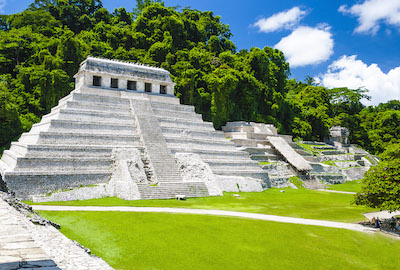
It is located in an area known as the Great Plaza, on a natural slope. It was started by the famous Mayan ruler Pakal the Great and completed by his son in the 80s of the 7th century. It receives its name from the superb amount of hieroglyphic texts and stucco reliefs that have made a fundamental contribution to the understanding of the Mayan civilization. In 1949 the tomb of Pakal was found under the temple. The building is an 8-level step pyramid and a temple that represent the 9 levels of the Mayan underworld, measuring 22.8 meters in height in total.
This splendid building has an area of about half a hectare, measuring 85 meters from north to south and 60 meters from east to west. It has wide stairways on three of its facades and was erected by Pakal on the remains of previous constructions. In the center of the Palace stands a four-section tower built entirely in masonry and with thick pillars, which is believed to have been used for defensive surveillance, although another version indicates that it may have had astronomical purposes. Its spacious patios, the number of rooms and the large decorated galleries indicate that it was the scene of great splendor.
Set of the Crosses
It is made up of three main buildings: the Temple of the Cross, the Temple of the Foliated Cross and the Temple of the Sun. All three were characterized by having been erected on stepped pyramids and by their reliefs. A dead king put king! the saying goes. The ensemble was erected to honor Chan Bahlum II on his accession to the throne after the death of Pakal the Great. The name of Las Cruces is inappropriate, since in truth the temples are representations of the tree of creation according to Mayan mythology. From the Temple of the Cross, the central panel was removed with the representation of a monster from which a corn plant sprouts, which is preserved in the National Museum of Anthropology.
The Aqueduct

It is a vaulted structure, three meters deep, that leads the waters of the Otulum River below the main square, on the eastern side of the Palace. Downstream, at the site called Bath of the Queen, there is a stone bridge. The Mayans were very skilled in building water supply systems; In July 2016 the National Institute of Anthropology and History announced the discovery of a complex hydraulic system under the tomb of Pakal the Great. It is believed that it could be related to an inscription engraved on the ruler’s tomb, which indicates that to enter the underworld he had to submerge himself in water.
Alberto Ruz Lhuillier Site Museum
This museum located in the archaeological site is named after the Franco-Mexican archaeologist Alberto Ruz Lhuillier, a notable researcher of Mesoamerican Mayan cities and discoverer in the middle of the 20th century of the tomb of Pakal the Great in the Temple of the Inscriptions of Palenque. The sample exhibited is made up of pieces rescued from the site itself, explanatory models and other aids. Among the most relevant objects there are ceramics, funeral ornaments, boards and ceremonial offerings, various sculptures, the death mask of Pakal the Great and that of the so-called Red Queen, a woman who is supposed to be Ahpo-Hel, the wife of the famous ruler.
Other buildings near Palenque
The Temple of the Count has a somewhat extravagant history, since in pre-Hispanic Mexico there were no counties. It receives that name because it was the home of the French explorer and artist Jean-Frédéric Waldeck, when he spent a season in Palenque in the 1820s; Waldeck called himself an earl. The Temple of the Count is accessed through a sloping staircase. The Temple of the Lion had a neat bas-relief, sadly destroyed, with a king with a throne in the form of a two-headed jaguar.
Tourist Attractions near PALENQUE
Cascadas de agua azul (agua azul waterfall ).
These waterfalls, for many the most beautiful in Mexico, are located in a flora and fauna protection area located in the Chiapas municipality of Tumbalá, 64 km from Palenque. The precious turquoise blue of the waters is communicated by the carbonate particles in suspension, and together with the white of the foam and the green of the vegetation, it forms a vignette of incomparable beauty.
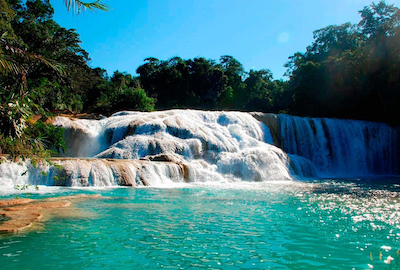
The current descends in a staggered manner, forming waterfalls and natural pools in which it is a delight to submerge. The mineral-rich waters also petrify tree trunks that are common to see on the banks or in the middle of the stream.
Aluxes Ecopark
It is a park and wildlife refuge that develops an authentically environmental concept, favoring the maximum interaction of visitors with animals. It is located near the archaeological ruins and is largely fed by the seizures of animals at risk made by the authorities.
There you can feed crocodiles and manatees, as well as be in contact with baby crocodiles, scarlet macaws and giant tortoises. They also offer boat rides and guided day and night tours for groups of at least 4 people. They are open every day of the year between 9 AM and 4:30 PM.
Balneario Agua Clara
It is an ecotourism park located 55 km from Palenque on the way to the Agua Azul Waterfalls on Highway 199. The water current is formed by the contribution of a network of rivers among which are the Shumulhá or Agua Clara, the Tulijá, Michol, Bascam and Misol Ha. In the body of water and its surroundings you can practice entertainment such as swimming, boating, horseback riding and hiking.
In the exuberant flora it is possible to admire plants such as avocado, red sapodilla, arnica, begonia, wild chincuya, bamboo and copal. It will be a little more difficult for you to see a white-tailed deer or a tepescuintle, two of the main representatives of the fauna of the place.
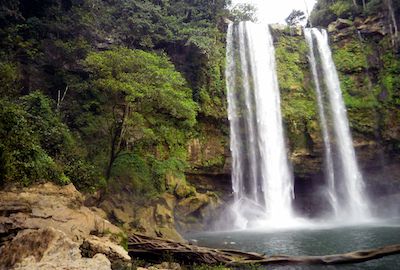
Misol-Ha Waterfall
This 30 meter high waterfall is located 20 km from Palenque; falls forming a well in which you can swim taking the proper precautions. The current forms several waterfalls in the middle of the dense vegetation and was one of the locations of the famous film Predator , starring Arnold Schwarzenegger and shot entirely in Mexican settings.
The area of the waterfall is managed by a community of ejidatarios that also offers ecological accommodation. The chol term “Misol Ha” means “sweep or fall of water”.
30 km. North of Palenque on Highway 199 is the small town of Catazajá, whose indigenous name means “valley covered with water.” Precisely, the main tourist attractions of the place are its bodies of water, especially the Catazajá Lagoon, where you can admire manatees, otters and turtles, and perhaps catch a bass, a carp or a guabina. However, the most interesting fish that lives in the lagoon is the alligator peje, an interesting species both for its role in evolution and for the value of its meat. You might even get one stuffed as a souvenir.
More Tourist Attractions
Crafts in palenque.
The artisans of the area, mainly indigenous Choles, Tzeltales and Lacondones, make beautiful and colorful pieces, ranging from regional costumes and garments with embroidery, to bags and leather backpacks. They are also very skilled in working with ceramics, wood, metals, ornamental stones and amber, and in making pyrography on leather. Another craft specialty of the town are the so-called dream catchers or dream catchers, hoops with a net, decorated with light elements, such as feathers. In these confections, the artisans of Palenque use the wide range of colors offered by the plumage of the birds in the area, although the pieces are not exactly very friendly to the environment.
Gastronomy in Palenque
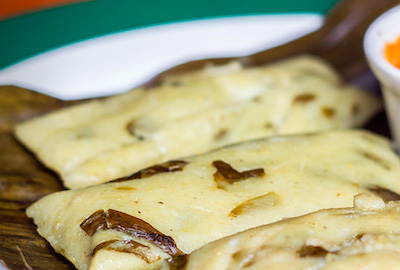
The culinary art of Palenque is strongly impregnated by pre-Hispanic cuisine and its emblematic autochthonous elements, such as corn, chili peppers and cocoa. Among the most symbolic dishes of the extensive pre-Columbian gastronomic legacy are shote con momo, a recipe based on river snails, nixtamal dough and holy grass leaves.
Also the duck in chilmol, in which the meat is cooked in a sauce of tomatoes, chili peppers and other ingredients; the old recipe is with wild duck, but due to its scarcity it has had to migrate to the hatchery and chicken. The venison salpicón, the sweat fish and the typical Chiapas tamales are other delicacies that you cannot miss in Palenque.
You will find all these specialties and others of Mexican and international cuisine in the restaurants of Palenque. One of the typical drinks is the tascalate, prepared with chocolate, corn dough and achiote. Likewise, grinder chocolate, pot coffee, chicha, balché and white pozol are common drinks. Among the sweets, those made with honey are distinguished. (View Gastronomy of Chiapas )
Traditions and Festivities in Palenque
The fair in honor of Santo Domingo de Guzmán, patron of the town, takes place during the first 10 days of August. For the occasion, the Pueblo Mágico is filled with the joy and color of traditional indigenous dances and the music of marimbas, a percussion instrument similar to the xylophone, whose modern double keyboard version was invented in 1892 by the musician and architect. Chiapas Heart of Jesús Borras Moreno. As in all of Mexico, in Palenque Holy Week is celebrated, on September 16, the feast of All Saints and the Day of the Dead, and the day of the Virgin of Guadalupe, on December 12.
More Tourist Attractions in CHIAPAS
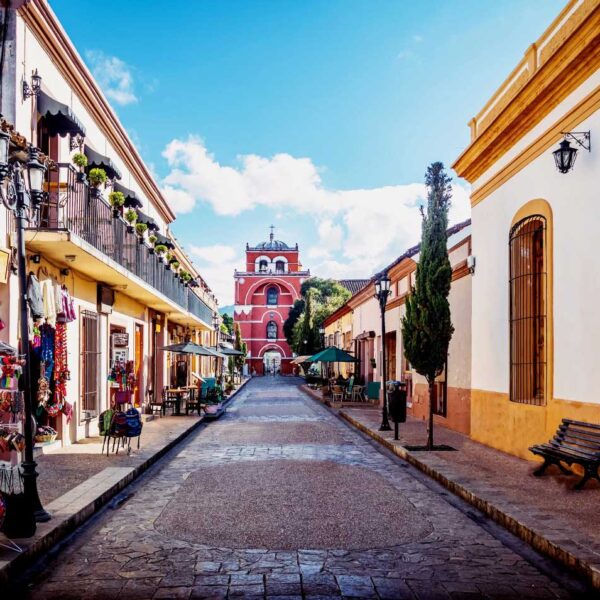
San Cristobal de Las Casas
San Cristóbal de las Casas is one of Mexico’s most beautiful colonial towns. Through its peaceful cobblestone streets, flanked by houses with slanted red tiled roofs and patios full of flowers, one discovers religious monuments with influence from Mexican and Central American colonial art, giving it a peculiar frontier town character. Indigenous people come to its busy markets from the surrounding hamlets to offer textiles, ceramics, fruits and vegetables.… Read More

Ecotourism and Adventure in Chiapas
Ecotourism in Chiapas is currently one of the most popular tourist trends in the state, with activities that try not to alter nature, thus preserving the ecosystem, flora and fauna, while encouraging sustainable development processes in indigenous communities that remain in the region. Responsibly enjoy a vacation in Chiapas and discover the hidden secrets of the state such as impressive natural sanctuaries and indigenous communities in the heart of the jungle where ancestral traditions still try to survive.… Read More
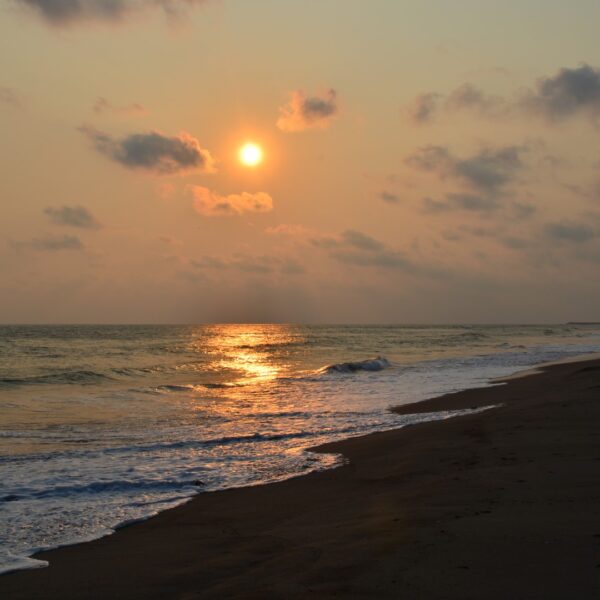
Beaches in Chiapas
The Chiapas coast offers beautiful beaches where you can do a wide variety of water sports. There are beaches of great beauty that are characterized by their tranquility and that are ideal for you to relax and enjoy nature. However, it must be taken into account that many of them face the open sea, so the waves tend to be high and you must be careful to enjoy these waters. Part of the coastal area is immersed in the La Encrucijada Biosphere Reserve, so if you are a lover of venturing into nature, this is one of the places with more options, where you can find some of the largest red mangroves in all of America that are located in a series of estuaries that make the landscape unique.… Read More
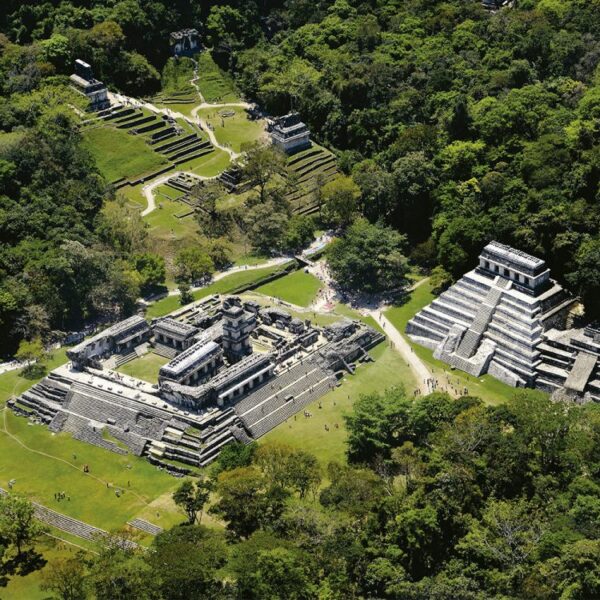
Archaeological Sites in Chiapas
In Chiapas the forests and the jungle are a beauty, spectacular settings for archaeological sites. The incredible nature that accompanies many of these areas is a plus. Visits to archaeological sites are part of nature tourism, due to the opportunity to walk around diverse natural environments. In several of these places you can see animals, or hear them. They are places that also give us the opportunity to connect with nature, and that hand in hand with culture is an excellent combination.… Read More
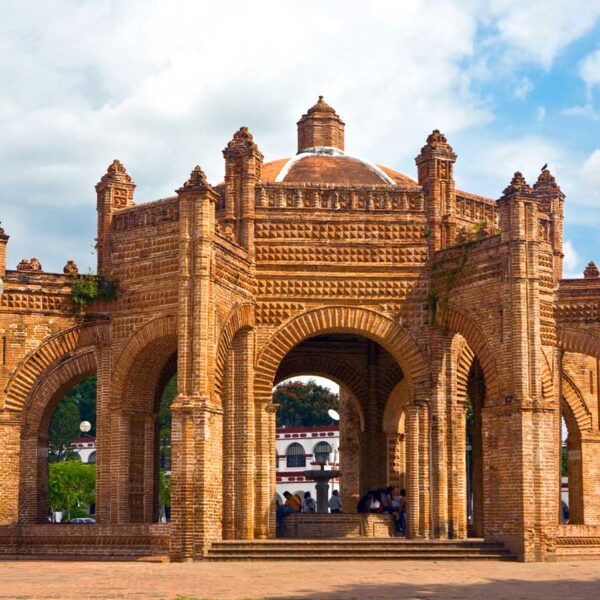
Magical Towns in Chiapas
Chiapas has 4 Magical Towns: San Cristóbal de Las Casas, Chiapa de Corzo, Comitán de Dominguez and Palenque, this recognition is given to the localities that have a special charm and unique symbolic attributes that allow to highlight the character and identity of the town, which they are manifested through their cultural heritage. Some of these characteristics can be: history, architecture, gastronomy and crafts, making your stay a magical moment.… Read More
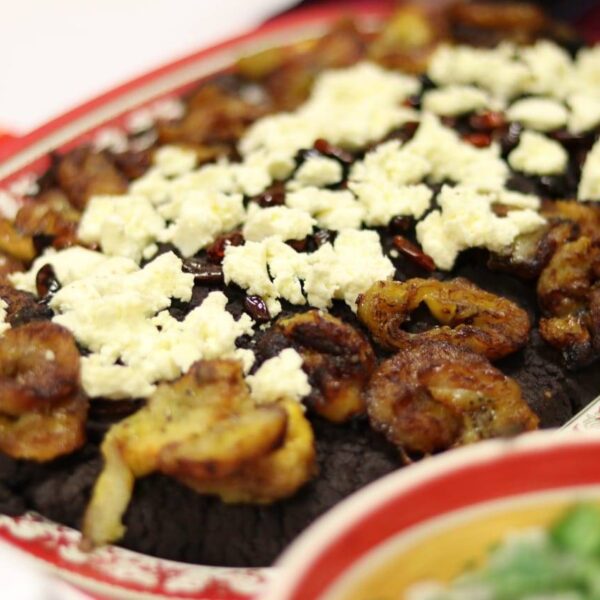
Gastronomy of Chiapas
Chiapas food has certain features of authenticity, it is a gastronomic mosaic made up of its natural biodiversity, where each place prints its own characteristics, defines tastes and creates habits; varies in each region; Likewise, it is nourished by the diversity of Mayan ethnic groups and the Zoque of Olmec origin that when combined with Spanish cuisine by the influx of Dominican monks; It results in an immense variety of dishes of miscegenation typical of the State.… Read More
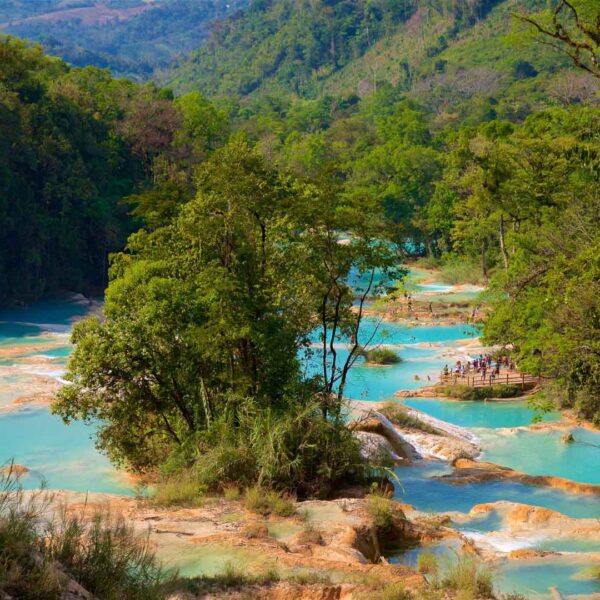
Tapachula and Tonala
Tapachula and Tonalá will amaze you with their beautiful buildings, their people and their traditions, colonial monuments, and breathtaking landscapes. Tapachula is also known as “La Perla del Soconusco” (The Pearl of Soconusco), it is a modern city with beautiful buildings built in a classic style. Located just next to the border with Guatemala, almost at the foot of the volcano Tacaná. Tonalá is a city in the southwest of Chiapas and head of the IX Istmo-Costa region; considered the third city in economic importance of the state; It is located in the transition of the Pacific Coastal Plain and the Sierra Madre de Chiapas.… Read More
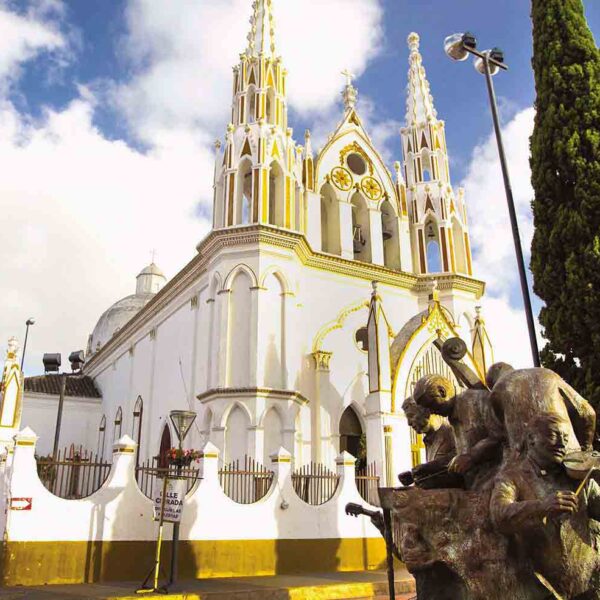
Tuxtla Gutierrez
It is the capital city of the State of Chiapas. Its climate is hot and semi-humid. Tuxtla Gutiérrez is a modern city where culture and traditions of Chiapas blend together. The streets in Tuxtla contain a combination of past and present. It is a beautiful city surrounded by lush vegetation. In downtown there is the Central Park and the beautiful Marimba Park. During the evenings you can stroll around this park and enjoy the marimba music played at the gazebo. There are many natural wonders nearby Tuxtla and the city offers very good touristic infrastructure, but most of all, the city offers the warm and kindness of the people.… Read More
Guided Tours in CHIAPAS
Flights & hotels in chiapas, more tourist attractions in mexico.
- Ecotourism and Adventure
Mexico is one of the best countries for Ecotourism as it has a great variety of flora and fauna, as well as a large number of refuges for extraordinary species. You can enjoy recreational activities of appreciation and knowledge of nature through contact with it, such as: stargazing, observation of natural attractions, wildlife and bird watching. Throughout México there are more than 176 protected natural areas, 5 of them considered by UNESCO as Natural Heritage of Humanity. Just for this and much more, we believe that Mexico is a Paradise for Ecotourism.… Read More

- Capital Cities
Folklore, gastronomy, literary culture, art and exhibitions, is what you will find in the capitals of the states of Mexico. To the north, colonial Mexico, Puebla, Guadalajara, Guanajuato, the Sonoran desert and the California peninsula. To the east Veracruz and the gulf. To the west Acapulco, Oaxaca and Tuxtla Gutiérrez. And to the south the Riviera Maya and the pyramids of Chichén-Itzá, Tulúm and Cobá in Yucatán, Palenque in Chiapas, the cenotes, and the Central American jungles.… Read More

- Magical Towns
A Magical Town is a place with symbols and legends, towns with history that in many cases have been the scene of transcendent events for our country, they are places that show the national identity in each of its corners, with a magic that emanates from its attractions ; visiting them is an opportunity to discover the charm of Mexico. The Magical Towns Program contributes to revalue a set of populations in the country that have always been in the collective imagination of the nation and that represent fresh and varied alternatives for national and foreign visitors. A town that through time and in the face of modernity, has conserved, valued and defended its historical, cultural and natural heritage; and manifests it in various expressions through its tangible and intangible heritage. A Magical Town is a town that has unique, symbolic attributes, authentic stories, transcendent events, everyday life, which means a great opportunity for tourist use, taking into account the motivations and needs of travelers.… Read More

On the Beaches of Mexico you can immerse yourself in the intense blue ocean of the Pacific bays, sunbathe on the shore of the warm and transparent waves of the Caribbean Sea in Quintana Roo or even rest on the beautiful coasts of the Gulf of Mexico. Mexican beaches hide wonderful secrets for the traveler. By visiting them, in addition to enjoying the excellent climate and water activities, you can discover splendid archaeological sites and interesting colonial cities without traveling long distances.… Read More

- Archaeological Sites
The Archaeological Zones are the cultural past of every Mexican. You will be amazed at the ambient, nature and the environment that surrounds them. Climbing to the top or being around it will take us back in time to admire every detail. México is a country of culture and traditions, many of which we have inherited from the pre-Hispanic inhabitants of this vast territory, although it is true that there were more settlements in the central and southern part of the country, it is also possible to find some archaeological remains in the north. … Read More

States Of Mexico
Mexico has an incredible diversity of landscapes, where the beauty of its beaches, internationally recognized, stands out. In its vast territory of coasts, there are beaches of unparalleled beauty, and colorful landscapes. A large network of first-class hotels and tourist services is available to visitors to these beaches. Mexico is also mystical places, dotted with archaeological testimonies inherited from its original inhabitants. Monuments made by the Mayas, Aztecs and Toltecs are located in magical landscapes, like lighthouses in an ocean of natural beauty. They offer visitors buildings that tell their history, and museums that collect their cultural heritage. And that keep alive ancestral traditions, in ceremonies and festivals, where you can enjoy cultural activities and entertainment.… Read More

The Gastronomy of Mexico has a great diversity of typical dishes, which is why it was recognized by UNESCO as Intangible Heritage of Humanity. The basic and representative ingredients of Mexican dishes are: corn, coriander, chili, beans, piloncillo, nopal and tomato. Mexican cuisine is also characterized by its sauces, which serve as an accompaniment to traditional dishes, prepared based on spices.… Read More

- Traditions in Mexico
It is practically impossible to make a meticulous, and above all, accurate selection of the places to visit in Mexico. Each place that our country houses is unique and beautiful in its own way. Mexico, with its nearly 2 million km², has a large number of scenarios to offer, as well as endless activities to do. Do not lose your way and enter the places to visit in Mexico. In Mexico, apart from the beaches and its famous archaeological sites, there are many other really interesting sites and activities that you should know. In the surroundings of the main cities you will find places full of culture and tradition, where you can spend relaxing, interesting and fun vacations. On your trip through Mexico you cannot stop obtaining souvenirs, the crafts that are made here are of the highest quality and recognized worldwide. A shopping tour cannot be missed.… Read More
Leave a Reply Cancel reply
Your email address will not be published. Required fields are marked *
Save my name, email, and website in this browser for the next time I comment.
- States of Mexico
- Animal Rescue in Mexico
The Complete Guide to Palenque
Christin Parcerisa is a lifestyle journalist with a passion for traveling. Her work has appeared in Travel + Leisure, FashionUnited, and more.
Zona Arqueológica Palenque
Unlike other archeological sites in Mexico, Palenque has a unique magic that resides in its natural location. Hidden in the deep Lacandon Jungle, these ruins, which date from 226 BC, remained a mystery for centuries, keeping the Mayan’s secrets covered with the rich flora of the state of Chiapas.
Palenque is a small town in Chiapas that has been considered one of Mexico’s 121 magical towns, or "pueblos mágicos." For a place to be considered a pueblo mágico, it must be rich in symbols and legends that have marked the country’s history and culture. Palenque was founded in the 16th century and is two hours away from Villahermosa, the state of Tabasco’s capital city, and six hours from Tuxtla Gutiérrez, the capital city of Chiapas. The archeological site is only 5 miles from the town and to get there you have to enter the preserved National Park of Palenque, a zone dedicated to the preservation of the jungle’s rich flora and fauna.
Both the archeological site and the national park are included on the UNESCO World Heritage list. They were inscribed in 1987 because of the heritage they represent, and the elegance and craftsmanship of the buildings which attest to the genius of the Mayan civilization. The site consists of 10 miles that hold 200 architectural structures and constructions.
What to Expect at Palenque
Once you arrive at the Zona Arqueológica Palenque, you are surrounded by nature. Wherever you turn your gaze, you'll see nothing but deep jungle with just a small trail between the trees. In the parking lot, there are numerous street sellers offering water bottles, natural coconuts, and coconut water, as well as traditional handicrafts. If you're interested, you might want to leave that for after the visit, since there will be a lot of walking!
To get to the ruins, follow the trail that starts at the parking lot. The path, roofed with thick, tall trees, has several stone steps you must climb to find the ancient city with its legendary stone constructions. Palenque's ruins are considered among the most important archeological sites of the Mayan civilization. Built between 226 BC and the 8th century, they weren't discovered until 1746, after being mysteriously abandoned centuries ago. Although the Mayan city was hidden for centuries, it's's known for being one of the best-conserved sites, presenting the Classic Period of the Mayan era in an exceptional way.
As you walk through the site, you'll get to see the pyramids and the Mayan palaces at the center and the thick jungle on the perimeter. If you climb to the top of one of the temples, you'll get to see the trees surrounding the site sway, evidence of all the life that resides in the jungle, and numerous colorful birds flying over the treetops. You can also listen to the wildlife sounds coming from the wilderness, especially the rumbling roar of the howler monkeys.
What to See at Palenque
Within the numerous constructions, you’ll find temples dedicated to religious rituals, other buildings built for military purposes, and others for scientific research and activities. At the archeological site are numerous hieroglyphics, the Mayan calendar, and details that reveal their culture and everyday activities.
Templo de las Inscripciones (Temple of Inscriptions)
This is probably the most famous temple here because of its opulence and greatness. It was built to become King Pakal’s sacred tomb, and when it was discovered, they even found his sumptuous sarcophagus and the late governor wearing elegant and sober clothing. The temple has a 22-foot long and 12-foot wide chamber wholly covered with red hieroglyphics and carvings that narrate Pakal’s journey to the land of the dead.
El Gran Palacio (The Great Palace)
This is the most significant building and is located at the center of the ancient city. Its strongest characteristic is the tall tower that stands out, but it’s also one of the most complex buildings of Palenque with several patios, corridors, rooms, and numerous connections with other buildings through stairways and underground passages. The palace is rich in content and messages since its walls are covered with carvings and sculptures.
Grupo de las Cruces (Group of the Crosses)
Three buildings form the complex that was built by King Pakal’s sons after his death. These buildings surround the Sun’s Plaza and are called the Temple of the Sun, the Temple of the Cross and the Temple of the Foliated Cross. Inside the temples, several carvings tell the legends the Mayans believed in and were places for worship.
Juego de Pelota (Ballgame)
The Mayan’s ball game was not just a sporting event, but a religious ritual. To play the game there were long platforms built with small vertical hoops on the walls, where the ball had to go through. The game itself was a ceremony dedicated to the Gods.
Palenque’s National Park
This zone was turned into a national reserve in 1981 to protect local flora and fauna. The archeological site is inside the park, which has an extension of over 4,000 acres. There are tours to explore the park, and some even organize hiking opportunities. Adventuring in the park can be an enjoyable experience for nature lovers who can watch several monkeys (especially spider monkeys and howler monkeys), as well as wild cats, anteaters, and even, if you’re lucky, a jaguar. This is also a paradise for birdwatchers who can get to see colorful parrots and the endangered red macaw flying freely.
Planning Your Visit
There’s a small airport in Palenque that receives flights from Mexico City on two days each week. For those who prefer a road trip, it’s only a two-hour drive from Villahermosa, Tabasco, and a six-hour drive from Tuxtla Gutiérrez. Once in town, there are several small and medium-sized hotels where you can stay. The Hotel Misión Palenque is an excellent option with comfortable rooms, a pool, a spa, and even tennis courts. For those who want to be in contact with nature, the eco-hotel Chan-Kah Resort Village offers a great experience; instead of traditional rooms, there are bungalows immersed in the jungle, so you can even listen to the monkeys howl at night right outside your cottage.
In most restaurants, you’ll find traditional Mexican cuisine, although several highlight local dishes. One of the best local dishes is called tamales chiapanecos, which are wrapped with banana leaves instead of corn husks. Some good restaurants to visit are the Chan-Kah restaurant, Winíka, or Bajlum.
Tips for Visiting
As you can imagine, walking in the jungle can get really hot and there are a lot of bugs. Even though the average temperature is just 70 degrees F, it’s very humid, so you should consider wearing light clothes, carry a hat with you, and apply sunblock. Rain can be heavy during summer, so having a raincoat is also advised. Always carry insect repellent with you, as well.
The 13 Most Amazing Maya Ruins to See in Mexico
Top 5 Must-Visit Archaeological Sites in Mexico
Top Mexico Destinations
Sumidero Canyon National Park: The Complete Guide
22 Best Things to Do in Belize
20 Top Things to Do in Diverse India
20 Top Things to Do in Mexico
UNESCO World Heritage Sites in Mexico
Top UNESCO World Heritage Sites in Southeast Asia
Teotihuacan: Planning Your Visit
National Parks in Guatemala
The Top 10 National Parks in Mexico
Tikal National Park: The Complete Guide
10 Top Tourist Places in Madhya Pradesh
The Top 15 Mayan Sites in Central America
21 Top Attractions and Places to Visit in Gujarat

Unveiling Palenque: Exploring Mexico’s Ancient Gem in Chiapas
Sharing is caring!
Unveiling Palenque: Exploring Mexico’s Ancient Gem in Chiapas
Palenque Chiapas has become an important tourist destination in Mexico, primarily known for its archeology and history, beautiful and refreshing water attractions, and succulent cuisine.
This “Magical Town” is of Mayan origin, head of the municipality of the same name located in the north of Chiapas.
The indigenous population is formed mainly by the Choles, Tzeltal, and Lacandona ethnic groups.
Palenque was founded in 1567 by the Spanish Dominican friar Pedro Lorenzo de la Nada , who managed to integrate the “Choles” community.
The valuable archaeological zone was discovered in 1740, and in 1813 the Cortes de Cádiz ranked Palenque in the category of Villa; then, the title of City was granted in 1972, and finally, Pueblo Mágico in 2015 .
Where is Palanque, Chiapas?
Palenque’s municipality borders Guatemala to the southeast. It has three border sectors with the state of Tabasco and is also a neighbor of the Chiapas municipalities of Catazajá, La Libertad, Ocosingo, Chilón, and Salto de Agua.
The closest major cities to Palenque are Villahermosa in Tabasco, about 144 Km to the west, and San Cristóbal de las Casas , 220 Km to the south.
Palenque’s climate
Palenque has a tropical, warm, humid, and rainy climate.
The annual average temperature is 27 °C, which rises to almost 30 °C in May, the hottest month, and drops during the winter as low as 19 °C in January.
During the summer, the heat can rise to 36 °C, while during the cooler lows, the temperature never drops below 17 °C on the coldest winter nights.
It rains a lot in Palenque , an average of 2,300 mm per year, and in any given month, there can be a downpour, although the heaviest rainy season is between June and October.
TOP attractions in Palenque, Chiapas
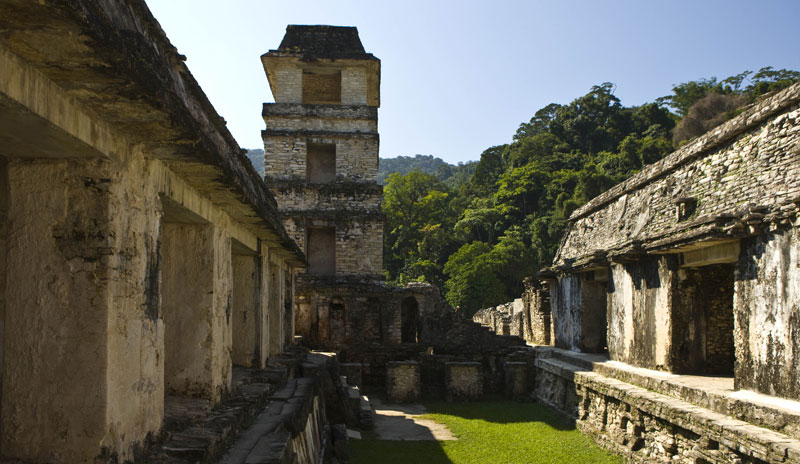
As I mentioned before, Palenque is a fundamental place in the pre-Columbian history of Mexico for its size, majesty, architectural quality, and talent displayed in its multiple artistic forms.
The imposing Mayan City is a must-see for any Mexican history enthusiast. It is one of the most visited sites by international archaeological tourism and foreign specialists.
To round off the tour to the archaeological site, a visit to the Alberto Ruz Lhuillier Site Museum is a must.
Somewhat overshadowed by the fame of Palenque, other sites of great importance are located near the City, such as Bonampak , Yaxchilán , and Toniná .
And since not everything is about archaeological ruins in Chiapas, Palenque and its surroundings offer charming natural attractions for outdoor recreation, such as the Aluxes Ecopark, the Agua Azul Waterfalls, the Misol Ha Waterfall, and the Agua Clara water park.
Another place of interest near Palenque is the small town of Catazajá .
Palenque’s Archaeological Zone: Why it’s important
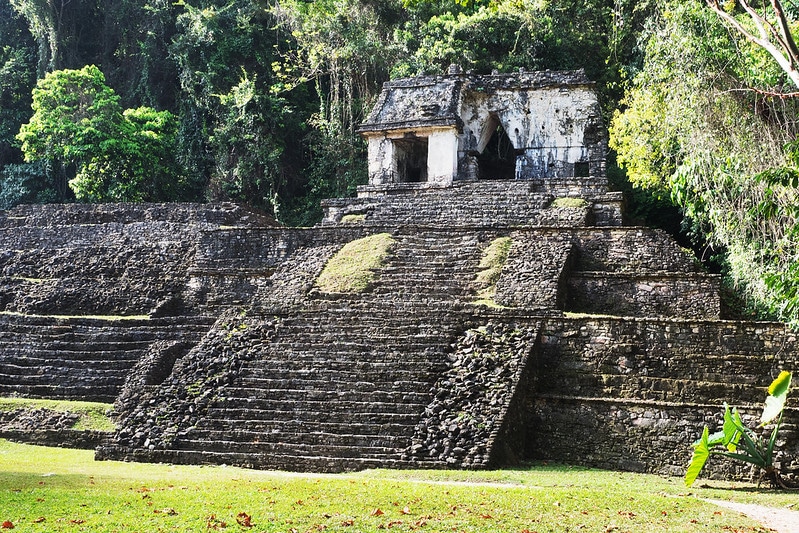
The archaeological site of Palenque is one of the most impressive of the Mayan culture, although it has only been explored and excavated in a small fraction of its extension.
It is believed that more than a thousand structures are still buried in the thicket, and those uncovered represent a remarkable exhibition of the construction and artistic skills of the Mayas.
Palenque boasts the distinction of National Park and World Heritage Site.
It was built during the Classic Period, abandoned before the conquest, and rediscovered in the 18th century.
The Temple of the Inscriptions, the Palace, the Set of the Crosses, the Aqueduct, and other buildings stand out in what has been discovered.
The Temple of the Inscriptions
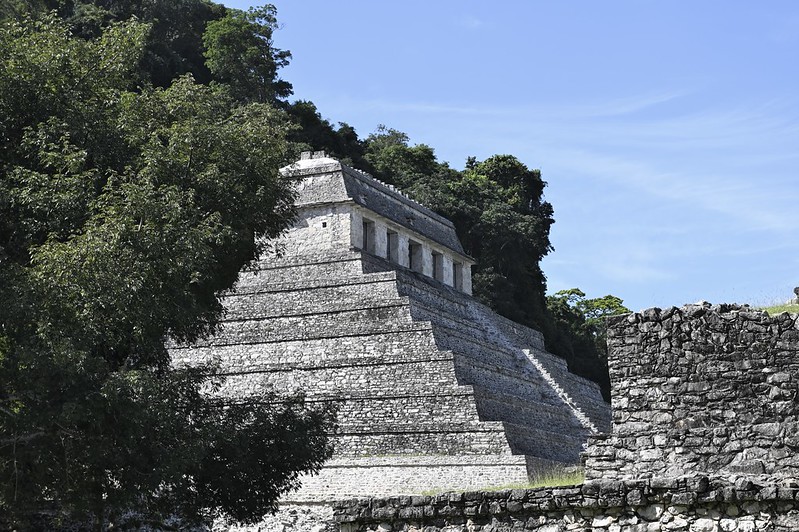
This famous temple lies in an area known as the Great Plaza on a natural slope.
It was initiated by the famous Mayan ruler Pakal the Great and finished by his son in the 80s of the VII century.
It is named for the significant number of hieroglyphic texts and stucco reliefs that have contributed to understanding the Maya civilization.
In 1949 the tomb of Pakal was found under the temple.
The building is a pyramid of 8 levels and a temple representing the nine levels of the Mayan underworld, measuring almost 23 meters tall.
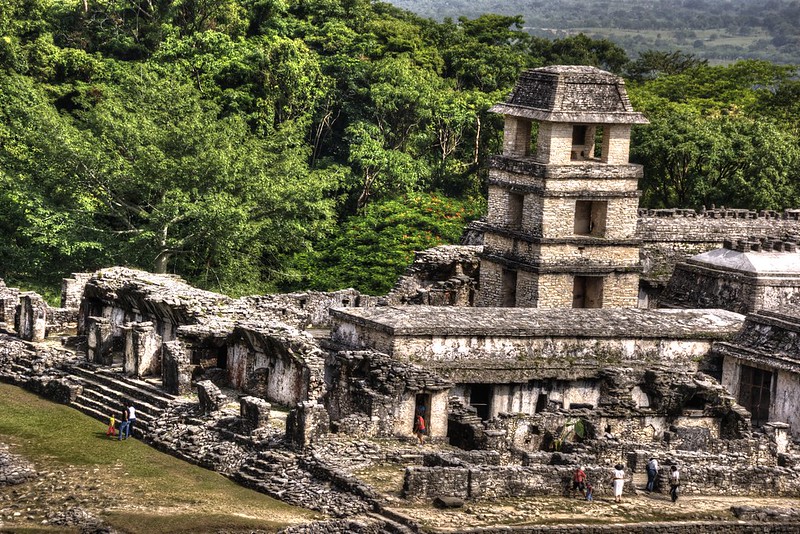
This splendid building has an area of about half a hectare, measuring 86 meters from north to south and 59 meters from east to west.
It has wide staircases on three of its facades and was erected by Pakal over the remains of previous constructions.
In the center of the Palace stands out a tower of four bodies built entirely in masonry with thick pillars, which is believed to have been used for defensive surveillance (although another version indicates that it could have had astronomical purposes) .
Its spacious patios, the number of rooms, and the amply decorated galleries indicate that it was the scene of great splendors.
Conjunto de las Cruces
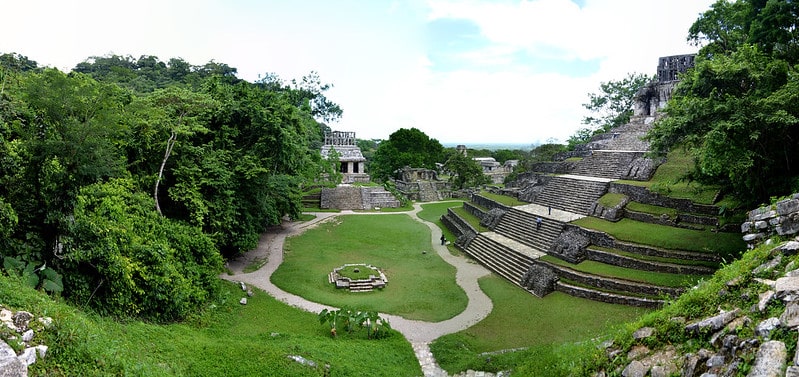
This site comprises three main buildings: the Temple of the Cross, the Temple of the Foliated Cross, and the Temple of the Sun.
All three are characterized for having been erected on stepped pyramids and for their reliefs.
The complex was erected to honor Chan Bahlum II on his ascension to the throne after the death of Pakal the Great. A dead king is a dead king! The saying goes.
You may want to read : What is The Mayan Route? A Road Trip Adventure You Cannot Miss
The name of Las Cruces is improper since the temples are representations of the tree of creation according to Mayan mythology.
The central board was removed from the Temple of the Cross with the representation of a monster from which a corn plant sprouts, which is conserved in the National Museum of Anthropology.
The Aqueduct
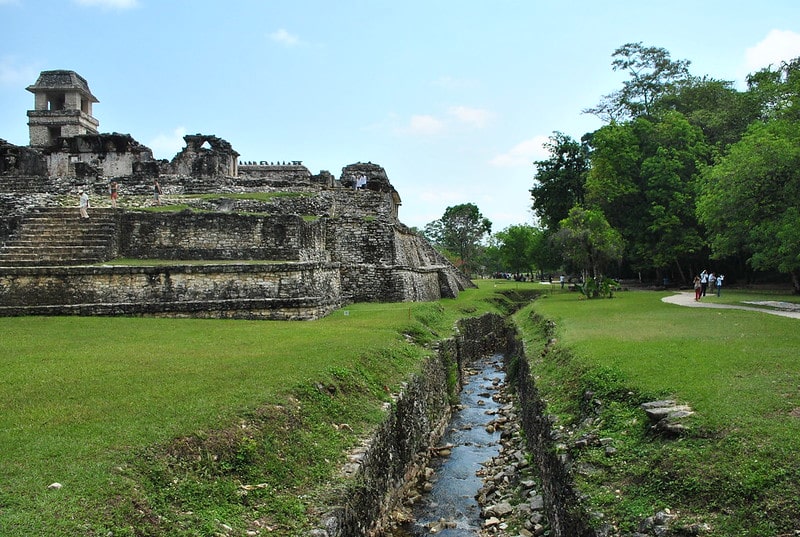
El Acueducto is a three-meter-deep structure that leads the waters of the Otulum River below the main square on the eastern side of the Palace.
Downstream, at the site called “Baño de la Reina,” there is a stone bridge. The Maya were very skilled in the construction of water supply systems.
In July 2016, the National Institute of Anthropology and History announced the discovery of a complex hydraulic system under the tomb of Pakal the Great.
It is believed that it could be related to an inscription engraved in the ruler’s tomb, which states that to enter the underworld, he had to submerge himself in water.
Other buildings of interest in Palenque, Chiapas
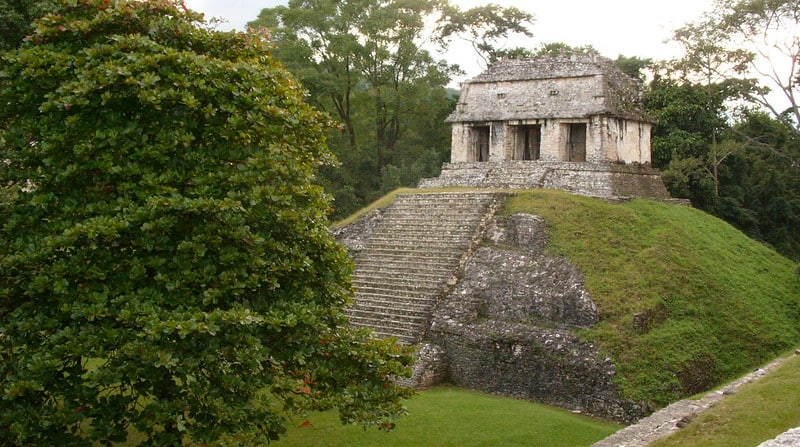
El Templo del Conde (Temple of the Count) has a somewhat extravagant history since, in pre-Hispanic Mexico, there were no counts.
A steep staircase accesses the Count’s Temple.
It is so named because it was the dwelling place of the French explorer and artist Jean-Frédéric Waldeck when he spent some time in Palenque in the 1820s; Waldeck called himself Count.
The Temple of the Lion had a neat bas-relief, unfortunately, destroyed, with a king with a throne in the form of a two-headed jaguar.
Visit the Alberto Ruz Lhuillier Site Museum
This museum in the archaeological site bears the name of the French-Mexican archaeologist Alberto Ruz Lhuillier , a notable researcher of the Mesoamerican Mayan cities and discoverer in the middle of the XX century of the tomb of Pakal the Great in the Temple of the Inscriptions of Palenque.
The exhibit comprises pieces rescued from the site, explanatory models, and other aids.
Among the most relevant objects are ceramics, funeral ornaments, ceremonial tablets and offerings, various sculptures, the death mask of Pakal the Great , and that of the so-called Red Queen, a woman who was supposedly Ahpo-Hel, the wife of the famous ruler.
Explore the Bonampak Archaeological Zone
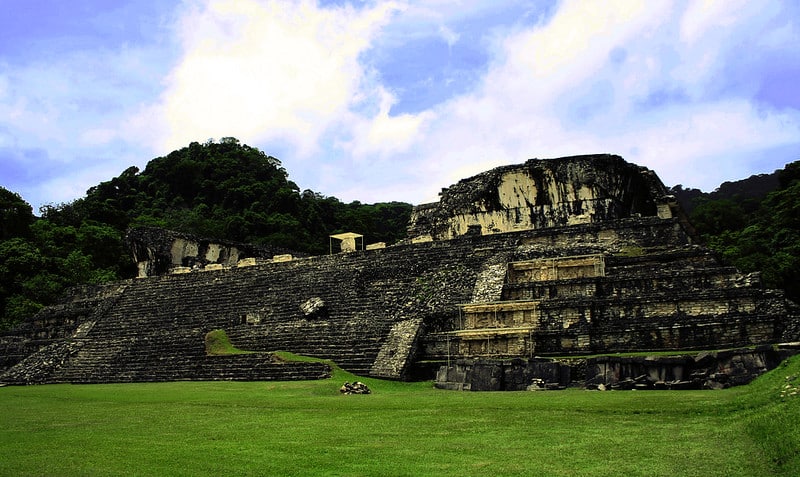
If you made the trip to Palenque Chiapas, it is worth traveling another 150 km further southeast to visit the interesting Bonampak Archaeological Zone in the heart of the Lacandon Jungle .
The great attraction of this Mayan site near the border with Guatemala is its mural paintings, made during the 8th century.
These paintings are a very neat testimony of episodes in the life of the Maya.
The magnificent images include artisans at work; musicians playing flutes, drums, and other instruments; dances, war scenes, and prisoners prepared for sacrifice.
Yaxchilan Archaeological Zone
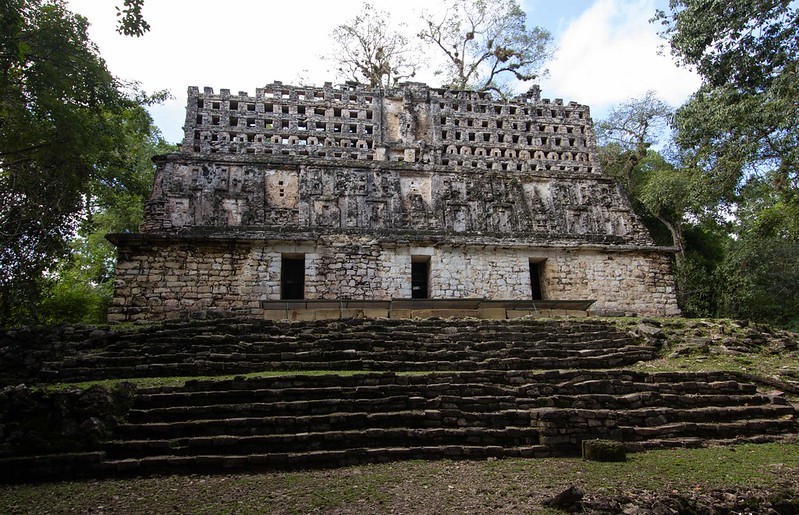
164 km southeast of Palenque is another archaeological site in front of a bank of the Usumacinta River.
Yaxchilan was an essential center of Maya power during the Classic Period, exercising dominion over Bonampak and rivaling Piedras Negras.
The site is distinguished by its artistic wealth, especially the carved stones on the lintels of the doors, and by the hieroglyphic texts that provided valuable information about the history of the City and its governmental dynasties.
The stelae, the Great Plaza, and the Great Acropolis are other impressive structures.
Toniná Archaeological Zone
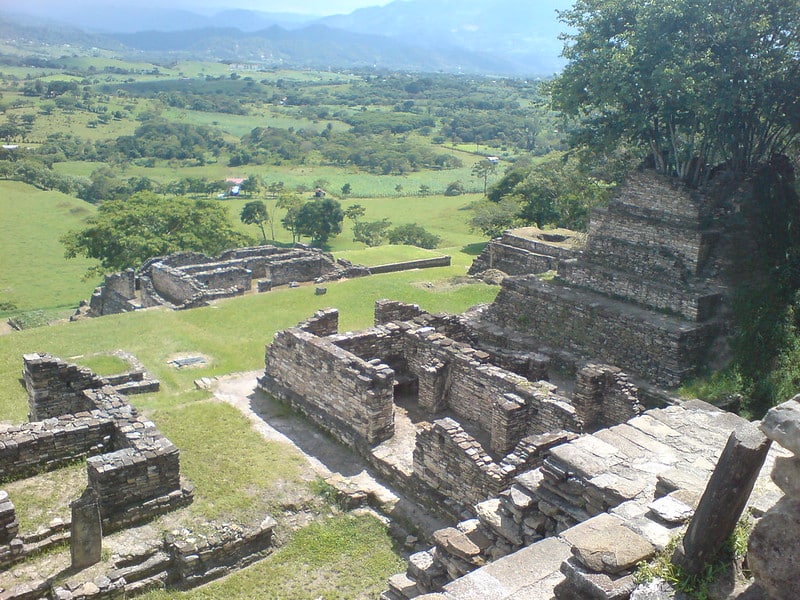
I also recommend visiting this Mayan archaeological site 113 km from Palenque, near Ocosingo.
Toniná lived its period of splendor between the VII and IX centuries, where four of the seven large platforms have been preserved.
- On the third platform, the Palace of the Underworld stands out
- On the fourth, the Palace of the Grecas and the War
- The sixth platform contains the Mural of the Four Suns, an allegory of the Four Cosmic Ages
- On the seventh platform stand out the Temple of the Prisoners and the Temple of the Smoking Mirror, the highest in Mesoamerica
Toniná has splendid artistic manifestations, mainly the high reliefs in stone and stucco and the architectural coverings to two slopes with the form of isosceles triangles.
Visit the Aluxes Ecopark in Palenque, Chiapas
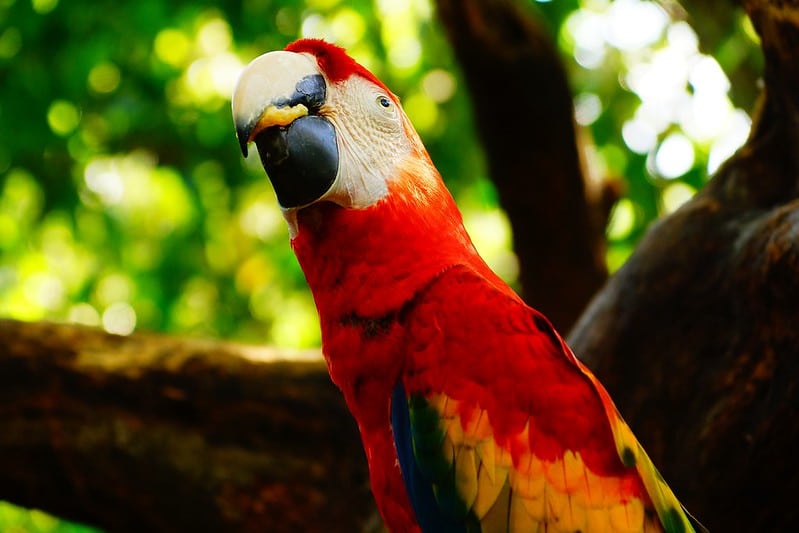
This wildlife park is a refuge that develops an authentically environmentalist concept, favoring the maximum interaction of visitors with the animals.
It is located near the archaeological ruins and is primarily sourced by the authorities’ seizures of animals at risk.
You can feed crocodiles and manatees and be in contact with baby crocodiles, scarlet macaws, and giant tortoises.
They also offer boat rides and guided day and night tours for groups of at least four. Aluxes Ecopark is open every day from 9 AM to 4:30 PM.
Admire the Agua Azul Waterfalls
These waterfalls are considered the most beautiful in Mexico and are located in a protected area of flora and fauna in the Chiapas municipality of Tumbalá, 63 km from Palenque.
The precious turquoise blue color water contrast with the bubbly particles in suspension. Together with the foam’s white and the vegetation’s green, it forms a vignette of incomparable beauty.
The current descends staggered, forming waterfalls and natural pools in which it is a delight to dive.
The mineral-rich waters also petrify tree trunks, usually seen on the banks or in the middle of the stream.
What is the Misol Ha waterfall like?
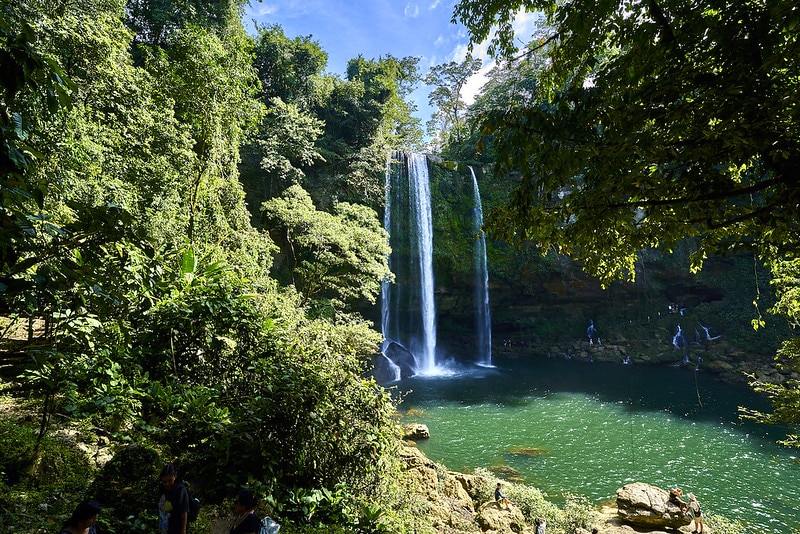
This 30-meter-tall waterfall is 20 km from Palenque; it falls, forming a pool where you can swim, taking the proper precautions.
The currents formed several waterfalls in the middle of the dense vegetation.
These were some of the locations of the famous Predator movie starring Arnold Schwarzenegger and filmed entirely in Mexican places.
The waterfall area is managed by a community of landowners that also offer ecological lodging.
Cool off at the Balneario Agua Clara (water park)
This ecotourism water park is about 54 km from Palenque on the road to the Agua Azul Waterfalls on Highway 199.
A network of 5 rivers forms the water currents: the Shumulhá or Agua Clara, the Tulijá, the Michol, the Bascam, and the Misol Ha.
You can enjoy swimming, canoeing, horseback riding, and hiking within the park and its surroundings.
In the exuberant flora, it is possible to admire plants such as aguacatillo, chicozapote colorado, arnica, begonia, wild chincuya, bamboo, and copal.
Visit Catazaja, Chiapas (near Palenque)
30 km north of Palenque on Highway 199 is the small town of Catazaja, whose indigenous name means “valley covered with water.”
In fact, the main tourist attractions of the place are its water bodies, especially the Laguna de Catazaja , where you can admire manatees, otters, and turtles and maybe catch a snook, a carp, or a guabina fish.
However, the most exciting fish in the lagoon is the pejelagarto , a fascinating species for its role in the evolution and its prized meat.
Get some souvenirs
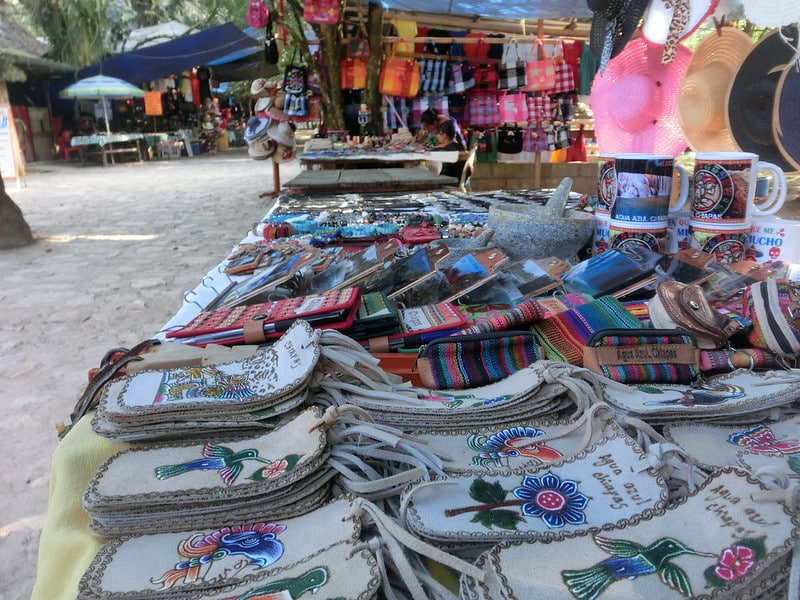
Palenque artisans, mainly indigenous Choles, Tzeltales, and Lacondones, make beautiful and colorful pieces, ranging from regional costumes and embroidered clothing to leather bags and backpacks.
They are also very skilled in the work of ceramics, wood, metals, ornamental stones, and amber and the elaboration of pyrography on leather.
Another local handicraft specialty is the so-called dream catchers , hoops with a net decorated with light elements, such as feathers.
In these confections, Palenque’s artisans use the wide range of colors offered by the plumage of the local birds, although the pieces are not exactly environmentally friendly.
Palenque Chiapas gastronomy
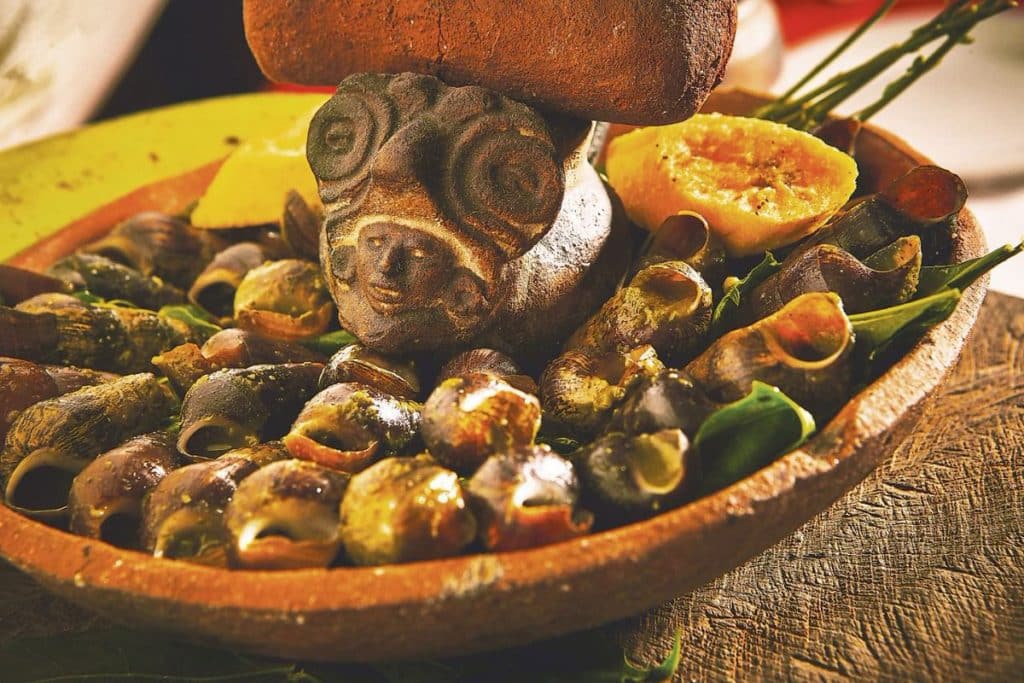
The culinary art of Palenque is strongly impregnated by pre-Hispanic cuisine and its emblematic autochthonous elements, such as corn , chili peppers , and cacao .
Among the most symbolic dishes of the vast pre-Columbian gastronomic legacy is shote con momo , a recipe based on river snails, corn dough, and hierba Santa leaves.
Also, the duck in chilmol , in which the meat is cooked in a sauce of tomatoes, chiles, and other ingredients; the ancient recipe is with wild duck, but due to its scarcity, it has had to migrate to those of hatchery and chicken.
Salpicón de venado (deer salpicón) , fish sudado and the typical Chiapas tamales are other delicacies that you cannot miss in Palenque.
All these specialties and other Mexican and international cuisines can be found in Palenque’s restaurants.
One of the typical drinks is tascalate , prepared with chocolate, corn dough, and achiote.
Other common beverages are chocolate de molinillo, café de olla , chicha, balché, and pozol . Among the sweets are those made with wild honey.
Catch one of Palenque’s festivities
The fair in honor of Santo Domingo de Guzmán, the town’s patron saint, takes place during the first ten days of August.
For the occasion, the Magical Town is filled with the joy and color of the traditional indigenous dances and the music of marimbas, a percussion instrument similar to the xylophone , whose modern version of the double keyboard was invented in 1892 by the musician and artisan from Chiapas, Corazón de Jesús Borras Moreno .
As in all of Mexico, Palenque celebrates Holy Week, Independence Day (September 16) , the feast of All Saints, the Day of the Dead , and the Virgin of Guadalupe on December 12.
Best Hotels in Palenque
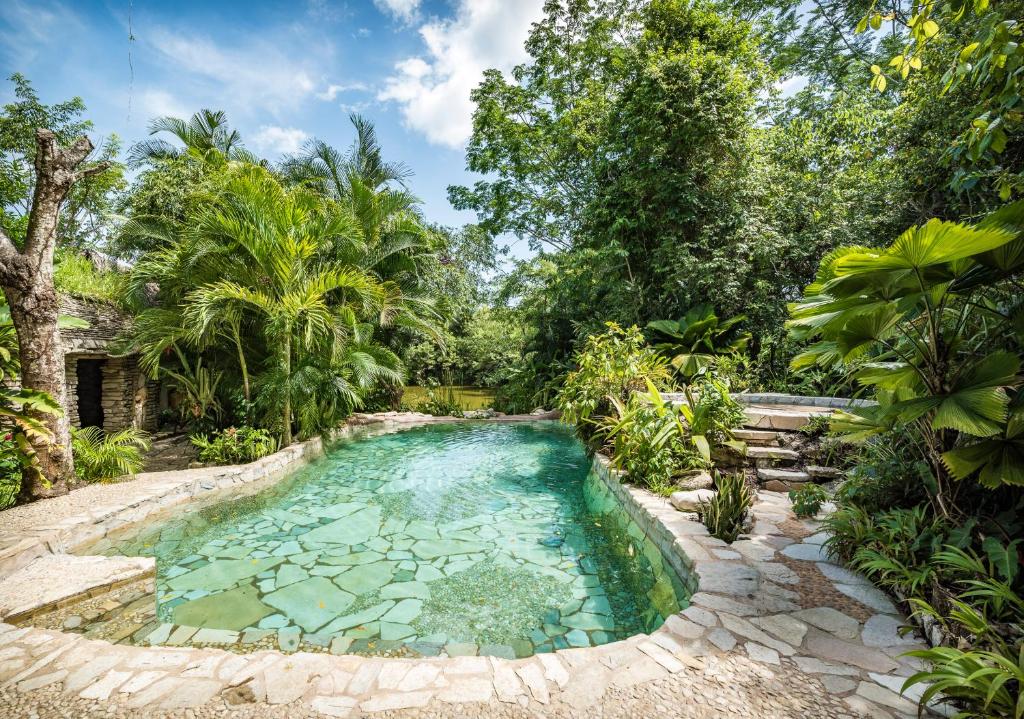
Hotel Quinta Chanabnal is a beautiful hotel just 2 Km from the Archaeological Zone; it is a paradisiacal place in the middle of the jungle, tastefully decorated with nice swimming pools.
Hotel Chablis Palenque is very clean, with all the necessary amenities and friendly staff.
Hotel Maya Tulipanes Palenque is another lodging option with good facilities and excellent service.
Other options are Mision Palenque, Chan-Kah Resort Village , and Hotel Villa Mercedes Palenque.
Recommended restaurants
Bajlum Restaurant is the best choice when it comes to pre-Hispanic cuisine; they offer great dishes such as white-tailed deer, wild turkey, and peccary.
Bajlum boasts an excellent reputation where you will live an unforgettable pre-Columbian gastronomic experience; make your reservation a few days in advance.
If exotic meat is not your thing, you can sample classic Italian cuisine at Monte Verde Trattoria and Pizzeria.
Maya Cañada Restaurant , Saraguatos , and Café Jade are other exquisite dining options in Palenque.
I hope this guide will be handy on your trip to Palenque. I wish you a happy stay among pyramids, temples, waterfalls, and fantastic food. See you next time. Vamonos!
Similar Posts
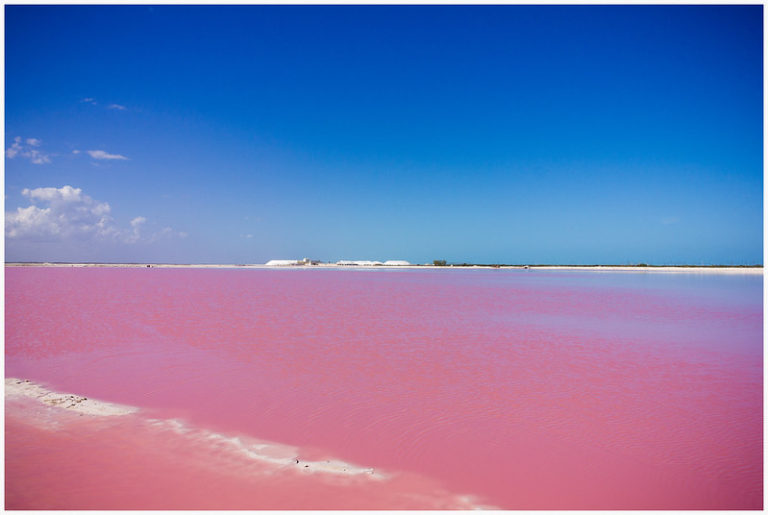
Exploring the Enchanting Las Coloradas Lagoon in Yucatan
Today, I will take you to Las Coloradas, a small fishing village in Yucatan known for its stunning pink lagoons, the reason why so many visitors come every year.
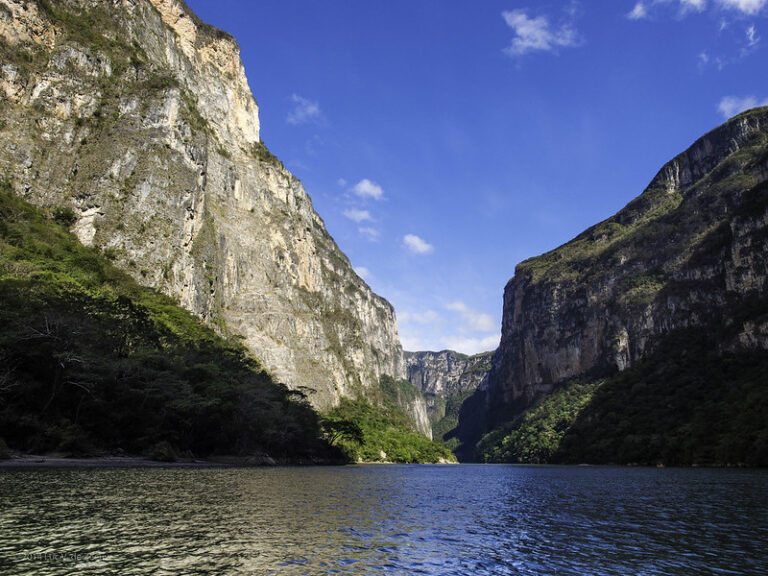
Exploring Mexico’s Best National Parks and Biosphere Reserves
With 41 Biosphere Reserves and 67 National Parks, Mexico makes an excellent option for nature and adventure lovers.
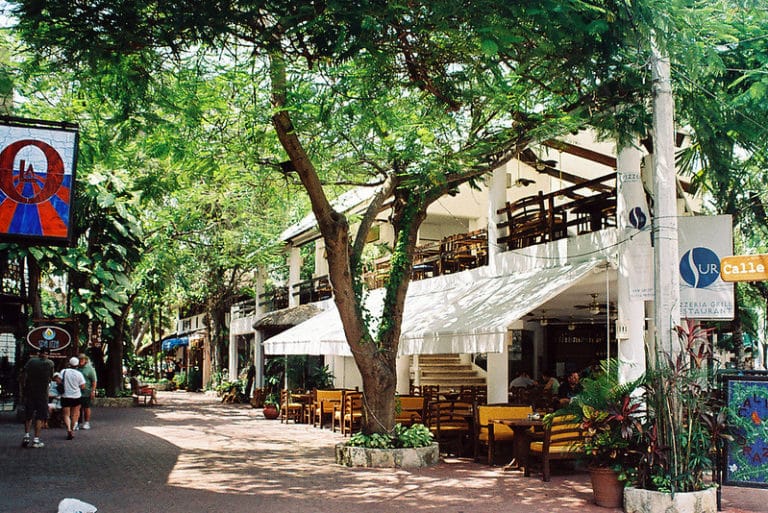
Playa del Carmen’s 5th Avenue: TOP Must-Do Activities
Playa del Carmen’s vibrant and bustling 5th Avenue, or Quinta Avenida, is an iconic destination that epitomizes the essence of Mexico’s Riviera Maya.
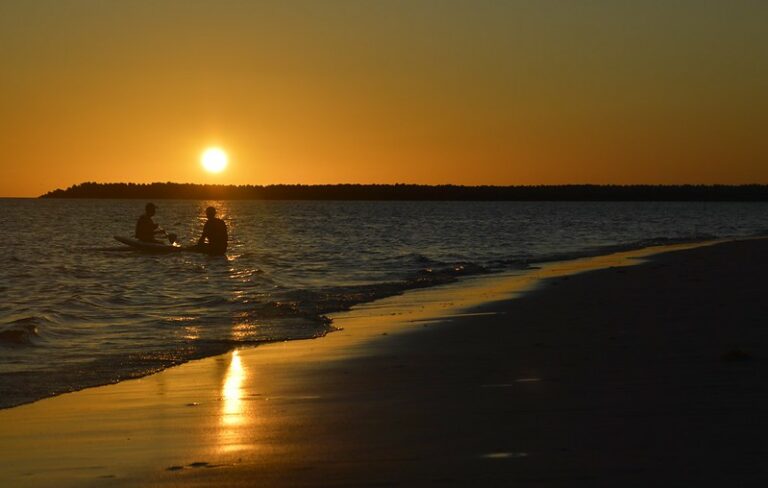
Puerto Peñasco – Rocky Point: 11 Must-See Wonders Revealed
The small Sonoran town of Puerto Peñasco, also known as Rocky Point, offers wonderful beaches, charming islets, excellent fishing grounds, and breathtaking natural landscapes
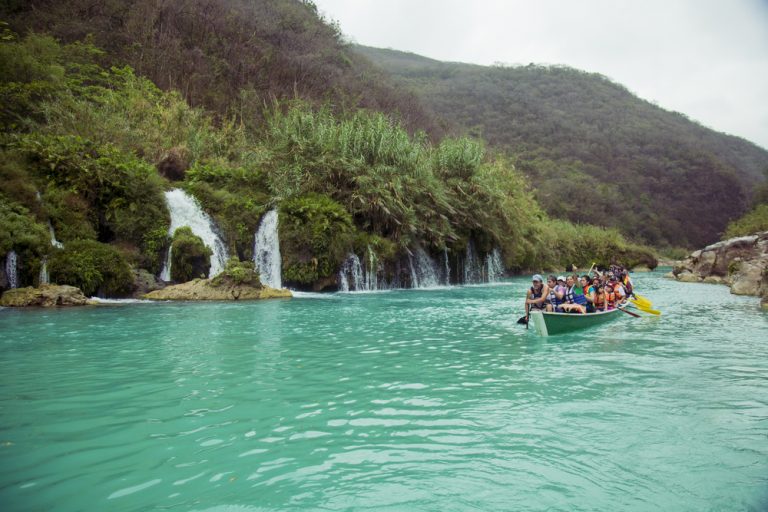
Discovering the Huasteca Potosina’s Thrilling Secrets
The Huasteca Potosina in Mexico is a synonym of beautiful and immense natural landscapes, splendidly cultivated fields, gorgeous scenic spots…
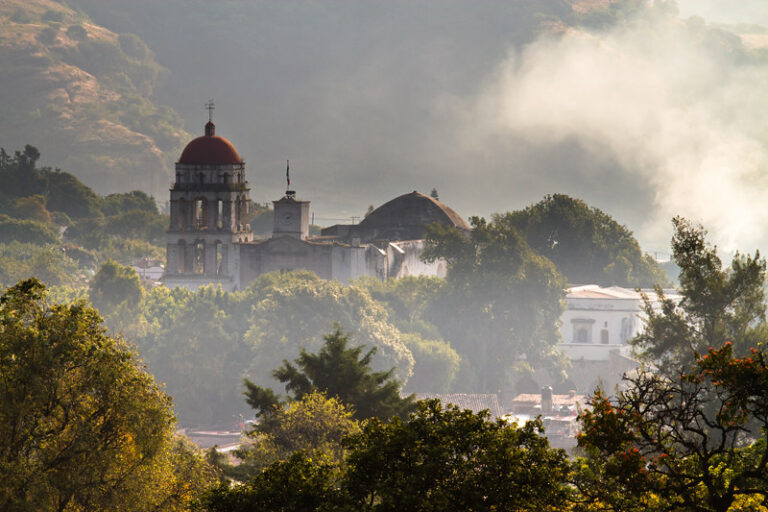
Journey to Malinalco: Revealing the Town’s 11 Best-Kept Secrets
Nestled amidst the lush, rolling hills of central Mexico, lies a charming and historically rich town, waiting to share its treasures with the world.
Leave a Reply Cancel reply
Your email address will not be published. Required fields are marked *
Save my name, email, and website in this browser for the next time I comment.
What are you looking for?

Mayan Route Gastronomy
Palenque Gastronomy
Comitán Gastronomy
San Cristóbal de las Casas Gastronomy

Palenque is one of the most notable cities of the Classic Maya period, seat of a powerful dynasty that dominated the mountains of northern Chiapas and the plains of Tabasco; territory that some researchers have now recognized as the kingdom of Lakamhá. The pre-Hispanic site is one of the most impressive archeological cities in the world. To know this town is to discover the soul of the Mayan world, understanding myths, rituals, beliefs and admire the majestic architecture of our ancestors. The town of Palenque Pueblo Mágico is located 6 km from the archaeological zone and the national park, it offers lodging services, restaurants, stores and markets. Combining the history and mysticism of the Mayan culture, this area offers an infinity of attractions of singular beauty: waterfalls, rivers and the interaction with the indigenous Lacandon communities that invite us to carry out adventure activities. All framed by the greenery of the evergreen jungle.

Places you can't miss!
There are so many secrets of Palenque that will leave you wanting to come back to this wonderful land full of myths and contrasts: the rituals, the architecture of a wonderful culture and its rich and varied vegetation. Here we mention what you shouldn’t miss when visiting this city:

Archaeological Zone of Palenque

Metzaboc Ecotourism Centers

Alberto Ruiz Lhuiller Site Museum

Los Aluxes ecological center

Agua Azul Waterfalls

Misol Há Waterfall

Roberto Barrios waterfalls

Archaeological Zones of Bonampak

Lacanjá Ecotourism Centers

Archaeological Zones of Yaxchilán
Palenque's gastronomy includes pre-Hispanic ingredients, such as chili, corn and cacao, as well as special touches to the wide variety of dishes that make up the vast culinary legacy of the Mayan ancestors. Enjoy a gastronomic experience and don't miss the following recommendations:
- Sour atol or sour pozol with chili
- Cassava in syrup or sweet potato in syrup
- Shote broth with momo
- The pacaya capeada
Our recommendations for your trip
Palenque is a city with a hot and humid climate with abundant rainfall. We recommend you to take into account the following:
- The best months to visit are from November to mid-June, when there is less rain.
- Keep in mind that April, May and June are the hottest months (between 35º to 42º). Wear cool clothing, preferably cotton, linen or a hat to mitigate the sun's rays.
- It is essential to wear comfortable shoes, sunglasses and sunscreen as well as insect repellent.
- During the months of June to the beginning of October the rains are very frequent in the afternoon and at night, so don’t forget to carry an umbrella or raincoat.
- The turquoise color of the river waters is best seen in the months with less rainfall.

How to get to Palenque?
To get to Palenque, there are several ways, either by land or by air. Here are some of them:
Approximate flight time: From Mexico City 1 hr 40 min.
- Omnibus Cristobal Colon
- Aexxa buses
Take the Pan-American Highway 190 to Ocozocoautla, when you reach the detour in the direction of Highway 145 to Mexico, take the deviation to Huimanguillo, until you reach the short road of Raudales Malpaso Highway 187, passing through Huimanguillo to Cárdenas, then Continue in the direction of Villahermosa Tabasco on Highway 180 towards Chetumal along Mexico Highway 186 until you reach the Catazajá junction, there you take the detour from Pakalná Highway 199 to the town of Palenque Chiapas.
Note: on this road there are 3 toll booths that are crossed (Ocozocoautla - Huimanguillo - Villahermosa and the approximate cost is $ 350.00)
WHY CHOOSE PALENQUE?
- Because it is a starting point to get to know the Mayan Forest of Chiapas and the Mayan Route in general.
- For its exuberant vegetation and fauna.
- For the wide variety of tourist attractions.
- For its archaeological wealth.
- Because it is a border city with Guatemala.
- For being a guarantee of unforgettable experiences.
With its characteristic hospitality, the people of Chiapas offer the best of themselves to visitors. The varied ethnic composition of the State is one of its greatest assets, so getting in touch with its people is a better understanding of one of the most complex areas of Mexico.

Capacity Max. 300 people Assembly: Auditorium.

Capacity Max. 340 people Assembly: Auditorium.

Capacity Max. 250 people Assembly: Auditorium.

Capacity Max. 100 people Assembly: Auditorium.

Capacity Max. 150 people Assembly: Auditorium.

VIP room 300 people Assembly: Auditorium.
Was this information useful to you?
Leave a comment
Related posts.
San Cristóbal de las Casas
Comitán de Domínguez
Tuxtla Gutiérrez
Tapachula de Córdova y Ordóñez
- Mexico City
- Copper Canyon
- Guadalajara
- San Cristóbal de las Casas
- San Miguel de Allende
- 5 Days in Mexico City
- 10-Day Copper Canyon by Train
- 10-Day Guanajuato Road Trip
- 10-Day Yucatan Road Trip
- 10-Day Oaxaca Road Trip
- Playa del Carmen
- Punta Allen
- Isla Mujeres
- Cozumel Island
- Holbox Island
- Puerto Escondido
- Hot Springs
- Mayan Ruins
- Mountains and Valleys
- Wildlife Experiences
- Best Mexican Foods
- Best Mexican Movies
- Best Books about Mexico
- Mexican Artists
- Mexico Fun Facts
- Mexico Historical Facts
- Mexican Holidays
- Day of the Dead in Mexico
- Pueblos Mágicos in Mexico
Palenque Ruins: My Guide to Chiapas’ Pyramids
- by Nellie Huang
Chiapas is home to one of the most spectacular Maya archaeological sites: Palenque. Here’s a everything you’d need to know about visiting the Palenque ruins.
Located in the southern Mexican state of Chiapas , the ancient city of Palenque is widely regarded as one of the most impressive Mayan ruins in Mexico . Yet, it receives a fraction of visitors compared to famous sites like Chichen Itza and Tulum ruins . Once buried under thick jungle growth, the massive complex remains only partially restored, with vines dangling over palaces and roots jutting out of steep pyramids.
Palenque was an important Mayan city during the Classical period from 500 AD until it was abandoned at 900 AD. Palenque’s mightiest ruler, King Pakal, who reigned for 80 years, chose this spot to build his palaces and ceremonial complexes. Today, only 10% of the area has been excavated , but you can already get a sense of the grandeur of this ancient city.
Since moving to Mexico, I have visited countless archaeological sites — and the Palenque ruins remain my favorite. To help you plan your trip here, I’ve compiled a detailed guide to Palenque ruins: from how to get there to which tour to take and where to stay.

Table of Contents
- Why Visit the Palenque Ruins?
Palenque Pyramids Facts
Best time to visit palenque ruins.
- By Air
By Day Tour
How to get to palenque ruins from town, palenque ruins entrance fees, palenque hours, how much time to visit palenque, do you need a tour, best palenque tours, see pakal’s tomb in temple of inscriptions, see the red queen’s tomb, get lost in the palace.
- Admire the Carvings on Temple of the Sun
- Climb up Temple of the Cross
- Visit the On-Site Museum

Frolick in Agua Azul
Admire misol-ha , swim in roberto barrios, visit the aluxes eco park, where to eat at palenque, where to stay near palenque ruins, visiting palenque with kids, what to pack for palenque, rules at palenque, final tips for visiting palenque, enjoy your trip to palenque ruins, a guide to the palenque ruins, why visit the palenque ruins.
Visiting Palenque is one of the top things to do in Chiapas, for good reason. Palenque stands out from other Mayan ruins in Mexico because of its incredibly preserved structure in the middle of the jungle. The hieroglyphics found in the Palenque ruins also gave important insights for historians to understand what life was like during the Mayan civilization. Because of its historical significance, Palenque was declared a UNESCO World Heritage Site .
What I love most about the Palenque ruins is its pristine, natural setting . Nestled at the base of the Sierra de Don Juan, alongside verdant lowlands replete with flowing streams and cascading waterfalls, Palenque’s original Maya name, Lakam’ha , aptly translates to “Place of many Waters.” Wandering through the Palenque ruins, you’ll undoubtedly notice the gurgling streams and refreshing waterfalls that dot the dense jungle.
The national park that surrounds the Palenque ruins is also home to a myriad of wildlife: you’ll probably hear the yowl of howler monkeys, smell an iguana nearby, and see scarlet macaws soaring overhead. Unlike other popular Mayan ruins where you’ll have to jostle with the crowd, Palenque allows you to soak up all its history, in a calm and peaceful setting backed by nature.

Between 500 and 900 AD, the site of Palenque thrived as a bustling city, reaching the pinnacle of its influence during the 7th century. Palenque’s prosperity was attributed to its capable rulers, who oversaw the construction of impressive pyramids and palaces, which still stand today.
The most famous king who ruled Palenque was Kinich Janaab I, also known as Pakal the Great (603 – 683 AD). Ascending to the throne of Palenque at the tender age of 12, Pakal started a dynasty that transformed Palenque into a thriving trading and political center in the Mayan civilization. His reign endured until he died at 80.
The region saw various cities, big and small, vying for supremacy, with prominent contenders being Calakmul, Tikal, and later Tonina (now an archaeological site near the Palenque ruins). Sadly, Palenque’s final downfall came when it was defeated by the city of Tonina.

The best time to visit Palenque Ruins is in the dry season, which runs from November to April . The weather is drier: there’s less chance of rain, and the temperature is milder. But keep in mind that it’s also the peak tourist season, so there might be more crowds compared to other times of the year.
I visited Palenque in May, at the start of the wet season (May to October) but the weather was perfect. While this season does bring more rain and humidity, it also offers some advantages. The landscape is lush and green, making for beautiful photos and a more picturesque setting. Additionally, the rainy season sees few tourists. Just be prepared for occasional heavy rain showers.

How to Get to Palenque
By air .
Palenque has a small domestic airport, however flights are not frequent and they only fly out of Mexico City. The other airport near Palenque, Villahermosa Airport (VSA) is 133km away in Tabasco. It’s a small airport and planes that land there tend to be smaller.
There are regular flights from Mexico City, Cancún , Mérida , Monterrey and Guadalajara. ADO runs a direct service in comfortable minibuses from Villahermosa airport to the bus terminal at Glorieta de la Cabeza Maya in Palenque town. Check for flights.

The closest tourist town to Palenque is San Cristobal del las Casas , which is just about 3hours 20minutes away by car. However, the road between San Cris via Ocosingo to Palenque is not safe mostly because of road blockades and armed gangs patrolling this stretch of the road.
You can catch the overnight ADO bus, which takes a detour via Tuxtla Gutiérrez. The journey takes much longer, around 7 hours, but ADO bus takes the longer and safer route to Palenque. You can save a night of accommodation and arrive in Palenque in the morning. Book your seat here.

Another way to get there is to book a day tour from San Cristobal de las Casas that will also bring you to a few waterfalls on the way (I’ll talk more about the waterfalls below). These day tours include transportation, admission, and a guide in Palenque. It’s a great option if you want to learn more about the Palenque ruins and have someone else handle the logistics.

The Palenque ruins are located about 7km (miles) away from Palenque town, where most hotels and restaurants are located. To get to the Palenque Ruins from the city center, you can take the colectivo minibus with a sign that reads ‘Ruinas’.
They depart from the ADO bus terminal every 15 minutes and make stops in town along the way, operating from 7:00am to 7:00pm every day. Tickets only cost 40 MXN (US$2) and the Colectivo takes you directly to the entrance of Palenque ruins. Generally, you can wait for the ride anywhere on the road leading to the ruins and just flag down the driver.

When you enter Palenque, you have to pay two separate entrance fees. The Palenque National Park charges 50 MXN (US$2) for admission ; it’s the area surrounding the archaeological site.
Then it’s an additional 90 MXN (US$4.50) per person to visit the Palenque ruins . This includes admission to the museum on the main road. There’s no need to book your tickets in advance.
On Sundays, it’s free for Mexican citizens and foreign residents of Mexico (as with all archaeological sites in Mexico). Avoid visiting on Sundays as it tends to be more crowded.

The Palenque Archaeological Site is open every day from 8am to 5pm, 365 days a year. The last entry is at 4pm. The site staff don’t allow any leeway for this time. The museum opens from 9 am to 4 pm, Tuesdays to Saturdays. Make sure you time your visit to coincide with those days.
The best time to visit Palenque is early in the morning, around opening time. This is when the site is the least crowded and you can avoid the heat of midday. I was one of the first to enter the Palenque ruins when they opened; and it was spectacularly seeing the sun piercing through the mist that hovered above the pyramids.

You could easily spend a whole day at the Palenque Ruins, but if you’re short on time, I would allocate at least 3 hours. Of course, this all depends on your interests and how much detail you want to go into while exploring the site.
The on-site museum itself can take up to an hour or so each. It’s absolutely worth visiting; the exhibit on the Red Queen is particularly interesting (scroll down to read more). If you’re looking to eat lunch at the ruins, that will take some time too.
Palenque town itself is a modern city with not much to see; all the interesting sights lie outside the city. I spent three days in Palenque and that gave me enough time to explore the ruins and visit all the waterfalls nearby. In the intense heat, it’s really refreshing to dip in the nearby Agua Azul and Roberto Barrio, considered some of the most beautiful waterfalls in Mexico .

At the entrance of Palenque ruins, you have the option of hiring a guide for an in-depth tour. A good guide can make a big difference. The Maya guide associations offer private, two-hour tours in English for 1300 MXN (US$65) starting at the main upper entrance. For a Spanish speaking guide, the price is around 800 MXN (US$40) depending on group size
If you are visiting Palenque without a guide, I highly recommend that you read up on the history behind the ruins before going as there is limited information inside the park.

If you’re just doing a day trip here from San Cristobal de las Casas, I suggest booking a day tour. Most day tours to the Palenque ruins will also bring you to the beautiful Agua Azul and Misol-Ha waterfalls (read about them below). Both waterfalls are breathtaking and cannot be missed if you’re in the area.
This tour for instance has good reviews. It includes a guide, transportation from San Cristobal de las Casas, pickup and drop off at your hotel, and entrance fees for both waterfalls. The only downside of taking a tour is you only get a certain amount of time at each place.

Things to Do in Palenque
Here are some of the key pyramids, temples, and sites you should visit when exploring the Palenque ruins. Besides exploring the site, some of the best things to do in Palenque lie in its vicinity.
This is one of the most famous structures in Palenque. As you venture through the entrance, the first thing you’ll see is a majestic row of pyramid-shaped structures. Among them, the most imposing is the Templo de las Inscripciones , which houses the burial ground of King Pakal.
This eight-story pyramid boasts a central staircase that guides you to a cluster of small chambers. Adorning one of its inner walls are three panels adorned with intricate Maya inscriptions, narrating the rich history of Palenque. Mexican archaeologist Alberto Ruz Lhuillier bestowed the temple’s name in honor of these unique carvings.
Beyond these inscriptions, a staircase ascends to Pakal’s burial site, which is presently not open to the public. An accurate replica of Pakal’s tomb and his mask can be found in the Museo Nacional de Antropología , one of the best museums in Mexico City .

Adjacent to the Templo de las Inscripciones stands Templo XIII, the final resting place of the Red Queen , Tz’ak-b’u Ajaw, the wife of King Pakal. In 1994, archaeologists unearthed her tomb, revealing her remains colored red due to cinnabar, along with a trove of 1000 jade pieces and an exquisite malachite mask.
Today you can enter the chamber where her tomb was found through a stone walkway, but the chamber is empty. You can see a replica of her mask are on display in the on-site museum.

Diagonally opposite the Templo de las Inscripciones is El Palacio (which translates to mean “Palace”), a monumental complex used for ceremonial and political functions, including hosting foreign dignitaries. The sprawling structure comprises a labyrinth network of 12 rooms interconnected by a web of corridors and subterranean passages.
The palace’s crowning jewel is its tower — a four-story structure that offers panoramic views of the surrounding landscape, although entry into the tower is restricted. Archaeologists believe that during the winter solstice, royalty may have observed the sun’s rays from this vantage point. Adjacent to the palace, a stream flows towards an aqueduct, reputed to hold over 50,000 gallons of freshwater.

Admire the Carvings on Templ e of the Sun
To the southeast of the Palace, within the Grupo de las Cruces (Group of the Crosses), lies a cluster of temples devoted to Palenque’s trinity of gods. These three pyramids were masterminded by Pakal’s son, Kan B’alam II.
Among them, the Templo del Sol , or Temple of the Sun, stands out with its remarkable roofcomb. Inside, you’ll encounter impeccably preserved carvings depicting the birth and ascent to the throne of Kan B’alam II. Some suggest that this astonishing structure hints at the influence of local hallucinogenic mushrooms on Palenque’s builders.

Climb up Templ e of the Cross
Ascend the steep steps of Templo de la Cruz, or the Temple of the Cross, to enjoy the finest view of Palenque. From this elevated perch, the vast archaeological site sprawls beneath you, framed by lush greenery in the distance.
Kan B’alam constructed this temple to house panels commemorating his ascension to the throne after King Pakal’s passing. The bas-relief carvings also narrate Kan B’alam’s ancestral lineage and the origins of his dynasty.

Visit the On-Site Mus eum
As with other Mayan ruins in Mexico , all the precious masks, jewelry and artifacts that have been dug out here are on display at their on-site museum. It’s best to see the ruins first and leave the Museo del Sitio for the last as it’s located at the bottom of the hill. I took the trail behind the Aqueduct to a series of unrestored ruins, hanging bridge and swimming hole; it eventually led to the museum.
The spacious, climate-controlled sanctuary showcases artifacts excavated from the ruins and presents historical insights in both English and Spanish. A highlight not to be missed is the special exhibition dedicated to the Red Queen , providing a glimpse into the discoveries from her tomb, along with captivating videos documenting the excavation process.

Things to Do Near Palenque
There are three epic waterfalls near Palenque that are absolutely stunning and within easy access from the town. After a day of exploring the Palenque ruins in the tropical heat, you’d want to take a refreshing dip in these waterfalls to cool off. If you’re coming from San Cristobal, I suggest booking a day tour , so you don’t have to worry about transport and you can visit all three falls at one go.
Considered one of the best waterfalls in Mexico , Agua Azul is a spectacular cascade just an hour from Palenque. The name translates to “blue water,” Agua Azul is famous for its stunning crystal clear blue tones . However, this color is only visible during the dry season (October to April). During the rainy season (May to September), the consistent rain will make the water look brown. When I was there, the water was so brown and turbulent that swimming was allowed.
If you’re visiting during the dry season, don’t forget your swimsuit, towel and dry bag!There are life jackets rentals if you’re not a strong swimmer. Water shoes are also highly recommended as the rocks to walk on can be very slippery. It takes around 2 hours from Palenque to get to Agua Azul.

Misol-Ha is the largest waterfall in Palenque , at over 110 feet (35m) high. Misol-Ha stands out from the other waterfalls because it has a single drop, so you can explore the cool networks of caves behind the falls. You are allowed to swim in the plunge pool at the bottom of the waterfall. From Palenque, the colectivo takes about 40 minutes at 90 MXN (US$5) per person. The entrance fee is 30 MXN (US$2), although sometimes an additional 10 MXN maintenance charge is also applied.

This is my favorite waterfalls in Palenque! Although it’s not as well known as Agua Azul, the Roberto Barrios waterfall is less crowded and has many pools for you to relax in. For those who are more adventurous, there are spots to jump into the water. There are a few food stalls and amenities like washrooms at the Roberto Barrios Waterfalls, however there are no lockers so keep your valuables safe.
It costs 30 MXN (US$2) for the entrance fees. There are tours that bring you to both the Palenque Ruins and Roberto Barrios. Book here. If you have time, the cheapest way to get there is public transport. The colectivo only costs 50 MXN (US$3) one way and takes around 45 to 60 minutes from Palenque center.

If you’re interested in wildlife, the Aluxes Eco Park is a great place to visit, especially with kids. The park is a 10 min colectivo ride away from the Palenque ruins. All of the animals in the eco park are rescued and the entry fees collected are used to support conservation efforts and the continuation of rescuing wild animals that are abused or abandoned. Admission costs 150 MXN (US$8) per person.

There are a few different options for food right by the Palenque ruins entrance: If you’re looking for something quick and affordable, there’s a row of restaurants in the carpark. Otherwise, wait till you get back to Palenque town for lunch/dinner.
Tropi Tacos
A budget friendly restaurant close to the central square with lots of tacos options to choose from. Make sure to try their agua de guanabana , a drink made with water, sugar and the guanabana fruit (similar to a guava). Read reviews.
Close to Palenque ruins, Bajlum is an upscale spot featuring unique dishes inspired by the cuisine during the Mayan civilization. The family run restaurant uses locally sourced ingredients and rare meats like boar and stag.
Located along the road to the Palenque ruins, El Panchan has live music and spectacular fire shows at night. There are a variety of Mexican and Italian food options on the menu and the price is not expensive.

There are two main areas to stay in Palenque: the city center and the area along the road to the Palenque ruins. Staying in the city center offers more amenities and food options, on the other hand the hotels along on the road to the ruins are surrounded by nature and you can even hear the howler monkeys at night!
Luxury: Hotel Nututun Palenque
Hotel Nututun Palenque is a 4 star hotel in Palenque that offers a comfortable stay for families, couples and friends. Surrounded by beautiful nature, the Hotel Nututun Palenque has air conditioned rooms, swimming pool, restaurant, onsite parking and free Wi-Fi. Just a short 10 minute ride away from the Palenque ruins. Check rates here.
Mid Range: Axkan Palenque
Axkan Palenque is a great option to stay without breaking the bank. Located just outside of town, you can catch the colectivos outside the hotel that head to the ruins. Amenities include free Wi-Fi, a swimming pool and restaurant on site. Check rates here.
Budget: Cabañas Kin Balam
Cabañas Kin Balam is conveniently located just 5 mins away from the Palenque ruins. Cabañas Kin Balam offers affordable yet charming cabins surrounded by gardens and an outdoor swimming pool for guests to relax in. Check rates.

The Palenque ruins give kids a chance to see Mayan history up close and learn how ancient Mayan rulers used to govern their people. That said, Palenque is a huge archaeological site with a lot of jungle surrounding it, so watch the little ones and make sure they don’t wander off into the wilderness.
If you’re traveling with younger kids, I suggest carrying them in a sling or hiking carrier. It would be a pain to transport tiny toddlers in a stroller on the rocky, earthy trails. Pack lots of water, hat, and maybe an umbrella for kids who don’t do well in the sun.
The swimming holes and pools at the waterfalls in Palenque are also a hit for kids to splash around and play in. Most of the restaurants and hotels around Palenque are also catered to families and kids.

Palenque is in the middle of the jungle and the weather can get very hot and humid. Don’t forget to bring a water bottle, insect repellant, a hat and sunscreen for your day of exploring the ruins. For a whole day of exploring and walking, comfortable walking shoes are recommended.
The walking isn’t too difficult as it’s mostly flat. You won’t need hiking boots. I wore my Teva sandals for the whole day and they were fine. Climbing the Chiapas pyramids can be tedious, but absolutely doable for people of all ages — my daughter loves climbing pyramids!
Here’s the list of what I packed/wore:
- Teva sandals
- Hiking t-shirt
- Hiking shorts
- Lightweight daypack
- Sunscreen – SFP50+ if possible
- Wide-rimmed hat
- Water bottle (2 liters)

The Palenque Ruins is a protected UNESCO world heritage site, in order to maintain the archaeological park, here’s a list of rules:
- Smoking is not allowed anywhere within the park.
- Stay within the designated areas and entering the restricted areas is not allowed.
- You can climb and enter some of the Chiapas pyramids, however, depending on the current regulations.
- Picking or cutting down any of the vegetation are not allowed within park premises.
- Do not litter in the park.
- Do not feed the wild animals.
- Do not graffiti, touch, lean or sit on any archaeological monument.
- Drones and unauthorized filming for commercial purposes are not allowed.

- Arrive just as gates open at 8am to avoid the crowds. Book an early access tour if you want to be the first through its gates!
- Take plenty of water and snacks with you. There are many vendors selling cold drinks in the archaeological site, just make sure the bottled drinks are sealed before opening them.
- Wear sunscreen, a hat, and comfortable shoes – it gets hot!
- Be careful when you’re climbing these Chiapas’ pyramids, some steps are rocky and uneven.
- You will need cash for the entrance fees, so make sure to bring some Mexican Pesos with you.
- You might encounter locals selling mushrooms along the road to the ruins. Be aware that they are hallucinogenic.
- If you only have a day to spend at Palenque, take the day tour to the Palenque ruins , Agua Azul and Misol-Ha waterfalls. You won’t have to worry about transportation and you’ll get to see the best of what Palenque has to offer.

Thank you for reading this far. If you have any questions on the Palenque ruins, please leave them in the comments below and I will be happy to reply to any questions you have.
Since you’re already in Palenque, make sure you take the opportunity to explore San Cristobal de las Casas , a beautiful colonial city in the highlands of Chiapas. Don’t miss the spectacular Sumidero Canyon and small pueblo magico (magic town) of Chiapa de Corzo! Chiapas is one of my favorite states in Mexico — it’s extremely diverse, packed with so many natural sights and outdoorsy pursuits.
Read my articles on Chiapas below:
- 15 Best Mayan Ruins in Mexico
- Things to Do in San Cristobal de las Casas
- Best Restaurants in San Cristobal de las Casas
- 10 Best Waterfalls in Mexico
- My Guide to Ek Balam Ruins
- Monte Alban: My Guide to the Oaxaca Pyramids
- Visiting Teotihuacan: Mexico City Pyramids
Disclaimer: This post contains affiliate links i.e. if you book a stay through one of my links, I get a small commission at NO EXTRA COST to you. Thank you for your support!
Inspired? Pin it!

Related Posts:
![5 Days in Mexico City Itinerary [2024] 5 Days in Mexico City Itinerary [2024]](https://photos.smugmug.com/North-America/Mexico/Mexico-City/i-mKGCcCv/0/b73c4201/L/IMG_1963-L.jpg)
Leave a Reply Cancel reply
Your email address will not be published. Required fields are marked *
Save my name, email, and website in this browser for the next time I comment.
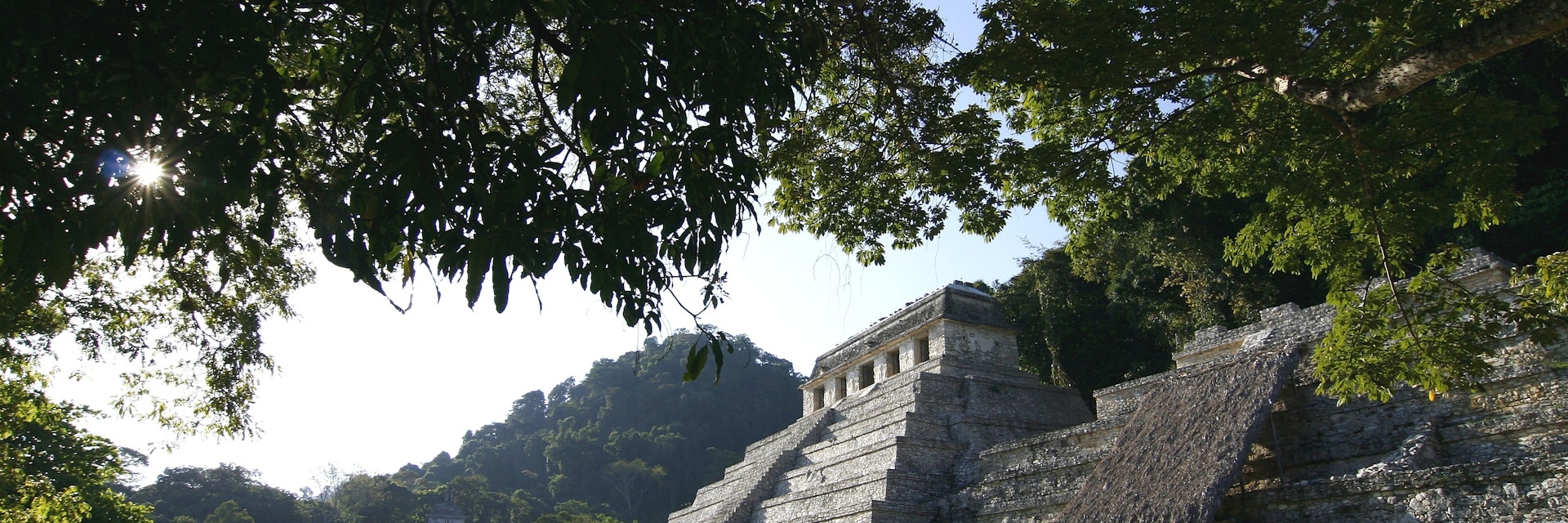
Shutterstock / Ragne Kabanova
Palenque Ruins
Top choice in Chiapas
Ancient Palenque stands at the precise point where the first hills rise out of the Gulf coast plain, and the dense jungle covering these hills forms an evocative backdrop to Palenque’s exquisite Maya architecture. Hundreds of ruined buildings are spread over 15 sq km, but only a fairly compact central area has been excavated. Everything you see here was built without metal tools, pack animals or the wheel.
As you explore the ruins, try to picture the gray stone edifices as they would have been at the peak of Palenque’s power: painted blood red with elaborate blue and yellow stucco details. The forest around these temples is still home to howler monkeys, toucans and ocelots. The ruins and surrounding forests form a national park, the Parque Nacional Palenque, for which you must pay a separate M$35 admission fee at Km 4.5 on the road to the ruins.
Palenque sees more than 1000 visitors on an average day, and visitation spikes in the summer holiday season. Opening time is a good time to visit, when it’s cooler and not too crowded, and morning mist may still be wrapping the temples in a picturesque haze. Refreshments, hats and souvenirs are available outside the main entrance. Vendors line many of the paths through the ruins.
Official site guides are available by the entrance and ticket office . Two Maya guide associations offer informative two-hour tours for up to seven people, which cost M$1300 in Spanish or around M$1600 in English, French, German or Italian. French, German and Italian speakers may have to wait a bit longer as there are fewer guides available.
Most visitors take a combi or taxi to the ruins’ main (upper) entrance, see the major structures and then walk downhill to the museum, visiting minor ruins along the way.
Combis to the ruins (M$25 each way) run about every 10 minutes during daylight hours. In town, look for 'Ruinas' combis anywhere on Juárez west of Allende. They will also pick you up or drop you off anywhere along the town–ruins road.
Be aware that the mushrooms sold by locals along the road to the ruins from about May to November are the hallucinogenic variety.
Suggest an edit to this attraction
Lonely Planet's must-see attractions

Templo de las Inscripciones Group
As you walk in from the entrance the vegetation suddenly peels away to reveal many of Palenque’s most magnificent buildings in one sublime vista. A line…
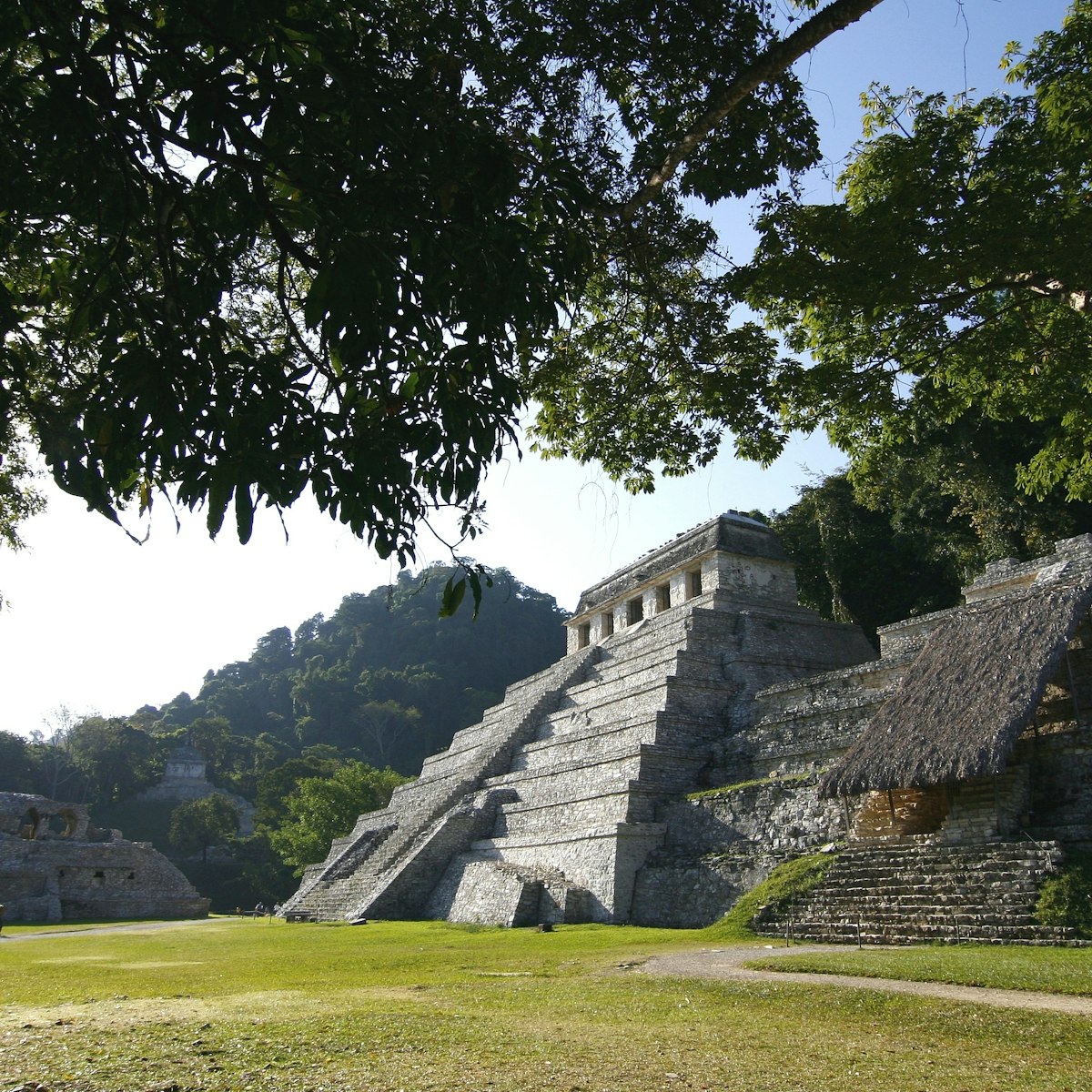
Templo de las Inscripciones
Perhaps the most celebrated burial monument in the Americas, this is the tallest and most stately of Palenque’s buildings. Constructed on eight levels,…

Cascada Welib-Já
17.84 MILES
Thirty kilometers from Palenque, these 25m-high curtains of water aren't the most dramatic water features in the area, but the turquoise river pools make…

Grupo de las Cruces
Pakal’s son, Kan B’alam II, was a prolific builder, and soon after the death of his father started designing the temples of the Grupo de las Cruces…

Acrópolis Sur
In the jungle south of the Grupo de las Cruces is the Southern Acropolis, where archaeologists have made some terrific finds in recent excavations. You…

Palenque Northeastern Groups
East of the Grupo Norte, the main path crosses Arroyo Otolum. Some 70m beyond the stream, a right fork will take you to Grupo C, a set of jungle-covered…

In 1999, in Templo XIX, archaeologists made the most important Palenque find for decades: an 8th-century limestone platform with stunning carvings of…

Templo del Sol
The Templo del Sol, on the west side of the Acrópolis Sur plaza, has the best-preserved roofcomb at Palenque. Carvings inside, commemorating Kan B’alam’s…
Nearby Chiapas attractions
Built in the 8th century by Ahkal Mo’ Nahb’ III and restored in 1955, the tower has remnants of fine stucco reliefs on the walls, but you’re not allowed…
2 . Templo de las Inscripciones
3 . Templo XI
Overgrown and of little interest, Templo XI is the first structure you'll see entering the site from the main entrance.
4 . Tomb of Alberto Ruz Lhuillier
The man who discovered Pakal’s tomb in 1952 was buried here, under the trees in front of Templo XIII.
5 . El Palacio
Diagonally opposite the Templo de las Inscripciones is El Palacio, a large structure divided into four main courtyards, with a maze of corridors and rooms…
6 . Templo XIII
This temple contains the tomb of a female dignitary, whose remains were found colored red (as a result of treatment with cinnabar) when unearthed in 1994…
7 . Templo de las Inscripciones Group
8 . Templo de la Calavera
Also called Templo XII, this temple takes its popular name from the relief sculpture of a rabbit or deer skull at the foot of one of its pillars.
Palenque Mexico: The Greatest Attractions Guide
Want to know some attractions in and near Palenque, Mexico?
How can you get to each attraction?
Wondering what to do in these places?
In today’s guide, you’re going to learn everything you need to know about Palenque Mexico attractions.
Keep reading this ultimate guide and get ready to know and explore Palenque, Mexico. Let’s do this!
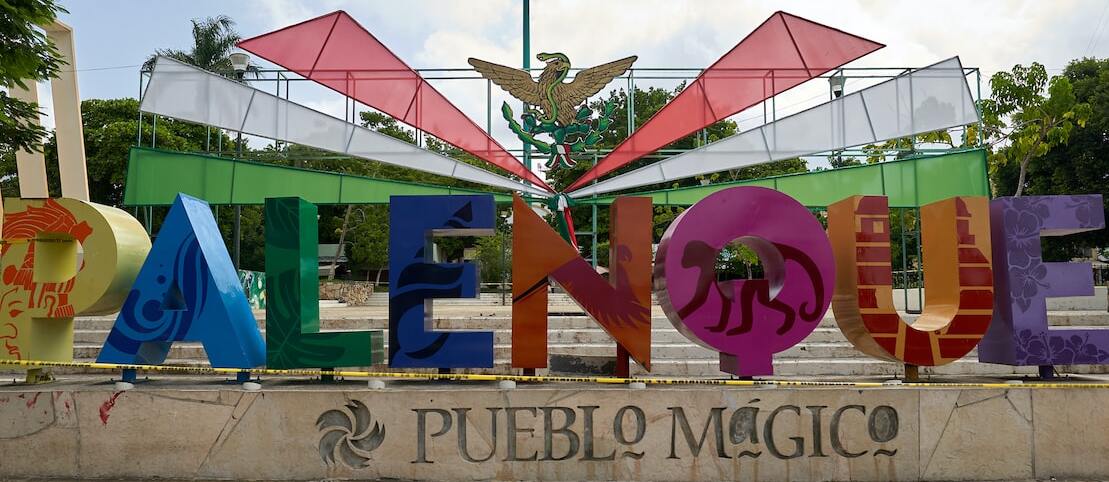
Palenque Archeological Zone
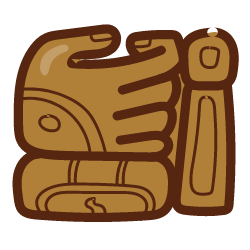
Agua Azul Waterfalls
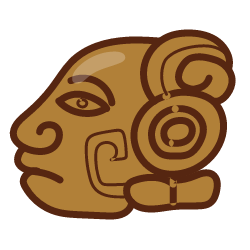
Misol Há Waterfall
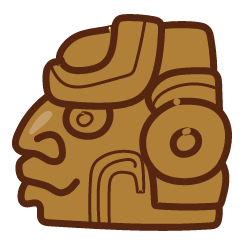
Aluxes Eco-Park
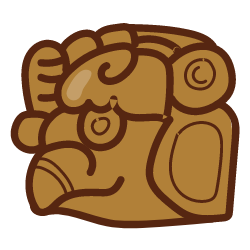
Lacandona Jungle
Lak puj kul museum, catazajá lagoon, plaza del artesano, 1. palenque, chiapas archeological zone.
Discovered in 1740, the Archaeological Zone of Palenque Chiapas was a Mayan City during the Classic period.
Moreover, nowadays the ruins and the surrounding National Park are considered a World Heritage Site by UNESCO. This place is truly a masterpiece!
A place where time and the present collide in these majestic ancient ruins. Certainly, you can still feel that sensation of power and war.
Check out our post: Mayan Pyramids in Mexico (& where to see them)
This place is pretty important for Mesoamerican history . Its most important structures are:
The Temple of the Inscriptions
“The Impressive Temple of the Inscriptions is noted for its hieroglyphic inscriptions.
In 1952 a crypt was discovered under the temple, in which were found the jade-ornamented remains of what may have been a ruler-priest of the 7th century.
The Temple of the Sun is noted for a large stucco bas-relief of a beautifully modeled throne and figures”. Info by Britannica .
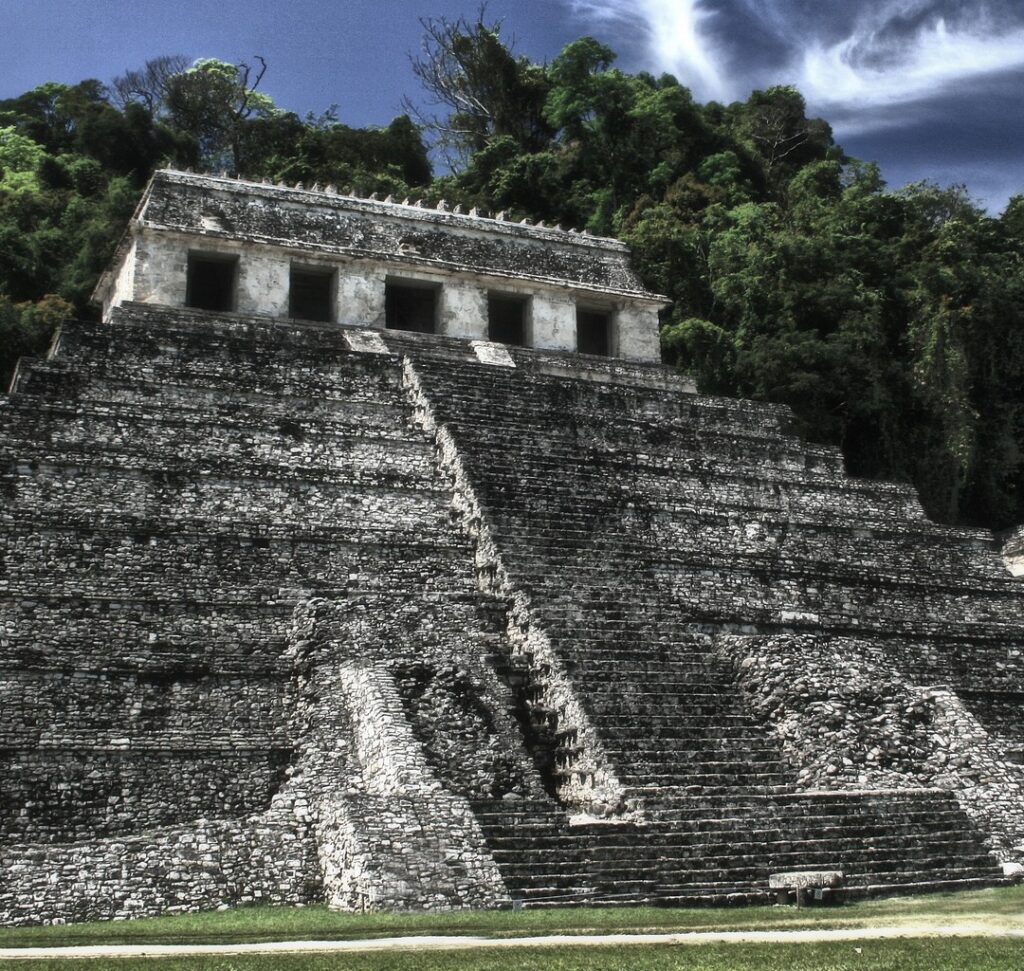
The Palace and the Aqueduct
“The Palenque water-work system included 50 natural springs, nine rivers, and streams that fed the aqueducts, channels, and pools. Some archeologists believe that they invented the first pressurized water system in the New World.
People built a walled channel under the palace and the main ceremonial plaza to ensure a large open space for religious and political ceremonies.
You can see part of the amazing stonework when you follow the path from the Palace to the Plaza of the Crosses. The roof of parts of the channel collapsed giving a partial view.
A carving of an alligator on a huge stone symbolizes the importance and protection of the waterway”. Info by On the road in.com
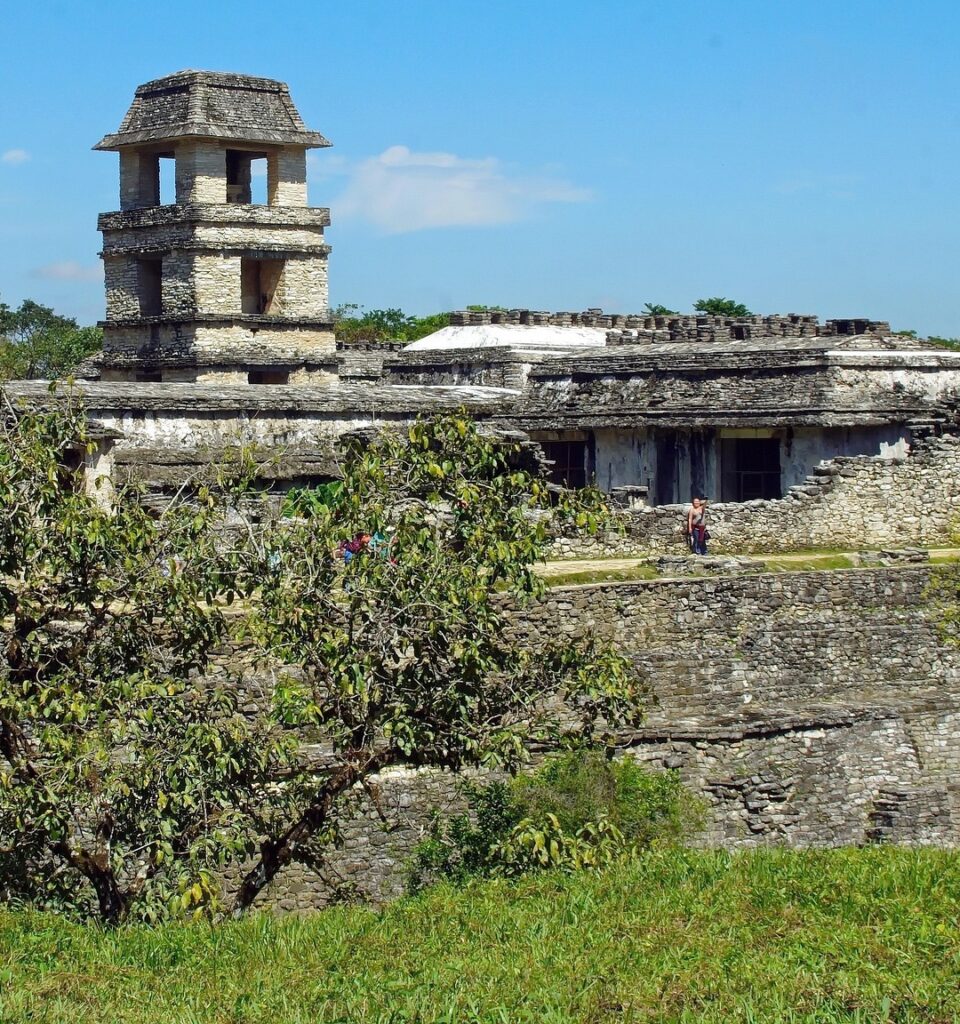
The temple of the Red Queen
“Surrounded by treasure and covered in blood-red dust, the Red Queen was discovered in a seventh-century Maya tomb, but her true identity remains unknown.
In the vaulted burial chamber of Temple XIII at Palenque, Mexico, a researcher examines the stained interior of the stone sarcophagus of the Red Queen”. Info by National Geographic.
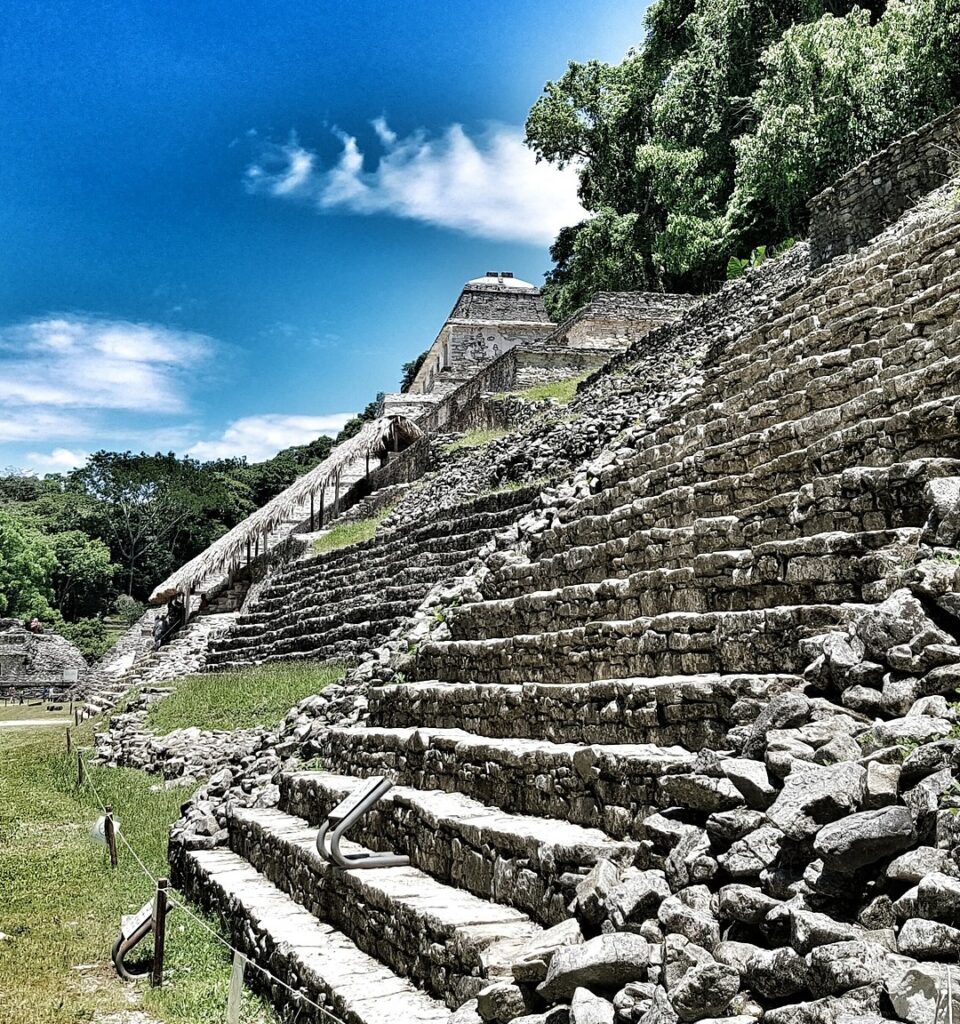
The Temple of the Count
“It was named after Jean-Frédéric Waldeck an eccentric scoundrel who lived for two years inside the temple with his Mayan mistress.
In fact, it is a classic Palenque Maya pyramid and sits directly adjacent to the North group of structures and faces east towards the Ball court. The temple has three entrances with a rear and front passageway leading to a central room and two side rooms.
The pillars were covered with stucco sculptures and images. On the top, it is adorned with a richly decorated roof comb. Constructed between ad 640 and 650, it is the oldest excavated building so far.
Three tombs with a number of human bodies and sacrificial offerings were found underneath the portico’s floor”. Info by On the road in.
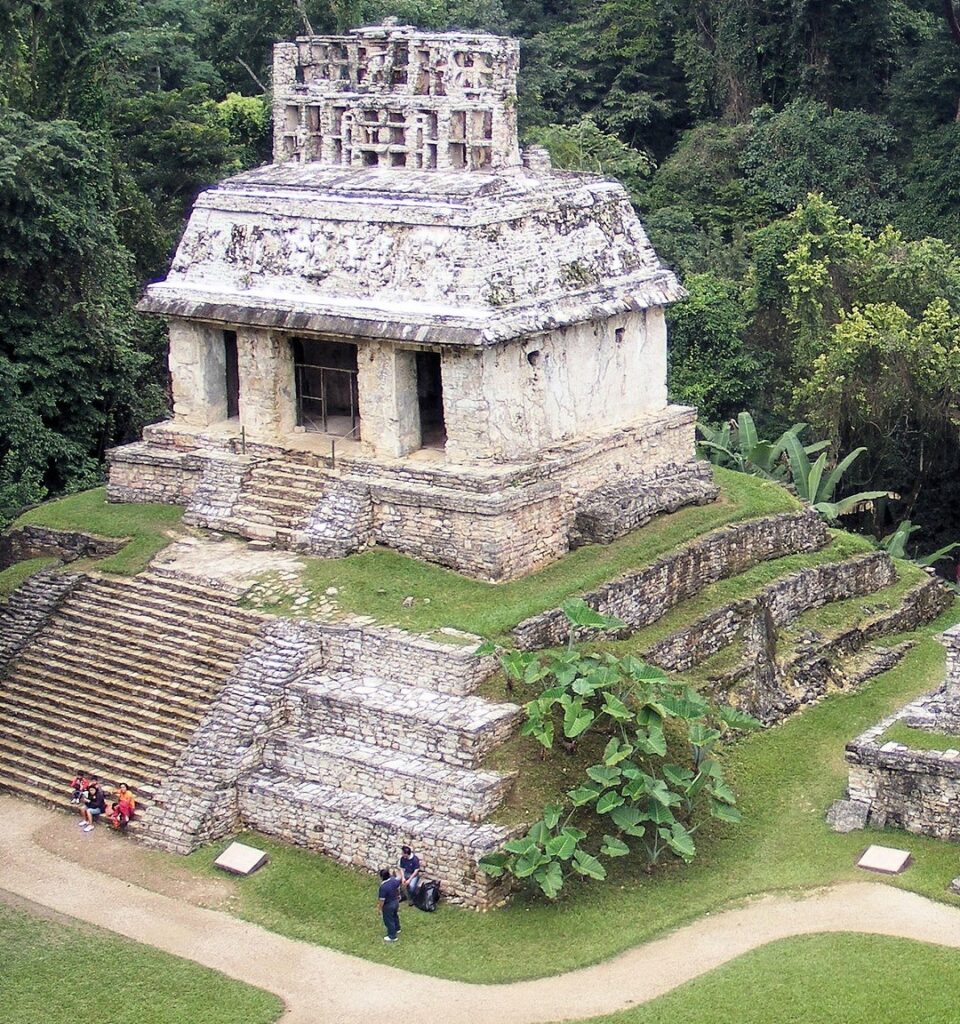
The Ball Game
“If you’ve ever visited an archaeological site in Mexico – think Chichen Itza , Palenque, or Monte Alban – the chances are you’ve come across at least one Mesoamerican ballcourt in your time.
By 1400 BCE at the very least, the Mesoamerican ballgame was in full swing across much of southeast Mexico.
To date, there are thought to be some 1300 ballcourts still in existence, although the addition of the now iconic ‘hoops’ was actually something introduced by the Mayas, before being copied by the Aztecs and Toltecs”. Info by The Culture Trip.
What to do?
Here you will find the archeological site’s museum which holds two permanent exhibition rooms, a temporary one, an auditorium, replicas, and a souvenir shop.
Besides, there are some pieces recovered in the ’40s by foreign archaeologists. Public access hours are from 9:00 a.m. to 5:00 p.m., from Tuesday to Sunday.
How to get there?
The archaeological zone of Palenque is about 4.97097 miles from the city. First, you have to get to Tuxtla Gutierrez Airport. From there, you can take cabs that can take you to the archaeological site of Palenque.
However, the costs is very expensive to leave directly from the airport. Indeed, you can ask the locals how to get there by collective transport, or by non-airport cabs.
The collective transport leaves from the Maya traffic circle, next to the ADO Bus station for a cost of $28 pesos. By Taxi, somewhat more expensive but not subject to schedules.

2. Agua Azul Waterfalls
You will find this spot just two hours away from Palenque, Chiapas.
These waterfalls were declared a biosphere reserve in 1980 for being a natural refuge for the howler monkey, jaguar, toucan, and other species of the region. In addition, Cascadas de Agua Azul comes from the turquoise blue color that has characterized them.
Here you can freely swim and relax , on the other hand, if you’re feeling adventurous there are rafting and snorkeling tours available too. Admission to the general public is from Monday to Sunday from 8:00 am to 6:00 pm.
It can be reached by road from the city of Palenque, which is approximately 2 hours and 10 minutes away.
But if you are in Tuxtla Gutierrez, you must go to San Cristobal de las Casas and from there to Palenque, although it will take you about 5 to 6 hours to get there by this route.
You can also get there by transportation, in the city of Palenque, there is a bus that goes directly to the entrance of Agua Azul.

3. Misol Há Waterfall
If you are around the Agua Azul Waterfalls , you might as well visit Misol Há. Although you can visit both places on the same day, it is best to dedicate a whole day to each place.
By the way, did you know that here was filmed the Arnold Schwarzenegger film ‘Predator’?
Misol há is a waterfall 30 meters deep and a fall 45 meters high. There is a path that allows you to see behind the waterfall, offering stunning views.
If you want to be in touch with nature not too far from the main town, this is the place you were looking for. This refreshing place is located in the high tropical jungle of the Chiapas Sierra, in the middle of a super-rich vegetation area.
You can do some hiking to the viewpoint. One of the secret corners of the waterfalls and one of the most special of this place.
In addition, you can go into the grotto of the waterfall and swim and cool off for a while. It is advisable to be accompanied by a guide to better orient you in these subway places.
Finally, you can take amazing pictures of the surroundings of the jungle. You will find wonderful angles to admire the splendor of the crystalline waterfall.
It is located 11.8061 miles from Palenque on federal highway 199 to Ocosingo, where there is a detour of approximately 0.932057 miles (20 minutes).
More information on how to get there: https://guiasdeviaje.mx/en/destinosydirectorio/misol-ha-waterfall-chiapas-mx/

Aluxes eco-park is an ideal place for all travelers who come to Palenque Mexico with the desire of jaguar-sighting. It is a center for the conservation and rescue of plants and animals in the region. Moreover, there are endless activities to do here.
This ecological park is inspired by the Maya Culture and although it has been created to help endangered animals, it is also designed for tourists. That is to say, its design is perfect for family recreation and environmental education.
From boat rides and night tours to the feeding of different species and being in contact with the giant tortoise, everyone is bound to have fun in this place.
You can see beautiful animals in a natural environment and learn more about their conservation and reproduction systems.
This place seeks to continue preserving and conservating endangered animals, so you can learn more about their history. Moreover, you can learn how can we save these species, plants, and our world in general.
This eco-park is located on the road to the Palenque Archeological Zone, at 2.6 kilometers. Get there by car or with a tour operator. 🚗

5. Lacandona Jungle
The Lacandona Jungle is located in the eastern mountains of the state, between the municipalities of Las Margaritas , Altamirano, Ocosingo , and Palenque, Chiapas.
Inside the Lacandona Jungle, there are great tourist attractions such as Bonampak and Yaxchilán.
Equally, there are Ecotourism Centers such as ‘Las Guacamayas’ and ‘Las Nubes’ where you can spend a pleasant night in rustic cabins surrounded by the sounds of the wild-life of the jungle.
Here you can enjoy many adventure activities, such as rafting, kayaking, and walking tours. Also, the definition of the trails is amazing and the landscapes you see are truly impressive.
It is just two hours and a half away from Palenque, Mexico, and it is worth the ride.
The most convenient for any type of travel is to arrive at the Tuxtla Gutierrez airport. You can stay in San Cristobal de las Casas , Comitan, or Chiapa de Corzo.
In fact, all these places are very close to Tuxtla, so you can get there by car or public transportation. There are buses from Palenque to the community of Lacanjá, ask at the market for the route that goes there. Info by Alma de Chiapas.

6. Lak Puj Kul Museum
If you want to know the history and culture of Palenque, Mexico you can start by visiting one of its museums. The Maya name of this museum means “our clothing.”
In this textile museum, you will find different garments full of color and with a very particular Mexican style.
Here you will learn how fabrics are made, colored, and woven. Additionally, you can learn the different uses they may have. The garments of the town you need to know are the huipil, the “jorongo” , the skirts, and the tunics.
Finally, you may have the opportunity to create your own shirt or skirt like a local. It is open to the public from Tuesday to Sunday from 9 am to 1 pm and from 5 pm to 9 pm.
This museum is located in the heart of Palenque, Chiapas Central Park. Exactly at the central avenue, corner with the central street, col. Tuxtla Gutierrez Center, Tuxtla Gutierrez Chiapas.
From Tuxtla Gutierrez airport you can take a taxi or ask for collective transport to the locals. They are very easy-going and friendly!
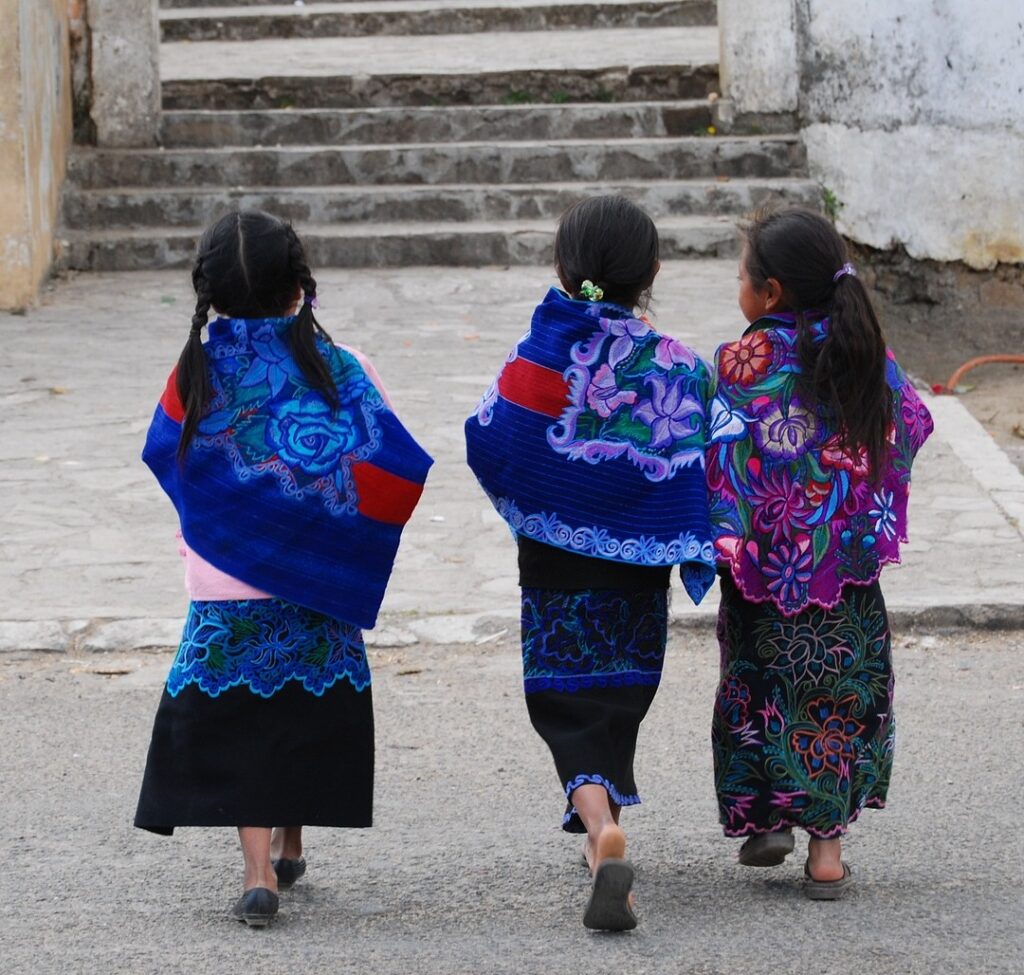
7. Catazajá Lagoon
This splendid paradise and fishing tradition place is located just 30 minutes away from Palenque. This place is a beautiful place to relax while admiring the amazing views of the lagoon and its surroundings.
The gastronomy of this place is something that every foodie has to experience at least once in a lifetime. For instance, after getting to know the fauna through a boat trip on the lagoon, you can try the exquisite dishes in the community of Catzajá.
Here you can take a boat ride and see a variety of local and migratory birds. Catazajá has approximately 16,000 hectares of water and is home to the manatee.
However, if you enjoy bird watching here you will find a great variety of flying species.
Nonetheless, if you want to get to know the plants and animals of this jungle region of Palenque, the traditional boat tour is a must-do activity. To conclude, visitors can enjoy the gastronomy of the place, based on fish and shellfish, in the different restaurants found in the surroundings.
In Palenque, take federal highway 199 again and head north. At 17.3984 miles is the intersection of the Villahermosa – Escárcega highway and 0.621371 miles further you will find the town of Catazajá. The best way to get there is by car.
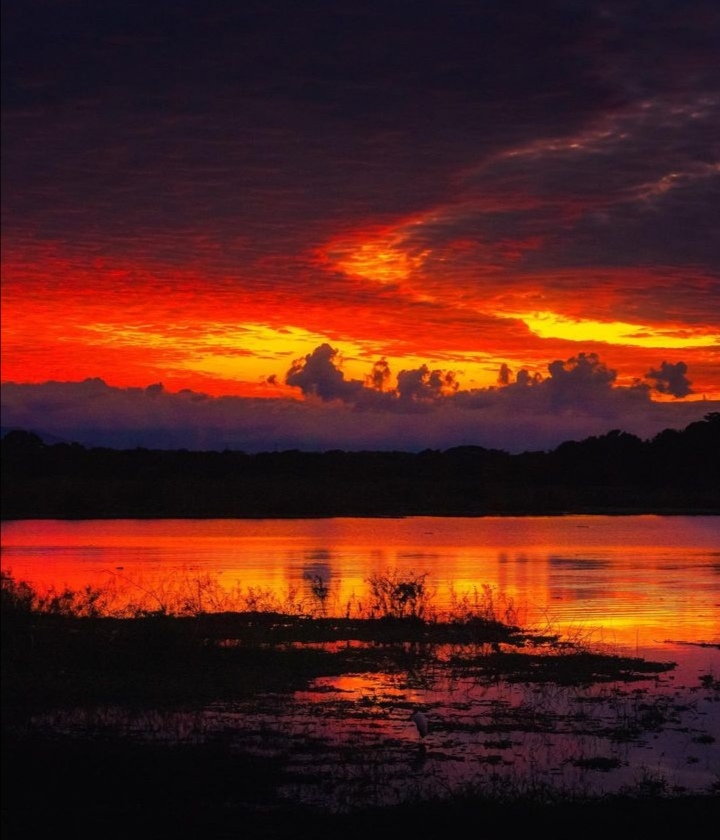
8. Plaza del Artesano
You have to visit this place before leaving Palenque, it’s a must. Here you can find a large number of crafts typical of the region such as ceramics and textiles.
It has more than 98 artisanal premises where artisans expose their work to national and foreign tourism in its different categories. Most crafts are hand-made and inspired mainly by the Maya culture.
Briefly, this space was created in 2006 by the government of Chiapas to provide talented artisans a space for the exhibition, elaboration, and sale of their products. You can visit Monday to Sunday from 10:00 am to 8:00 pm.
In Plaza del Artesano you can buy different hand-made souvenirs that you will remember for the rest of your life. What’s more, you can appreciate the way many textiles are made and see diverse beautiful works of art you can only admire in Palenque, Mexico.
Highway to the Archaeological Zone KM 0.5, Palenque. In front of the sculpture “La Madre Chol”. Plaza del Artesano, Ruinas-Palenque, Siglo XXI, Palenque, Chiapas, Mexico it’s the exact location.

Palenque, Mexico is a unique magical town where you can experience many adventures.
Whether visiting its archaeological site or exploring the jungle, you will find a natural paradise with spectacular views. What are you waiting for? come and explore it!
Do you like this kind of destination? Tell us if you would like to visit Palenque. And if you have already, which attractions are missing?
Let’s travel and feel the local vibes together! Check out our 1 Day Tours and Multi-Day Tours.
Leave a comment Cancel reply
Your email address will not be published. Required fields are marked *
Save my name, email, and website in this browser for the next time I comment.
Take advantage of the search to browse through the World Heritage Centre information.
Share on social media
Unesco social media, pre-hispanic city and national park of palenque.
- Description
A prime example of a Mayan sanctuary of the classical period, Palenque was at its height between AD 500 and 700, when its influence extended throughout the basin of the Usumacinta River. The elegance and craftsmanship of the buildings, as well as the lightness of the sculpted reliefs with their Mayan mythological themes, attest to the creative genius of this civilization.
Description is available under license CC-BY-SA IGO 3.0
Cité préhispanique et parc national de Palenque
Exemple éminent de sanctuaire maya de l’époque classique, Palenque, qui connut son apogée entre le VIe et le VIIIe siècle, étendit son influence dans tout le bassin de l’Usumacinta. La technique et l’élégance de ses constructions, comme la légèreté de ses reliefs sculptés illustrant des thèmes mythologiques, témoignent du génie créateur de la civilisation maya.
مدينة بالينك التي تعود الى ما قبل الغزو الاسباني وروضتها الوطنية 1987
نشرت بالينك، المثال البارز لمعابد المايا من العصر التقليدي التي عرفت ذروة ازدهارها بين القرن السادس والقرن الثامن، تأثيرها على كامل حوض الاوسوماسينتا. فتقنية تشييد الأبنية وفخامتها تمامًا كخفّة نقوشها البارزة تجسّد الاساطير وتشهد على مهارة الابتكار التي كانت تتّسم به حضارة المايا.
source: UNESCO/CPE Description is available under license CC-BY-SA IGO 3.0
帕伦克城是古希腊罗马时期玛雅人的圣地,其鼎盛时期大约在公元500年到700年之间,对整个乌苏马辛塔河盆地都具有广泛影响力。该遗址中典雅精致的建筑和体现玛雅人神话主题的浮雕都证明了他们是创造文明的天才。
Ciudad prehispánica y parque nacional de Palenque
Ejemplo eminente de santuario maya de la época clásica, Palenque alcanzó su apogeo entre los siglos VI y VIII y ejerció una gran influencia en toda la cuenca del río Usumacinta. La elegancia y calidad técnica de sus construcciones, así como la delicadeza de los relieves esculpidos con temas mitológicos, ponen de manifiesto el genio creador de la civilización maya.
古代都市パレンケと国立公園
source: NFUAJ
Pre-Spaanse stad en Nationaal park Palenque
Palenque is een goed voorbeeld van een Maya heiligdom uit de klassieke periode. De stad bereikte haar hoogtepunt tussen 500 en 700 na Christus. De elegantie en het vakmanschap van de gebouwen en de luchtigheid van de gebeeldhouwde reliëfs met thema’s uit de Maya mythologie, getuigen van de creatieve geest van deze beschaving. Het meest karakteristieke element van het terrein is de Palacio. De toren in de vorm van een afgeknotte piramide werd in verschillende perioden gebouwd op een kunstmatige heuvel en diende als een soort wachttoren of astronomisch observatorium. Het is een uniek exemplaar binnen de Maya architectuur.
Source: unesco.nl
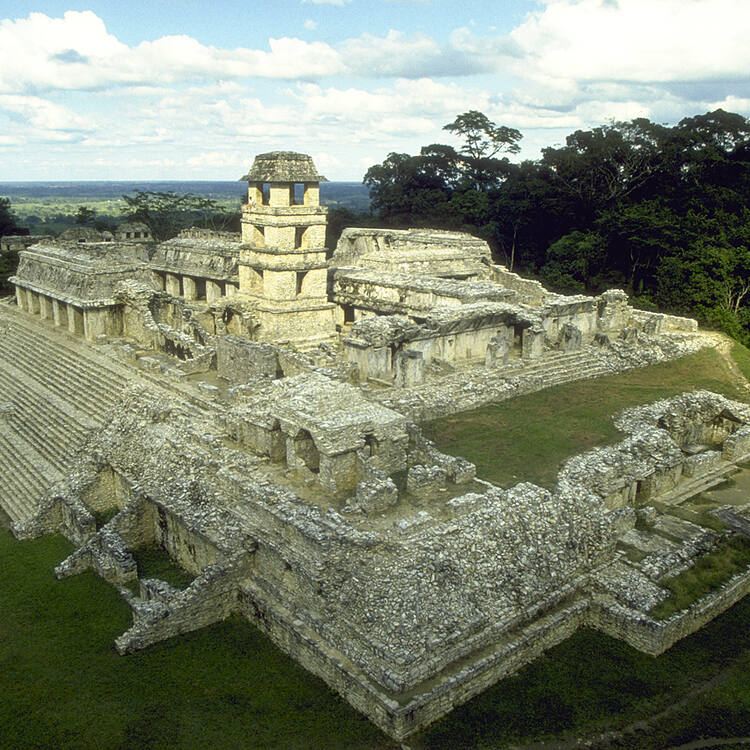
Outstanding Universal Value
Brief synthesis
The archaeological site of Palenque in the state of Chiapas is one of the most outstanding Classic period sites of the Maya area, known for its exceptional and well conserved architectural and sculptural remains. The elegance and craftsmanship of the construction, as well as the lightness of the sculpted reliefs illustrating Mayan mythology, attest to the creative genius of this civilization.
The city was founded during the Late Preclassic, which corresponds to the beginning of the Christian era. Its first inhabitants probably migrated from other sites in the nearby region. They always shared the cultural features which define the Maya culture, as well as a level of development that allowed them to adapt to the natural environment. After several centuries, ca . 500 A.D., the city rose to be a powerful capital within a regional political unit. Without a buffer zone the total area of the archeological site is 1780 hectares, 09 areas and 49 square meters and 1,400 buildings have been recorded, of which only about 10% have been explored.
Palenque has been the object of interest of numerous travelers, explorers and researchers since the 18th century. It illustrates one of the most significant achievements of mankind in the American continent. The ancient city has a planned urban layout, with monumental edifices and some of the largest clearings found in all the Maya area. Numerous residential areas with habitation units, funerary, ritual and productive activity areas were placed around the administrative and civic ceremonial centre. The palencano style is unique for its high degree of refinement, lightness and harmony. It includes buildings with vaulted roofs upon which pierced crestings emphasized its height. Its architecture is also characterized by its interior sanctuaries and modeled stucco scenes found on its freezes, columns, walls, crests, as well as ogival vaults, vaulted halls connecting galleries and T-shaped windows, among other unique architectural features. The sophisticated architectural designs and the rich decoration reflect the history and ideology of the ruling class and incorporate the writing and calendaric systems. The architecture of the site is integrated in the landscape, creating a city of unique beauty.
Criteria (i): Palenque is an incomparable achievement of Mayan art. The structures are characterized by a lightness which resulted from the new construction techniques and drainage methods that were developed in order to reduce the thickness of the walls. The expanded interior space, multiple openings, and the use of galleries give the architecture a rare elegance, richly decorated with sculptures and stucco of a type never previously seen.
Criteria (ii): The influence exerted by Palenque was considerable throughout the basin of the Usumacinta, extending even as far away as Comalcalco, on the western border of the Mayan cultural zone.
Criteria (iii): Palenque bears a unique testimony to the mythology and the rites of the Mayas, notably in the incredible number of sculpted reliefs on interior walls of the palaces and temples.
Criteria (iv): Older than the ensemble at Tikal, whose major monuments were constructed a hundred years later, the group of ceremonial buildings at Palenque is an outstanding example of a ceremonial and civic site corresponding to the middle of the Classic period in the Maya area.
Once the ancient city of Palenque was abandoned around the 9th century, the thick jungle surrounding it covered its temples and palaces. This vegetation largely protected the buildings and their elements from looting. Furthermore, the fact that the area remained uninhabited, from its abandonment until the Colonial period, aided the protection of the site’s integrity.
Residential areas, buildings with political and administrative functions, as well as those whose function was ritual are conserved in their original setting, turning the site with its exceptional artistic and architectural features into a living museum.
All elements to convey the Outstanding Universal Value of the property have been preserved. However, there are a number of threats to these conditions, including the decay of the material fabric and the presence of uncontrolled informal vending within the site and the growing number of visitors - which today reaches 600,000 per year. These threats require sustained attention so that the conditions of integrity are maintained and no additional impacts are derived from excessive use or inadequate infrastructure development to provide services.
Authenticity
As in the case of the site’s integrity, the authenticity of the site and its elements was protected by the dense vegetation and the fact that the city was abandoned already in pre-Hispanic times. Furthermore, factors like the choice of durable raw materials and high quality manufacturing techniques aided in the conservation of the material culture of Palenque and in conserving the form and design of the property.
Although exploration at the site had started much earlier, the first maintenance work on the monuments at Palenque was not undertaken until around 1940. Now maintenance has to be incessant in order to avoid negative impacts caused by climatic factors and/or vegetation, which pose constant threats. Conservation interventions that have largely utilized original materials have not compromised the overall authenticity of the property but care needs to be exercised to define the extent of interventions and the use of compatible materials.
Protection and management requirements
The principal authority responsible for the protection of the archaeological site is the National Institute of Anthropology and History (INAH) and the National Commission for Protected Natural Areas (CONANP). The latter is in charge of the conservation of the natural resources within the area of the National Park, which is protected since 1981. In 1987 UNESCO recognized the archaeological site as World Heritage and in 1993 the site was declared an Archaeological Monument by the Mexican Federal Government, so as to be protected under the Federal Law on Archaeological, Artistic and Historic Monuments and Sites.
Nevertheless, much work remains to be done in order to effectively ensure the protection and conservation of the World Heritage property in the long term. Currently, measures regarding its protection are considered in the Planning project for the management of heritage sites, which seeks the participation of all the actors involved in the conservation, protection, research and promotion of the site, since it is they who live and act in its immediate context. This strategic planning incorporates a long-term view, attention to global issues in the future scenarios and the real possibilities of projecting the conservation beyond the daily activities in the operation and administration of the site.
- Palenque (Instituto Nacional de Antropología e Historia - INAH)(spanish only)
The Partying Traveler
Survival of the littest.

How To Visit Palenque Without A Tour | Chiapas, Mexico
Chiapas is one of the most incredibly beautiful and historic states in all of Mexico. While San Cristobal de las Casas may be the cultural and touristic hub of the state, Palenque is the explorer’s paradise. For travelers seeking adventure, few places in Mexico compare to Palenque. From hidden waterfalls to ruins buried deep in the jungle, it’s easy to get your Indiana Jones or Lara Croft on in this region.

While many people who visit Palenque do so from San Cristobal, I believe it’s best to take on the region on your own. The typical tour from San Cristobal is a long and arduous journey. It definitely doesn’t allow you as much freedom as adventuring to Palenque on your own. Tours leave at 3 AM from San Cristobal. That was all I needed to know before deciding that I would find a way to explore Palenque at my own pace. I ain’t waking up at 3 AM for anything.
And hey, if this post helps you out, show some love and support for the blog and help keep my adventures going by buying me a beer ! My adventures are entirely self-funded, so any show of support is greatly appreciated. It allows me to keep providing free travel guides and creating travel content to help you all travel the world.
This post contains affiliate links. That means that I may earn a commission if you make a purchase through these links.
Table of Contents
- How To Get To Palenque
The Best Things To Do in Palenque
Where to stay in palenque, more on mexico.

My Complete Mexico Backpacking Itinerary
By popular demand… Here is the complete itinerary for one of my favorite countries in the world, Mexico. In this 77-page guidebook, I cover 30 of my favorite Mexican destinations, including how to get to each city, where to stay, and the best things to do in each city. I also include tidbits of useful information like things to know before going to Mexico, as well as my favorite party destina…
Getting to Palenque From San Cristobal
The city of Palenque is about five hours from San Cristobal, which is why most day tours require you to leave at around 3 AM. While Palenque town doesn’t boast much worth seeing, it’s worth putting up with for the multitude of adventures in the region.
Getting to Palenque By ADO Bus
From San Cristobal, you can catch an overnight ADO bus for just under 400 pesos, or about $20 USD. Personally, this is how I’d recommend getting from San Cristobal to Palenque. It is much more comfortable, safer, and the timing is honestly pretty great. You leave San Cristobal at night and arrive to Palenque at 8 AM. The timing allows you to have a full day of adventure right away. While the quickest way to Palenque only takes five hours, the night bus takes a few hours longer because the ADO bus takes a longer, safer route to get to Palenque.
Getting From San Cristobal to Palenque By Colectivo
If your goal is to get to Palenque as quickly and as cheaply as possible, then colectivos are the option for you. From San Cristobal, you can catch a colectivo headed to Ocosingo for 70 pesos. The journey to Ocosingo takes about two hours through the winding mountain roads. Once you arrive in Ocosingo, you can catch a colectivo to Palenque for 100 pesos. This ride takes around three hours, but is quite scenic all throughout.
If you want to hit some waterfalls on the way to Palenque, you can get dropped off at Agua Azul Waterfalls and Misol-Ha Waterfalls, both of which are on the main road from Palenque to Ocosingo. If you’re traveling light, it could be worth it to save a few hours of travel time by knocking them out while you’re already on the way.
Flights to Palenque
Palenque has a decently-sized airport, so it’s possible to fly into Palenque if you want to spend a little more money and save yourself the arduous journey by road. Depending on where you are in Mexico, flights can be pretty infrequent, or require a layover in a larger airport. It’s worth looking up if you have the money to spend.
Oh, and before you go, make sure to have good travel insurance handy whenever you’re out adventuring. I use SafetyWing to keep me covered throughout my travels.
Okay, so what are all these dope adventures that I keep hyping up? Let’s get to it.
Palenque Archaeological Site
To no one’s surprise, the main attraction of Palenque is none other than the ruins of Palenque itself. While the neighboring town is also called Palenque, no one actually really cares about the town itself. It’s all about the stunning archaeological site buried in the jungle just minutes away from downtown Palenque. These were my favorite ruins I visited in Mexico, edging out Teotihuacan and Uxmal . Its location in the jungle truly makes it feel like you’re exploring another world.

Apparently, only about 10% of the archaeological site has been excavated , and the rest of this sprawling Mayan city could still be buried underground and deeper in the jungle. It’s crazy to think just how much more of this amazing site has yet to be seen.
To visit the ruins of Palenque without a tour , you’ll need to catch a colectivo from the center of town. If you’re lucky to get a straight shot to the entrance, it should only cost you 20 pesos. However, when I went, there were COVID restrictions and specific entrance times, turning one colectivo ride into three. You have to pay two entrance fees to get into the ruins, which combined to around 170 pesos if I remember correctly.
Misol-Ha Waterfalls

About 40 minutes from downtown Palenque, you’ll find some of my favorite waterfalls in the Chiapas region. Misol-Ha is absolutely gorgeous. Many people visit Misol-Ha to take a magical dip in its beautiful waters. It’s a quick visit, as it is a lone waterfall. You can walk along the path behind the waterfall and also explore some caves near the back. Besides that and going for a swim, there’s not much to do but admire the stunning views.
Agua Azul Waterfalls

Agua Azul is the most popular waterfall in the area. That’s evident by the dozens and dozens of stalls lining the pathway along the river. While it is the most touristy and developed waterfall near Palenque, it’s definitely still worth the visit. It’s easy to spend the entire day here swimming, eating, and admiring the numerous waterfalls. To get here, you need to catch a colectivo headed towards Ocosingo and ask them to drop you off at Agua Azul. From there, it’s another taxi ride to get to the park, which costs 10 pesos per person. There are two entrance fees, but both are pretty low, adding up to 65 pesos total if I remember correctly.
I unfortunately didn’t get to stay too long in Palenque. As soon as I got there, I desperately wished that I gave myself more time to explore the area. That’s the reason why you should try visiting Palenque on your own and without a tour. For those who have a little more time to explore Palenque, here are a few of the other must-visit attractions in the region.
- Welib-Ha Waterfalls
- Roberto Barrios Waterfalls
Other Archaeological Sites

For my fellow backpackers, there aren’t too many options to choose from in downtown Palenque itself. I was meeting my sister in Palenque, so we opted to stay at a hotel to treat ourselves after weeks of hostel life.
The place I’d recommend for my fellow backpackers to stay would be at Jungle Palace in El Panchan. With cheap dorms and private rooms, it’s a hard value to beat. The jungly vibe is also much more immersive than staying in Palenque town, which quite frankly doesn’t have too much to offer.
If you look on Hostelworld , there are only a couple of hostels in Palenque. And honestly, none of them are all that great. Palenque is more of a stop-over town for many travelers, so hostels are more just a place to crash than a place to feel at home and meet people. However, since I’ve written this, it looks like a few promising hostels have popped up, like Kin Balam Cabanas .
As an affiliate of Hostelworld, a portion of any bookings made through these links will go towards supporting my blog and future adventures, at no extra cost to you.
I don’t usually stay at hotels while traveling, but I made the exception for Palenque. A nice, air-conditioned hotel room is honestly just fantastic to come home to after a day of adventuring in the jungle. I stayed at Posada Kin, which was great value for its price and close to Palenque’s main plaza.
If this post helped you out, show some love and support for the blog and help keep my adventures going by buying me a beer ! My adventures are entirely self-funded, so any show of support is greatly appreciated, and allows me to keep writing helpful travel guides and creating travel content to help you all travel the world on a budget.
My Complete Mexico Itinerary
Also, I’ve finally published my jam-packed Mexico backpacking itinerary , spanning 77 pages and 33 of my favorite travel destinations in Mexico. This ain’t your ordinary itinerary, and it’s guaranteed to make sure you go off the beaten path and experience the best of Mexico. Shop below.
The Best Natural Attractions in Chiapas, Mexico
The Ultimate San Cristobal de las Casas Bucket List: 50 Things To Do
The Backpacker’s Guide to San Cristobal de las Casas
Is Comitan, Chiapas Worth Visiting?
The Best Party Destinations in Mexico
Share this:
One thought on “ how to visit palenque without a tour | chiapas, mexico ”.
Great post! Very informative, thanks for sharing
Leave a Reply Cancel reply
Discover more from the partying traveler.
Subscribe now to keep reading and get access to the full archive.
Type your email…
Continue reading

Hey, we're Liz and Dennis!
- How We Make Money While Traveling in an RV Full Time
- Work With Us
- National Parks
- RV Mexico travel guide
- Baja road trip travel guide
- Iceland travel guide
- Gear + Travel Resources
- RVing in Mexico
- Digital Nomad Life
See , Mexico , RV Mexico · January 9, 2024
How to Visit Palenque Ruins in Chiapas Mexico
Disclaimer: This post may contain affiliate links. Please see our Disclosure Policy for details.
Mexico is home to dozens of incredible archeological zones, but one of our favorite ruins we visited in our Mexico travels was Palenque Ruins.

Zona Arqueológica Palenque is an ancient Mayan city that was discovered by an archeologist in the 1950s. It’s estimated only 10% to 20% of the city has been excavated, making it one of the newest Mayan ruins to be uncovered.
Now a UNESCO World Heritage site, this site is rich in Mayan history and was once the home of several important Mayan Kings. Nestled deep in the jungles of Chiapas, Palenque Ruins feels like you’re on the set of an Indian Jones movie walk next to vine-covered ruins and listen to howling monkeys.

If you’re planning a trip to explore this archaeological zone, this guide will share everything you need to know about visiting Palenque Ruins . From cost, how to get there, important spots to see, and what to bring – we’ve got you covered!
Don’t want to read the entire post, use the table of contents below to get the information you need.
Table of Contents
Quick facts about palenque ruins, history of palenque ruins, the best time to visit, getting to palenque from cancun on the mayan train, getting to palenque ruins from villahermosa, getting to palenque ruins from tuxtla gutierrez, getting to palenque ruins from campeche city, cost to visit palenque ruins, what to bring to palenque ruins, mexico, tour guide or diy palenque ruins tour, temple of the skulls, tomb of the red queen, temple of the inscriptions, the temple of the sun, temple of the cross.
- Location : Chiapas, Mexico ( exact location here )
- Nearest town/city : Palenque
- Best way to get there : Fly into Villahermosa, Tabasco, and take a 2-hour bus ride to Palenque.
- Hours : 8:30 AM – 5:00 PM every day except major holidays.
- Entrance Cost : $200 MXP (roughly USD 12) as of 2024.
- Number of visitors annually : Around 600,000
- Special designations : UNESCO World Heritage Site and the third largest Mayan archeological zone in Mexico.
- Restrictions : No professional filming equipment and drones are not allowed.
- Built : ~200 A.D.
- Time spent there : 2 – 4+ hours on average.
- Best time to visit : Dry season (November to April).
Palenque Ruins was first documented by Spanish missionary Father Pedro Lorenzo de la Nada in 1567. However, it wasn’t until the 1950s that Palenque Ruins was truly discovered. Many archeological zones had been abandoned before Spanish colonization. Their lack of development due to conflict or deforestation let nature take over. This led to many zones, including Palenque, being hidden by dense jungle for hundreds of years.
Palenque’s name is Spanish for fortified place , although in Mayan its name is Lamkamha. It was named a UNESCO World Heritage Site in 1987 and remains a protected space with active excavation.
It’s believed Palenque was built around 200 A.D. The city went through several Kings and battles with neighboring civilizations once acting as a capital city for the region. At its peak around 6,000 Mayans lived there between 500 and 700 A.D. Eventually, around 900 A.D. the site was abandoned.
Palenque was home to several Kings and is considered one of the most important places in Mayan history after uncovering several tombs of sacrifices, Kings, and high nobles. It has many glyphs and very well-kept records, making it one of the most studied archeological zones in the world.

One of the theories about why this city was abandoned was due to deforestation. While it’s hard to imagine today when the pyramids are covered with and surrounded by thick jungle and moss, Palenque would have looked barren when it was inhabited 1,500 years ago.

The Mayans used stucco and painted frescos to decorate their pyramids. Since stucco needs to be burnt at high temperatures to make, the Mayans cut down most, if not all of the trees, in the vicinity. No trees and lack of shade eventually changed the environment and caused drought, high temperatures, and a lack of drinking water and food.
Mexico has two main seasons – the rainy season and the dry season. For obvious reasons, it’s better to visit Palenque Ruins during the dry season to avoid random downpours in the Mexican jungle.

The dry season begins in November and lasts until April. The rainy season lasts from June to October, but random showers can still happen during the dry season. Palenque sees as many as 600,000 visitors per year making it a very popular site. There’s a good chance no matter when you’re visiting you’ll meet other tourists.
How to get to Palenque Ruins
Palenque Ruins is located in the state of Chiapas near the Guatemalan border. Chiapas is one of the most remote parts of the country filled with epic mountain ranges and dense jungles making it a bit off the tourist path.
While it is a bit tricky to get here compared to some of the more popular archeological zones near tourist centers, it’s worth it. Chiapas is one of our favorite states in all of Mexico and is, without a doubt worth visiting.
Here are a few of our favorite things to do in Chiapas, Mexico:
- Is Visiting Sumidero Canyon Worth it? Yes! Here’s Why
- Top 10 Things to Eat, See, and Do in San Cristobal de Las Casas
- 9 Amazing Waterfalls in Mexico You Need to Visit
In December 2023, Mexico launched the “Tren Maya” (Mayan Train). This tourist train connects major cities and archeological zones throughout the Yucatan Peninsula. The three trains (one for passengers, one food-focused train, and one sleeper train) allow visitors to seamlessly travel between Cancun, Tulum , Campeche, Merida , Tabasco, and Calakmul. Its final stop is in Palenque, Chiapas.
🚨Mexico STOPPED the Cancun to Palenque Mayan Train route due to complications on the railing at the end of January 2024, but it appears the route has returned in April 2024 . The current tickets depart at 7:00 am from Cancun airport and takes roughly 11 and a half hours to get to Palenque with 15 stops.

🚊 If the route is open when you are reading this, you can search and book your tickets for the Mayan train here . Click on the button at the top that says “ Compra tu boleto aqui” . Then, select the route Cancún Aeropuerto – Palenque . The origin spot should say “Cancun” and the final destination should be “Palenque”.

The tickets aren’t cheap . As of April 2024 the route from Cancun to Palenque cost $2,800 MXP for an international tourist in economy. It was $4,521 MXP for premier class, which equals $172 or $271 ONE WAY.
If you’re flying into Mexico the easiest option is to get a commuter flight from Cancun or Mexico City to the Airport in Villahermosa, Tabasco (Carlos Rovirosa Pérez International Airport). From there it’s around a 2 hour drive to Palenque, Chiapas.

🚍 There is an ADO bus that takes you from the airport to Palenque in just around 2 hours and 10 minutes. The bus at the time of this writing cost $350 MXP or roughly $20.
If you prefer to drive a car versus taking a public bus, you can pick up a rental car in Villahermosa. Driving in Mexico isn’t as intimidating as it seems. We have an entire post that shares what to expect from the experience you can read here .
You can also fly into Tuxtla Gutierrez in Chiapas if you plan to spend more time in the state of Chiapas. However, we don’t recommend this route as the road from Tuxtla Gutierrez to Palenque can take 7 to 8 hours to drive. It’s also home to vigilante groups which are known to stop busses and passengers driving through.
We took this road after leaving Palenque to get to San Cristobal de Las Casas and had no issues, but other travelers we met had been stopped and asked for money.

The ADO bus and recommended driving route from Tuxtla Gutierrez to Palenque goes through Villahermosa. So, the path from Villahermosa to Palenque really is the better option.
We drove to Palenque from Campeche City, Campeche which took around 6 hours in total. This is another option if you’re in the Yucatan (Cancun area) and have your own vehicle to get you from place to place like we did.

The closest town to the ruins is the city of Palenque. This is a pretty bustling city home to around 50,000 people with major hotels, unique eco-lodges, and even RV camping. Since we RV’d our way across Mexico this was convenient because we had great options just a 4 to 5-minute drive from the entrance of the ruins.
Want to follow in our footsteps RVing in Mexico? We have two amazing digital travel guides that simplify planning an RV road trip to Mexico. These guides are over 80 pages and share EVERYTHING you need to know about RV Mexico life including communication tips, a complete itinerary, camping recommendations, safety tips, foods to eat, and more.

RVing to Mexico Travel Guide

The Ultimate Baja Road Trip Digital Guide
If you don’t have your own vehicle you can take a taxi or collectivo (like a public bus) from Palenque. Collectivos are the most cost-effective way to get there and should cost around $20 MXP or $1.18 (cash only). A taxi should cost around $200 – $250 MXP. The collectivos will have a sign that shows you where they are going. In this case, look for the “ruinas” sign on the front.
As of 2024, the entrance fee for Palenque Ruins was $95 MXP which is roughly $5.60 for those aged 14 to 59. Children under 13 and those 60 and older can enter for free. Additionally, Sunday is free entry to all national visitors, including foreigners who prove their residence in Mexico ( like us ).
You will have to pay a separate fee of $105 MXP or around $6.20 to enter the National Park Palenque resides in. You can pay both of these fees at the ticket office (which is the Museum and visitors center about 5 minutes before the ruins entrance). Although there are two counters to pay the fees at (can’t be done all at once – don’t ask me why). 🤷🏽♀️

You can purchase your tickets online beforehand , but we recommend getting them to day of at the visitor center and museum ( exact location here ). The total cost for entry is $200 MXP or just under $12.
🧥Check the weather to ensure you have a rain jacket before visiting Palenque Ruins. The weather can be unpredictable in the jungle. Rain showers will randomly pop up so having a light and packable rain jacket is a good idea.
👟 I also recommend having comfortable shoes . You will be doing a lot of walking and you’ll want to have shoes that can handle standing and hiking. 🧢 If you’re going there during summer make sure to bring a sunhat with you. A lot of your time there will be spent outdoors and this can prevent you from burning.

💧We brought a small backpack with a refillable water bottle . There are no public places to refill your water, so make sure you have plenty of water on hand. It can get hot and humid in the jungle which means you’ll be sweating!
⛑️ We always recommend having travel insurance to cover the “what-ifs”, especially when doing things like hiking or venturing into the jungle. We feel Mexico is safe to visit , although there are travel advisories to be aware of, and always be aware of your surroundings. However, we like knowing we are covered if there are any major medical emergencies or trip interruptions while traveling.
Our go-to travel insurance is Safety Wing . You can get a free quote for coverage by clicking here or using the box below.
💵 Mexico is a cash-forward country. Big cities like Mexico City, or popular tourist towns like Los Cabos or Cancun will accept cards. But outside of these hubs, cash is still the dominant form of payment . Tickets for Palenque Ruins and any tour guides you want to hire will be cash only . Have pesos on hand ($1,200 – $1,400 MXP should be sufficient).
📸 If you are bringing your camera gear to take photos or video do not have “professional equipment”. Since Palenque Ruins is a part of INAH (The National Institute of Anthropology and History) and a protected archeological zone, you need special permission to use things like a microphone, drone, or tripod.
Leave this stuff at your hotel or RV campground before coming here or they will not let you Palenque Ruins! Grab the gear below:
- 🧥 Rain ja cket
- 🥾 Comfortable sneakers or hiking shoes
- 🧦 Breathable and comfortable merino wool socks
- 📸 Camera equipment (no drones, tripods, or microphones if you are vlogging . Handheld only )
- 🚰 Reusable water bottle
- 💵 $1,200 – $1,400 MXP if you want to hire a guide, $500 MXP if you don’t.
You do not need a tour guide to visit the Palenque archeological zone, however we do recommend it. To start, you’re supporting the local economy by hiring a certified guide to help you better understand the fascinating and complex history of this site. You’re also going to get a heck of a lot more out of the experience.
Mexico is notorious for having minimal information and signage available in its archeological zones. There are a few plaques to read to learn about the history, but the information is limited. For that reason, we always recommend hiring a tour guide when visiting archeological zones like this one.

We found our guide in front of the ticket office at the visitor centers. There were several guides kindly “yelling” at us to take a tour with them. If you’re new to this type of marketing, it can be overwhelming to have vendors solicit you so intensely. But this type of selling is common in Central America and something to get used to.
We haggled a private tour for the two of us for $1,000 MXP (around $59) for a 3-hour tour. We received other quotes for $1,200 MXP, but we negotiated the rate before accepting. Tours are priced per guide, regardless of the number of people with you. The more people you can team up with on the tour, the cheaper the total cost will be for you per person.
Ask around to different tour guides for the best price and assess their English speaking skills before agreeing. We hired a guide in Chichen Itza and his English was terrible and it ruined the experience for us.
There *should* be a sign stating the official guide prices somewhere near the entrance. Expect to pay $1,200 – $1,500 MXP for the guide depending on the length of your tour and time visiting.
Top things to see at Palenque Ruins
Around 80% of the city is still underground, with active digs happening to uncover other remains. The area visitors can see today is rather small compared to others, including those nearby, like Tikal (in Guatemala) and Calakmul (one of our favorites).
You can see most of the Palenque Archeological Zone in 2 to 4 hours. Below are a few of the key sites to visit and some interesting details about each.
Temple of the Skulls is one of the first pyramids you’ll see when entering Palenque. Archeologists found a tomb inside this temple, along with two additional buildings that the current temple was built over.
This was a common theme for civilizations during this period. Rather than tearing down and starting new, they would simply build on top. We saw evidence of this when we visited Teotihuacan near Mexico City.
The Tomb of the Red Queen is next to the Temple of Inscriptions and was believed to house two queens during this city’s reign.
This is one of the largest pyramids and one of the most well-known sites at Palenque. The inside has three walls covered in detailed inscriptions. This rare glimpse into the world of the Mayans has helped archeologists and historians piece key information together about the civilization.

This temple is also where the Mayan King K’inich Janaab’ Pakal was buried. His jade mask and other burial adornments were uncovered in the tomb here before being moved to the Museum of Anthropology in Mexico City.
The pyramid had nine levels which correlated to the nine levels of the Mayan underworld. There were several remains of sacrifices found next to the King’s Tomb inside the Temple of Inscriptions, an indication of how important this King was to the Mayan people.
The Palace is the largest building in Palenque and is where the royals and nobles (below the King or Queen) would have lived. This large plaza would have been an interconnected structure for communal living including courtyards, bathrooms, passageways, private residences, and more.

The Temple of the Sun is one of the pyramids you can walk into to see a cool stucco relief. We visited Palenque Ruins during the pandemic (winter of 2021) when the Archeological Zone had blocked off passage to any of the pyramids.
Normally, you can walk on the pyramids and even inside some of them getting to see the glyphs sculpted reliefs, and burial areas for the royals. We were bummed we couldn’t have that experience during our visit. If you do venture on or in the pyramids, make sure to be mindful of your impact. This is a delicate landscape and try not to touch the walls or artifacts.
The Temple of the Cross was one of our favorite buildings at Palenque. You’ll notice an intricate pattern adorning the top of the temple, which is believed to have been representing a King receiving blessings from his father in the underworld as he ascended the throne.
There are several more sites including a ball court where they played pitz , an aqueduct, a few waterfalls, and complexes that were used for housing. But the sites above are the main attractions. In total, we spent 3 hours there walking the grounds and learning about its fascinating history.
Hopefully, this guide sharing how to visit Palenque Ruins will help you plan your trip here. These pyramids are 100% worth visiting despite their slightly obscure location in Mexico. Let us know your thoughts or questions in the comments below.

Get on the List
About Liz Brumer-Smith
One-half of the Eat See RV team. I'm the face you'll find in most videos and the main author of our blog. If I'm not vlogging or writing you can probably find me reading a good book, hanging with friends and family, relaxing near water, eating something tasty, or savoring kitty cuddles.
You’ll Also Love

The Perfect Montserrat Day Trip from Barcelona (Itinerary & Map)
Trending now.

🌮 Food-focused travelers 🚐 Who part time RV 🌎 Sharing the best things to eat + see 🏡 Base in St. Pete, FL 🔜 PR 🇵🇷 ↓ Join 88K on YT

Looking for more?
Here are some additional links to help you find exactly what you're looking for.
- Contact Eat See RV
- Privacy Policy and Disclosures
On the blog
- Digital Nomad
Destinations
Copyright © 2024 Eat See RV · Theme by 17th Avenue
Stickers Now Available! Check out our new Shop! ? Dismiss

Cómo visitar Palenque + Todos mis consejos
Qué ver y hacer en palenque.
Palenque , parque nacional y patrimonio mundial de la UNESCO , es una visita obligada en Chiapas .
Aunque ya había visitado la zona hace unos años, todavía no había tenido la oportunidad de ver Palenque . Porque seamos sinceros: las distancias son grandes en México y hay que tener tiempo para emprender un road trip por Chiapas .
Así que esta vez, finalmente, dejando Bacalar , nos dirigimos a Palenque antes de ir a San Cristóbal de las Casas .
La experiencia realmente superó mis expectativas, porque más allá del sitio arqueológico, que es muy interesante, ¡descubrí otras interesantes atractivos en Palenque de los que no había oído hablar!
Para que puedas arovechar al máximo tu visita, he creado esta guía completa de Palenque con toda la información práctica para visitar la ciudad de Palenque , el sitio arqueológico y sus otros atractivos.
Te explico cómo llegar en coche, en transporte público o con un tour, y comparto mi experiencia en la carretera entre Ocosingo y Palenque , una ruta de la que seguramente ya escuchaste hablar.
También he incluido mis mejores recomendaciones de restaurantes y hoteles para todos los presupuestos .
Entonces, ¿qué ver y hacer en Palenque ? ¿Dónde alojarse?
Reserva tus entradas para Palenque
Estructuras que ver en palenque, mi opinión sobre palenque, el mapa de palenque, ¿cuánto cuesta entrar en palenque, ¿cuál es el horario de apertura del palenque, con un tour organizado, en transporte público, 2. sendero motiepá, 3. ecoparque aluxes, 4. parque ecomundo, 5. visita al centro de palenque, 6. alrededor de palenque, dónde alojarse en palenque: los mejores hoteles, en transporte público (autobús, colectivo), la ruta ocosingo-palenque, dónde comer y beber en palenque, ¿qué llevar a palenque, ¿te vas de viaje a méxico ¡esto te puede interesar.
Si quieres reservar tu tour a Palenque ahora, sin leer el artículo (¡aunque te aconsejo que lo hagas, para conocer mejor el sitio arqueológico y su información práctica!), puedes hacer clic en el boleto que más te convenga:
- Tour a Palenque con transporte (solo) ida – el día comienza en San Cristóbal de las Casas y termina en la ciudad de Palenque.
- Tour a Palenque con transporte de ida y vuelta a San Cristóbal de las Casas
1. El sitio arqueológico de Palenque
Por supuesto, el sitio arqueológico es el principal atractivo de Palenque : ¡está considerado como uno de los sitios arqueológicos más importantes de México!
Se estima que la ciudad prehispánica de Palenque se fundó en el siglo I a.C., pero los edificios que pueden verse hoy en día datan de los siglos V al VIII.
Fue una de las ciudades más desarrolladas del mundo maya, como Calakmul y Tikal en Guatemala , con una compleja estructura social y religiosa.
Destaca por su arquitectura y, más concretamente, por sus jeroglíficos , que proporcionan valiosa información sobre la ciudad (calendario, historia, rituales, etc.).
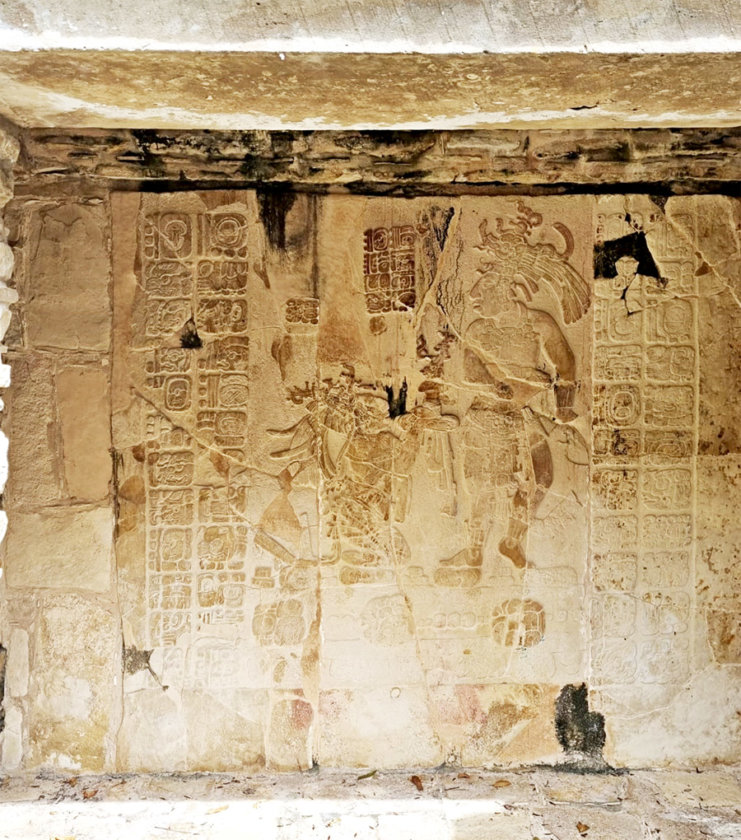
Se calcula que se ha explorado menos del 10% de la superficie total de la ciudad , pero ya hay mucho que ver en el sitio arqueológico.
Aquí tienes algunos de sus principales atractivos:
Templo de las Inscripciones
Es el templo más famoso y fotografiado de Palenque . Está muy cerca de la entrada, pero desgraciadamente no es accesible.
Aquí encontraron la tumba del rey K’inich Janaab’ Pakal , también llamado Pakal el Grande , junto con muchas ofrendas (joyas, objetos preciosos, etc.).
Si estás en la Ciudad de México , te recomiendo que vayas al Museo de Antropología .
Es un museo enorme y absolutamente fantástico, donde puedes encontrar una recreación de la tumba del rey Pakal con su famosa máscara de jade . ¡Merece la pena visitarlo!
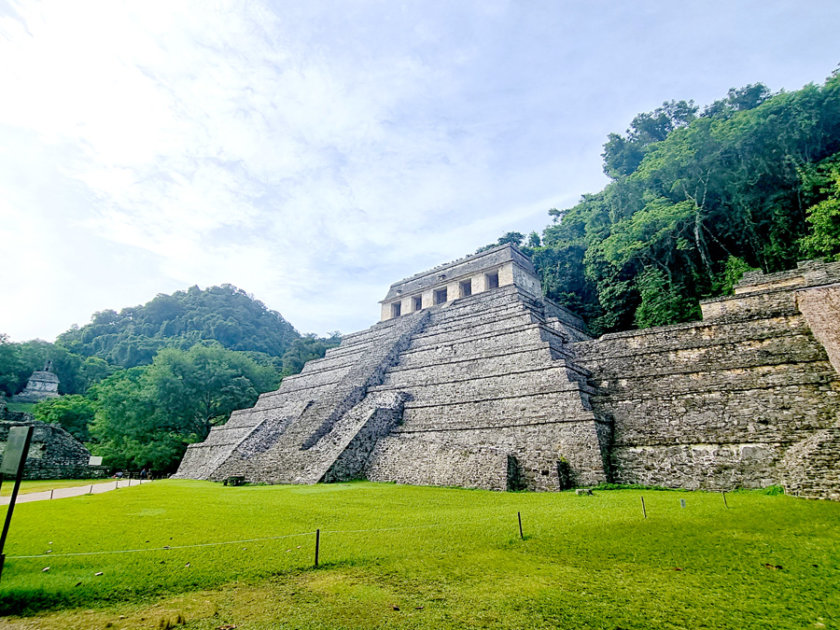
Se trata del complejo más grande de Palenque , que probablemente tenía funciones políticas, administrativas e incluso residenciales para la élite.
Es fácilmente reconocible por su torre de cuatro niveles , pero también hay patios, pasillos subterráneos, escaleras, etc.
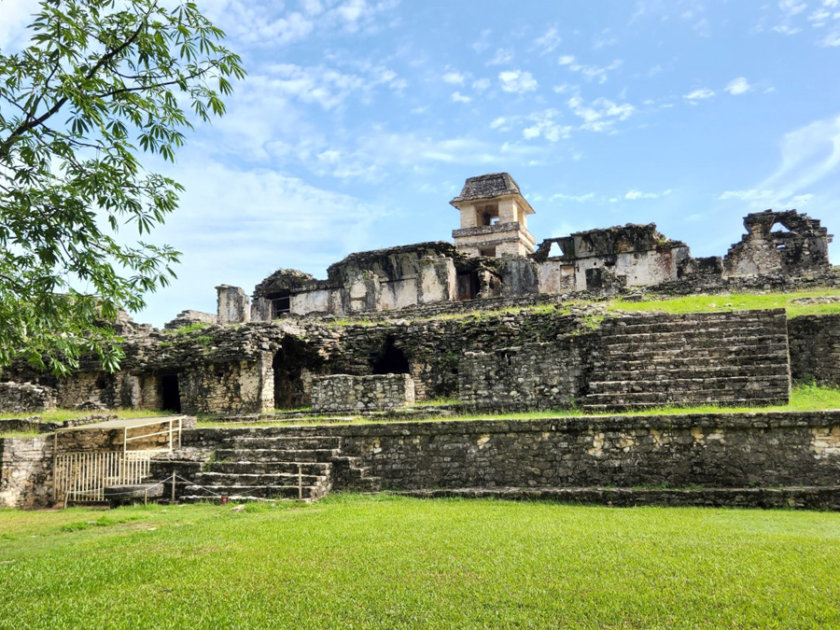
El Complejo de la Cruz
La vista desde la cima del Templo de la Cruz es magnífica: a la izquierda puedes ver toda la densa y magnífica vegetación, así como el Templo de la Cruz Foliada , luego a la derecha el Templo del Sol y el Templo XIV , con el Palacio al fondo.
¡Este es el mejor lugar para sacar fotos!
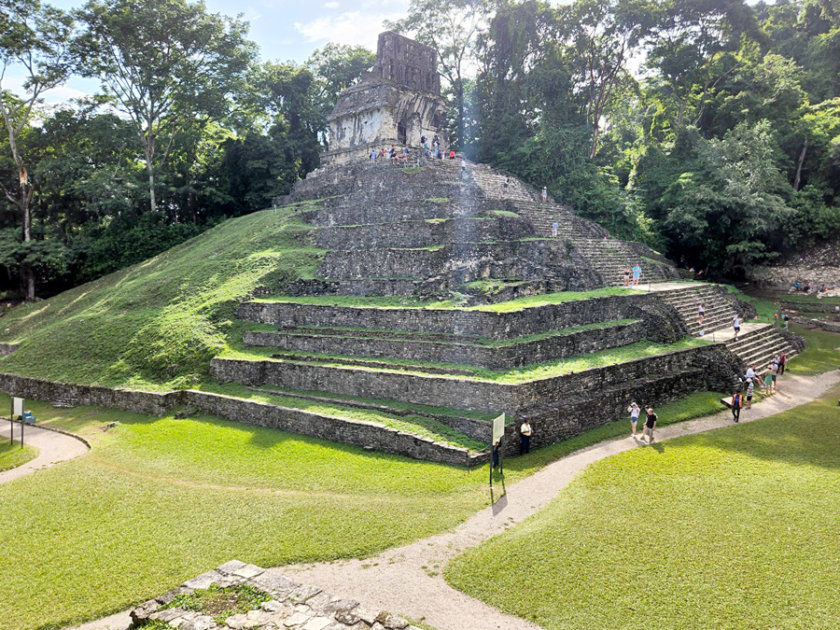
El Grupo Norte
Pasando por detrás del Complejo de la Cruz, y bordeando el Palacio , llegamos a la cancha de juego de pelota y al Grupo Norte .
Está formado por 5 templos, el más importante de los cuales es el Templo del Conde . Dato curioso: debe su nombre a Jean-Frédéric Waldeck , un explorador y cartógrafo francés bastante extravagante al que le gustaba que le llamaran «conde».
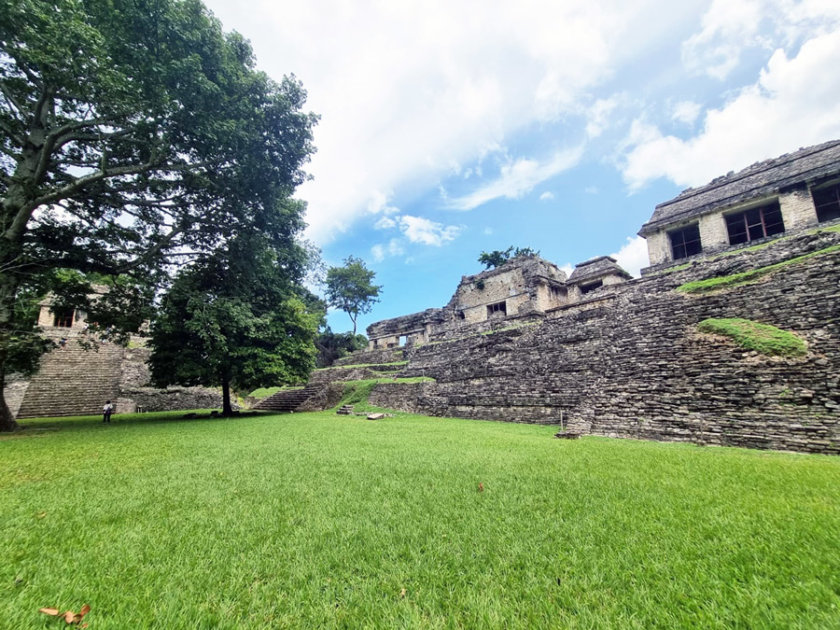
El camino en la selva
Para nosotras, este paseo por la selva empezó por casualidad, ya que un amiga tenía unos problemas digestivos (esas cosas que pasan en un viaje 😅 ) y tuvo que ir corriendo al baño.
La estaba esperando fuera y vi en un pequeño cartel escrito a mano que decía «cascadas» con una flecha. Pero la flecha parecía llevar a una zona de mantenimiento, así que no le presté demasiada atención.
Pero como finalmente toda la familia decidió ir al baño y yo ya me estaba aburriendo esperando, pregunté a dos trabajadores si podíamos tomar ese camino. Me contestaron: «Sí, lleva a la cascada».
Así que para terminar nuestra visita a Palenque, en lugar de volver a la salida, decidimos tomar el camino. ¡Y qué buena idea, porque nos encantó tanto como las ruinas!
El paseo nos permitió sumergirnos en la selva desa donde hay varias estructuras cubiertas de vegetación y enormes árboles.
Desde la cima, los monos aulladores se imponen con sus fuertes gritos, que son intimidantes al principio, y luego, cuando te acostumbras a ellos, simplemente fascinantes.
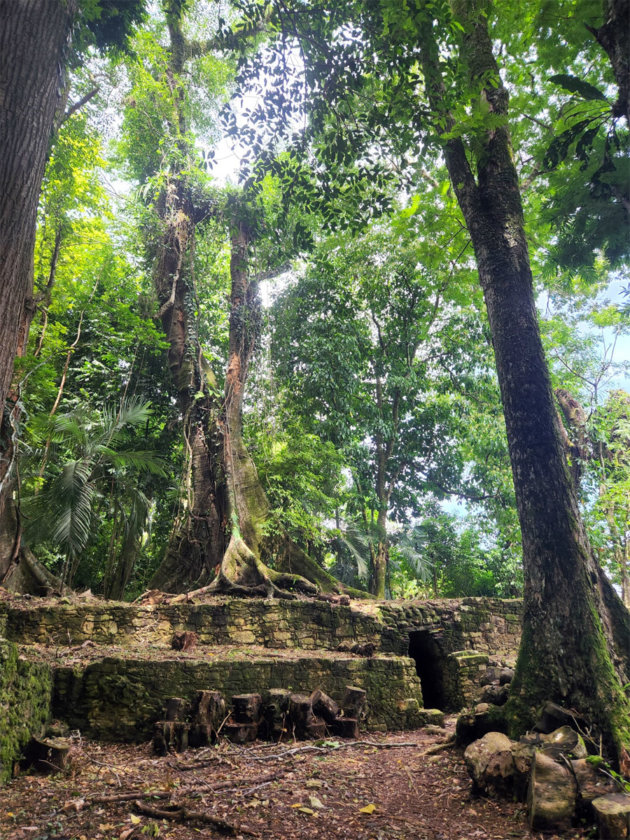
El Museo de Palenque
El Museo Alberto Ruz Lhuiller lleva el nombre del arqueólogo franco-mexicano Alberto Ruz Lhuillier , que descubrió la tumba del rey Pakal en el Templo de las Inscripciones en 1952.
Está considerado como uno de los museos más importantes dedicados al mundo maya con su colección de más de 200 artefactos encontrados en diferentes zonas de Palenque.
Hay 6 salas que presentan varios aspectos de la ciudad (la guerra, los dioses, la vida cotidiana, la vida política), así como tumbas, con una recreación de la Tumba de Pakal. ¡Esta es una visita obligada en Palenque !
- La entrada está incluida en el boleto de entrada al recinto arqueológico, pero ten en cuenta que el museo está cerrado los lunes
Este es uno de los sitios arqueológicos de México que más me gustan porque no es demasiado grande y, además ha conservado un cierto carácter salvaje con una hermosa vegetación que lo rodea.
Y lo mejor: nunca hay tantos visitantes como en Chichen Itzá o Teotihuacán
¡Éramos 3 treintañeras, con dos niñas de 14 y 11 años y a todas nos encantó!
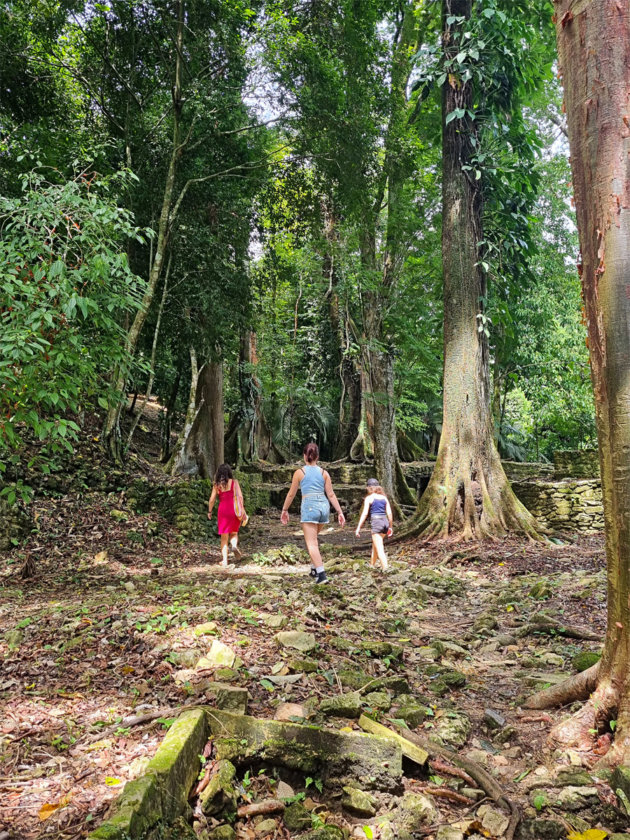
El mapa de Palenque donde puedes ver todas las estructuras accesibles al público.
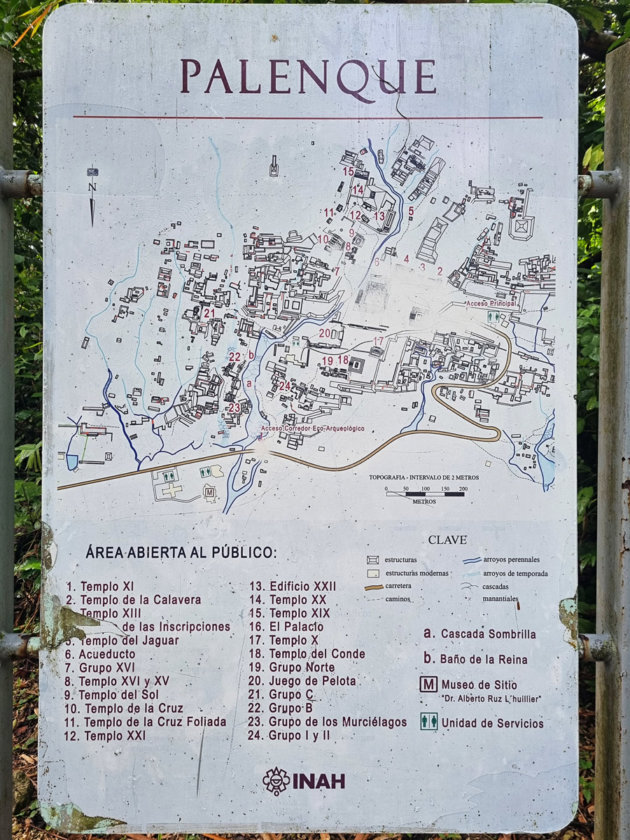
Tienes que comprar las entradas (2) en el edificio con techo rojo-naranja que encontrarás a la derecha de la carretera, con un gran estacionamiento. También ahí se encuentra el museo de Palenque.
Debes pagar la primera entrada (105 pesos para los adultos, o gratis para los niños menores de 12 años y los ancianos) que incluye el acceso a las ruinas de Palenque y al museo Alberto Ruz Lhuiller .
Luego, a tu derecha, encontrarás otra taquilla para pagar la segunda entrada , que es la del parque nacional (90 pesos o gratis para los menores de 13 años y para mayores de 60).
A continuación, tendrás que seguir subiendo por la carretera (1,5 km) hasta la entrada de las ruinas de Palenque .
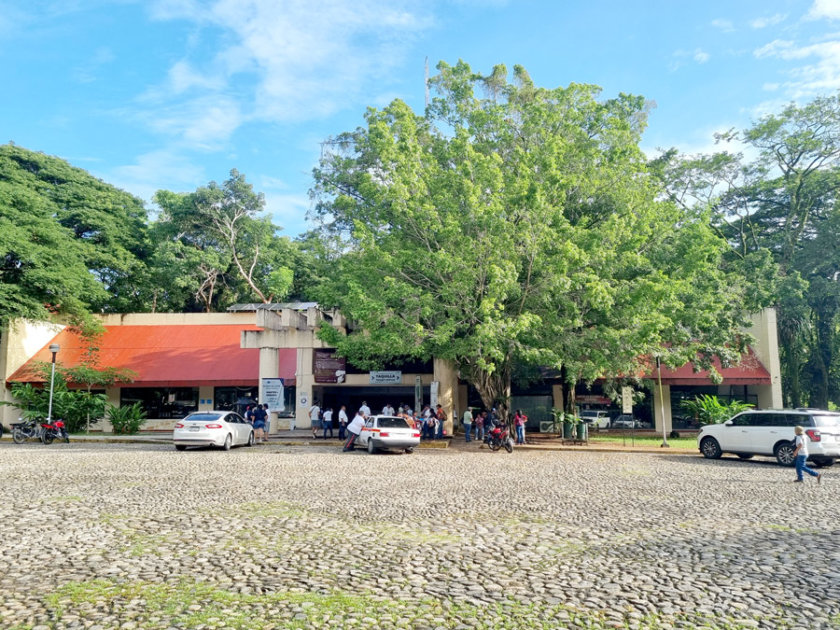
La zona arqueológica de Palenque está abierta de lunes a domingo de 8h30 a 17h (última entrada a las 16h) y el Museo de Palenque está abierto de martes a sábado de 9h a 16h
¿Cómo visitar las ruinas desde la ciudad de Palenque?
Las ruinas mayas de Palenque se encuentran a 9 km del centro de Palenque . Aquí te explico cómo llegar:
El sitio arqueológico de Palenque está a sólo 15-20 minutos en coche del centro de la ciudad de Palenque por la Carretera Palenque-Ruinas.
Mi consejo para visitar Palenque en coche:
- Hay dos estacionamientos en Palenque . El primero es fácilmente visible, a la izquierda, pero se llena rápidamente. Hay otro a la derecha, un poco escondido, al que se accede por un pequeño camino justo detrás de los aseos.
- El estacionamiento en Palenque es gratuito . Sí, es 100% gratuito y no te dejes intimidar por los que te dirán que tienes que pagar 50 pesos (supuestamente para vigilancia), lo cual es completamente falso . Di «no» con firmeza, y no te preocupes, es muy seguro, no le pasará nada a tu coche.
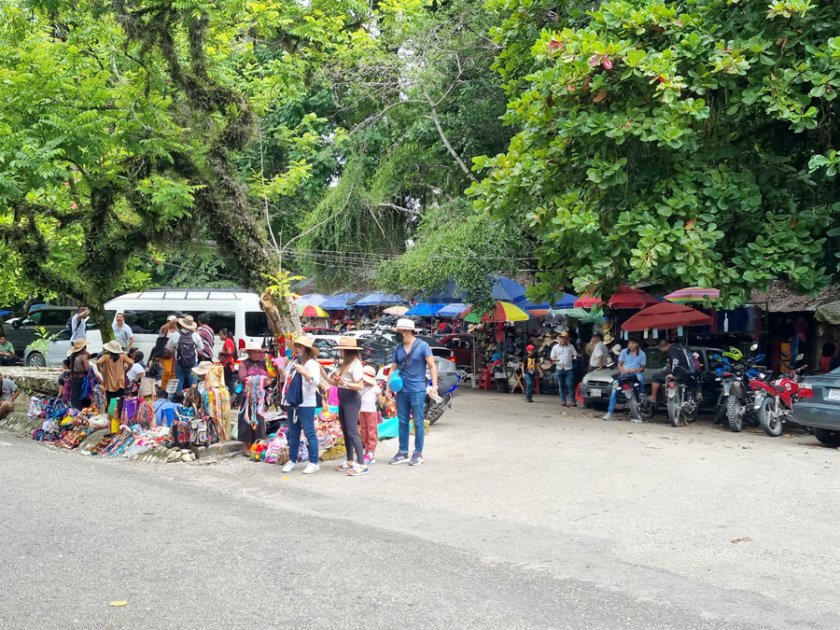
Tomar un tour a Palenque te permite visitar el sitio arqueológico sin preocuparte de la organización del día y del transporte.
Aquí tienes mis recomendaciones para los tours a Palenque , desde San Cristóbal de las Casas o directamente desde la ciudad de Palenque :
- Visita a la zona arqueológica de Palenque con recogida en tu hotel de San Cristóbal de las Casas , visita a las cascadas de Agua Azul y Misol-Ha:
La forma más barata de llegar a las ruinas es tomar un colectivo (furgoneta blanca).
Aquí hay una parada frente a la estación de autobuses ADO.
Puede que esté lleno cuando llegues a la estación de autobuses (sobre todo en días festivos y fines de semana), así que la otra opción es cogerlo directamente aquí
Se tarda entre 15 y 20 minutos, 25 pesos por trayecto.
El sendero de Motiepá se encuentra en el Parque Nacional de Palenque , muy cerca del sitio arqueológico. Así que, una vez que hayas pagado tu entrada a Palenque , ¡ya está incluida!
El acceso se encuentra a un lado de la carretera, donde hay un arco con un cartel de madera que indica «Sendero Motiepá».
Es un camino bien señalizado que te lleva por la selva hasta la pequeña cascada de Motiepá , con su piscina natural en la que puedes nadar, y al Templo Olvidado , un templo que formaba parte de la ciudad maya de Palenque.
El paseo es muy agradable y sólo nos encontramos con dos parejas en 1h30, por lo que realmente sentimos que estamos disfrutando de la selva al máximo, con el sonido de los monos aulladores. ¡Qué felicidad!
El único problema es que no hay baños, así que si visitas Palenque con niños , te sugiero que vayas antes, por ejemplo, a la zona arqueológica o al museo de la entrada.
Si buscas algo que hacer con tu familia en Palenque después de visitar las ruinas, ¡esta es la actividad perfecta!
Se trata de un gran parque gestionado por una asociación sin fines de lucro que rescata animales que han sido víctimas de la crueldad (tráfico ilegal, explotación).
La asociación trabaja con un equipo de veterinarios para alimentarlos, cuidarlos y rehabilitarlos en su entorno natural cuando es posible.
Además de rescatar a los animales, la asociación ha permitido que se regenere todo un ecosistema, plantando más de 10.000 árboles y plantas, y creando diferentes microclimas. Esta zona es ahora el hogar de muchos animales.
Hay dos caminos muy fáciles de seguir, uno corto y otro largo, que te permiten ver loros, cocodrilos, monos en los árboles, mapaches, flamencos, tapires, jaguares, etc.
La experiencia fue genial, sin embargo, hacia el final tuvimos que acelerar porque el parque estaba cerrando, así que te sugiero que calcules entre 1h30 y 2h de visita para disfrutarlo.
- Entrada: adulto 180 pesos, niño de 90cm a 1m30 60 pesos, niño menor de 90 cm gratis.
- También hay visitas nocturnas, pero se requiere reservar con un mínimo de 8 personas (450 pesos para los adultos, o gratis para los niños menores de 90 cm)
- Abierto todos los días de 9:00 a 18:00 (última entrada a las 16h30)
- Sitio web de Aluxes
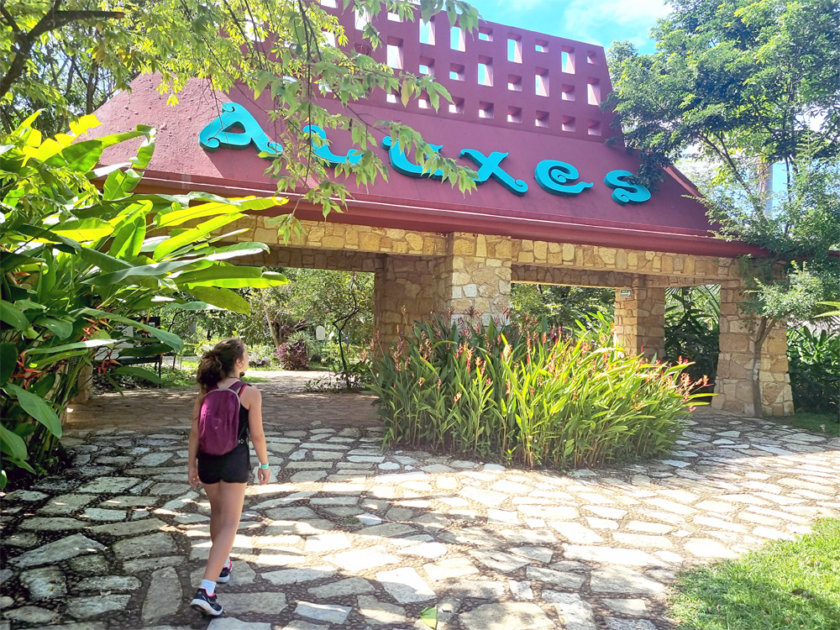
Se trata de un parque para familias , situado cerca de la zona arqueológica de Palenque.
Hay un lago, un restaurante, cascadas, puentes colgantes, miradores, y la posibilidad de realizar varias actividades (ciclismo, paddle boarding, kayak, tirolina, caminata guiada por los senderos)
- Abierto sólo los fines de semana de 9h a 17h
- Dirección: Km. 4 Corredor Turístico Palenque a Zona Arqueológica, 29960 Palenque, Chiapas
Aparte del sitio arqueológico y sus alrededores, no me pareció que hubiera mucho que hacer en Palenque .
Pero ya que hay que pasar por la ciudad de todos modos, ¡mejor aprovecharlo! Puedes ir al Parque Central , la plaza que representa el corazón de la ciudad.
Está la Parroquia Santo Domingo de Guzmán , el letrero colorido para tomar fotos, un mercado de artesanía y el Museo Textil Lak Puj Kul .
También puedes recorrer la Central Pte. , donde realmente hay de todo (tiendas, souvenirs, panaderías, farmacias, etc.).
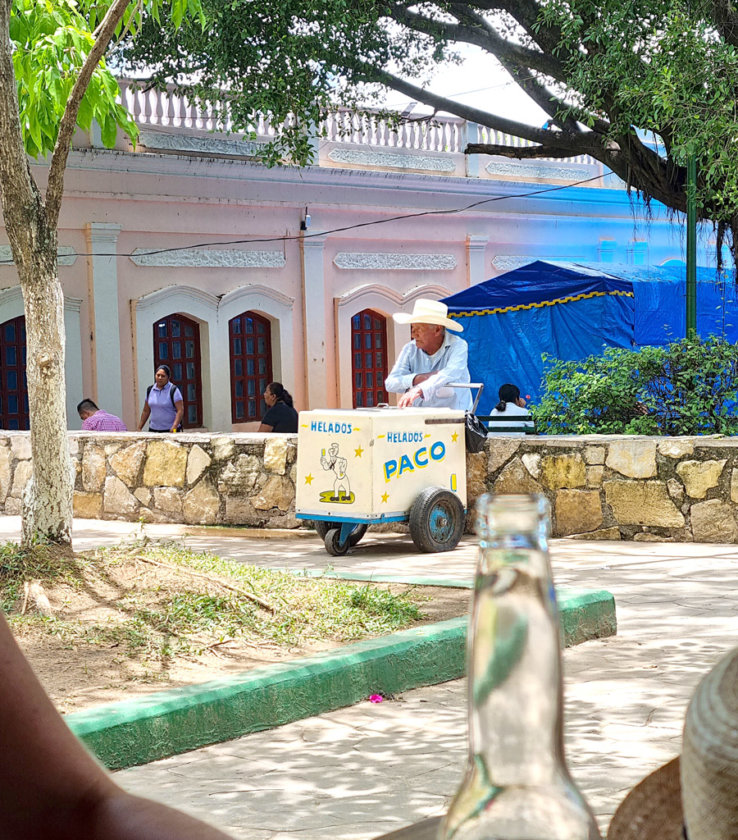
Además del sitio arqueológico y la ciudad de Palenque , ¡hay mucho que ver en los alrededores!
Entre las bellezas naturales de Chiapas , puedes visitar las Cascadas de Roberto Barrios , la Cascada de la Asunción , la Cascada de Misol Há , las Cascadas de Agua Azul , las Lagunas de Catazajá , las Cascadas de Welib Ja , o sumergirte en la Selva Lacandona descubriendo las comunidades de Nahá o Metzabok .
Si tienes algo de tiempo en la carretera entre San Cristóbal de las Casas y Palenque , te sugiero que te visites el sitio arqueológico de Toniná (cerca de Ocosingo).
No se le da mucha publicidad, pero es un sitio de 700 años de antigüedad con una enorme estructura de 7 pisos, llamada Acrópolis , que es más alta que la Pirámide del Sol de Teotihuacán , ¡y todavía se puede subir a la cima!
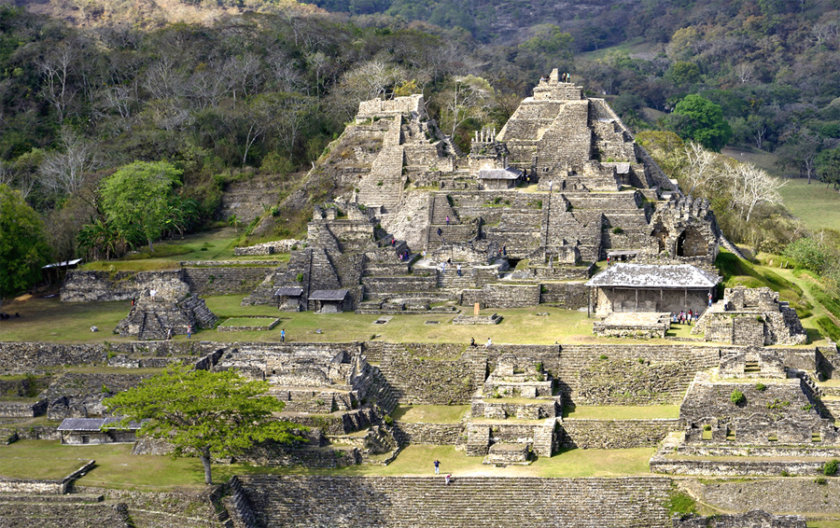
Palenque no es una ciudad muy bonita y, salvo algunas excepciones, los mejores hoteles de Palenque están fuera de la ciudad o incluso en la selva.
Aquí están mis recomendaciones de alojamiento , para todos los presupuestos:
- Mitico El Castillo : hotel insólito que parece de película, con un castillo que alberga una habitación, un dormitorio, una piscina y una cocina. ¡Este es el mejor hotel barato de Palenque, desde sólo 13€ en dormitorio o 27€ para una habitación!
- Cabañas Kin Balam Palenque : otro hotel económico en Palenque que tiene la ventaja de estar en la selva, con árboles frutales y sonidos de animales exóticos y a poca distancia de las ruinas . Con piscina y restaurante, ¡desde sólo 22€ en dormitorio o 40€ para una habitación!
- Aldea turística de Chan Kah : ideal para descansar durante un viaje familiar a Palenque que ofrece una excelente relación calidad-precio . Bungalows para 2 a 4 personas, 2 grandes piscinas naturales, bar, restaurante y spa. ¡Desde sólo 75€ por habitación!
- Villas Adriana : un oasis de tranquilidad ideal para parejas, con habitaciones y villas en la selva, piscina, hamacas, amplios jardines, terraza en la azotea. Delicioso desayuno incluido, ¡desde 80€ por noche!
¿Cómo llegar a Palenque?
Para llegar a la zona arqueológica , debes pasar primero por la ciudad de Palenque . Aquí te explico cómo llegar a Palenque:
- Si buscas cómo llegar a las ruinas desde la ciudad, ya he explicado más arriba cómo llegar al sitio arqueológico desde la ciudad de Palenque (haz clic en el enlace)
La ciudad de Palenque está a 6h30 de Bacalar , 4h50 de Campeche , 6h45 de Mérida y 5h10 de San Cristóbal de las Casas .
Por supuesto, estos son los tiempos aproximados del GPS, pero con los topes de velocidad, curvas y peajes, te sugiero calcular más tiempo cuando planificas tu día.
Teniendo en cuenta que Palenque está bastante lejos de otros destinos en México , te sugiero que dediques un día al camino en carretera y luego visites el sitio arqueológico a la mañana siguiente. De lo contrario, ¡será difícil disfrutar la visita!
Mi consejo En Palenque hay pocas gasolineras en comparación con la demanda, porque es la ciudad más grande de la zona. Muchas personas llenan varios botes, por lo que las colas pueden ser largas.
Muchos viajeros deciden alquilar un coche para visitar Chiapas. Y, efectivamente, ¡las ventajas son numerosas! Libertad, rapidez, flexibilidad de rutas y horarios…
Sin embargo, es primordial comparar las diferentes opciones para encontrar el mejor coche al mejor precio y estar así seguro de respetar tu presupuesto.
El mejor consejo que te puedo dar es pasar por Rentalcars.com por tres excelentes razones:
- Este sitio web te va a permitir de comparar fácilmente los precios de las diferentes agencias: ¡un medio rápido y sencillo para encontrar el mejor precio!
- La anulación a menudo es gratuita : de esa manera tienes derecho a cambiar de idea al último minuto
- Ofrece un seguro completo que es menos caro que en las otras compañías: es entonces una economía instantánea
Haz clic en el botón verde para encontrar tu coche en México :
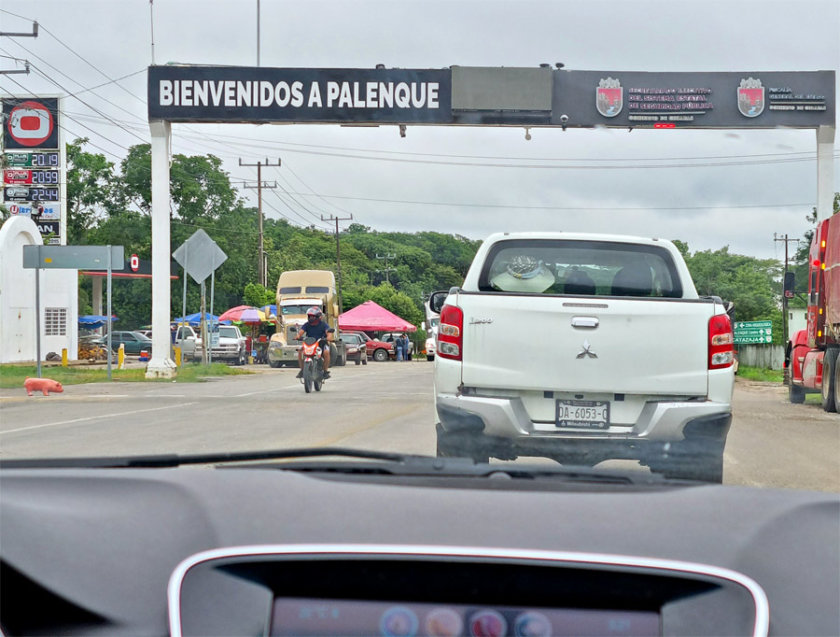
Desde San Cristóbal de las Casas
Se tarda 9h con el OCC (hay un autobús de día y otro de noche). Los autobuses prefieren evitar la ruta corta a Ocosingo y tomar en su lugar la ruta más larga para evitar los retenes.
Para no perder demasiado tiempo en tu viaje, te sugiero que tomes el autobús de noche. También puedes tomar un colectivo a Ocosingo (2h30, 90 pesos), y luego otro colectivo a Palenque (3h, 120 pesos)
Desde Tuxtla Gutiérrez
Primero debes tomar un autobús ADO u OCC hasta San Cristóbal de las Casas (1h30, varias salidas al día) y luego seguir la misma ruta anterior.
Mi consejo Muchos viajeros temen la ruta San Cristóbal-Ocosingo-Palenque , ya sea en coche o en colectivo, por las muchas cosas negativas que oyen, especialmente sobre los retenes.
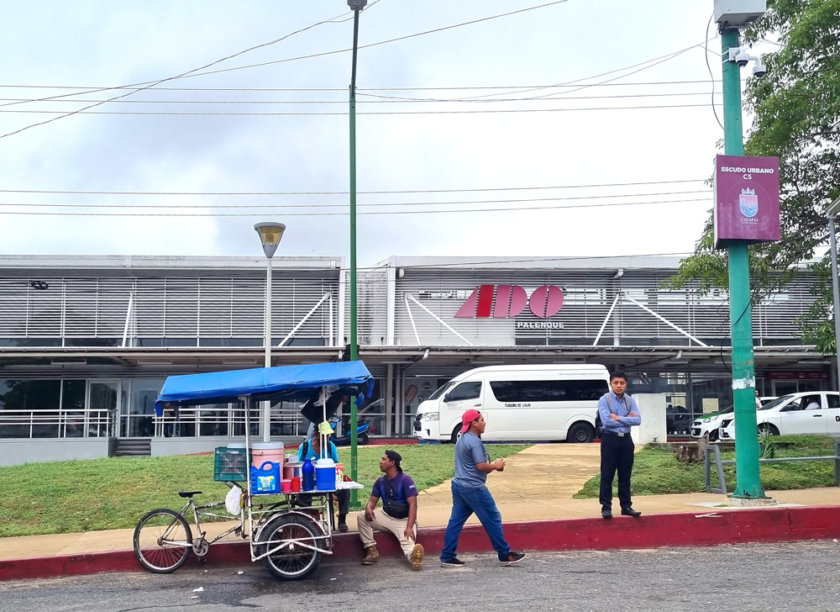
No hay aeropuerto en Palenque .
El aeropuerto más cercano a Palenque es el aeropuerto Carlos Rovirosa Pérez de Villahermosa , Estado de Tabasco (2 horas, 140 km).
Para ir del aeropuerto de Villahermosa a Palenque , se tarda unas 2 horas en coche o en el autobús ADO (punto de partida aquí ). Puedes consultar los horarios y comprar tus boletos directamente en el sitio web de ADO .
El aeropuerto de Villahermosa recibe vuelos de varios destinos de México como Ciudad de México , Monterrey , Guadalajara , Cancún , Mérida y Reynosa
Para encontrar un vuelo barato a Villahermosa o a cualquier otro lugar de México , te recomiendo que utilices nuestro servicio de comparación de vuelos en colaboración con Skyscanner. ¡Es la garantía de pagar el mejor precio!
A menudo se escucha hablar de la seguridad de la carretera entre Palenque y San Cristóbal de las Casas , y sobre todo cen los alrededores de Ocosingo.
No siempre es así, pero a veces miembros de las comunidades locales instalan un retén en la carretera y piden dinero.
Me pasó en mi ultimo viaje a Palenque:
En la carretera se creó mucho tráfico y nos preguntamos si había habido un accidente.
Como había una fila muy larga de coches completamente parados, era imposible ver dónde empezaba el atasco. Al cabo de unos 20 minutos, los coches empezaron a moverse de nuevo y fue entonces cuando nos dimos cuenta de que había un retén en la carretera.
Había una gran pancarta que indicaba las exigencias de las comunidades locales hacia el gobierno. Delante de cada coche que llegaba, colocaban un largo trozo de madera con clavos y pedían dinero para retirarlo.
El hombre que se acercó a la ventanilla nos dio un papel con las exigencias y nos pidió 100 pesos. Mantuvimos la calma , le dijimos amablemente que sólo teníamos 50 pesos, y entonces nos dejó pasar sin ningún problema.
Sólo nos pasó una vez en el camino, pero el principio es siempre el mismo: colocan una cuerda y te piden dinero, así que es muy importante llevarse siempre algo de cambio en efectivo . No es peligroso, pero lo que sí es molesto es que pierdes tiempo en la carretera y no tienes más remedio que esperar.
Más allá de los posibles retenes, lo cierto es que hay muchas curvas y como sólo hay un solo carril a cada lado , no puedes ir demasiado rápido (40-60km/h), así que calcula un poco más de tiempo que lo que te indica tu GPS…
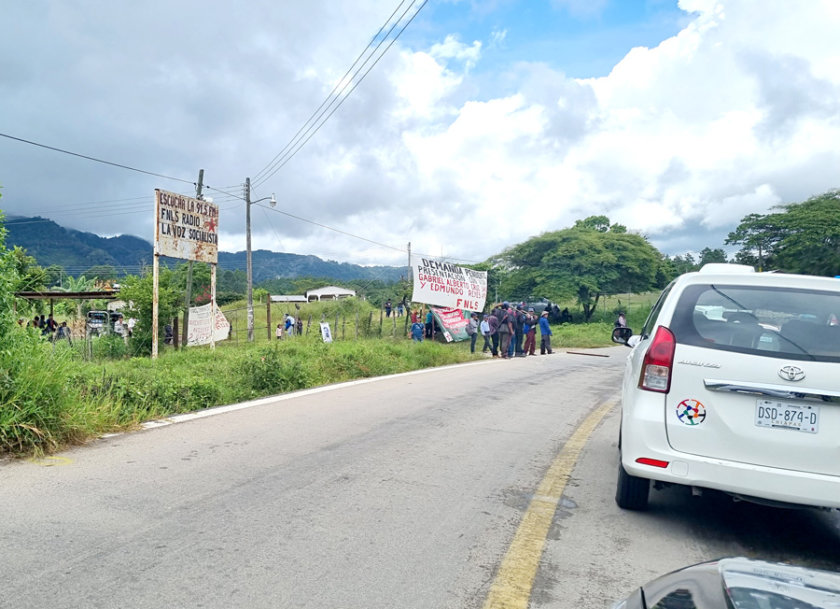
- Ha’Ki : Me gustó mucho este restaurante de Palenque , con su terraza cerca del parque central y su gran servicio. Unos 100-120 pesos por persona – desayunos, ensaladas, postres, crepes, sopas, carnes, sándwiches, pasta. ¡Los plátanos fritos con crema y queso están deliciosos!
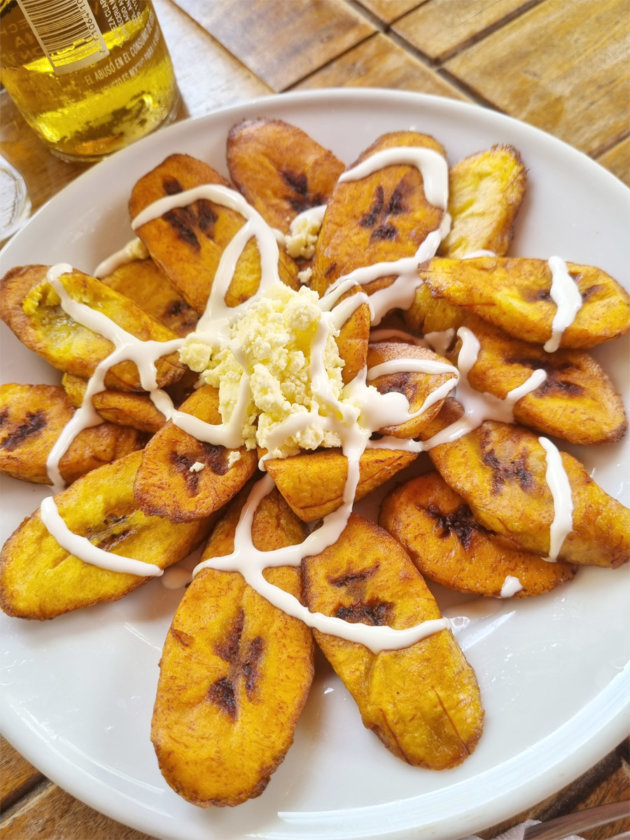
- Las Tinajas : si prefieres un restaurante más «completo», este lugar cuenta con una gran selección de platos con porciones bastante generosas (120-240 pesos). Me gustó mucho la milanesa de pollo con queso (190 pesos) y el caldo tlalpeño.
Es un restaurante cubierto y con una terraza (¡muy práctico en la época de lluvias! Justo nos tocó un fuerte diluvio…)
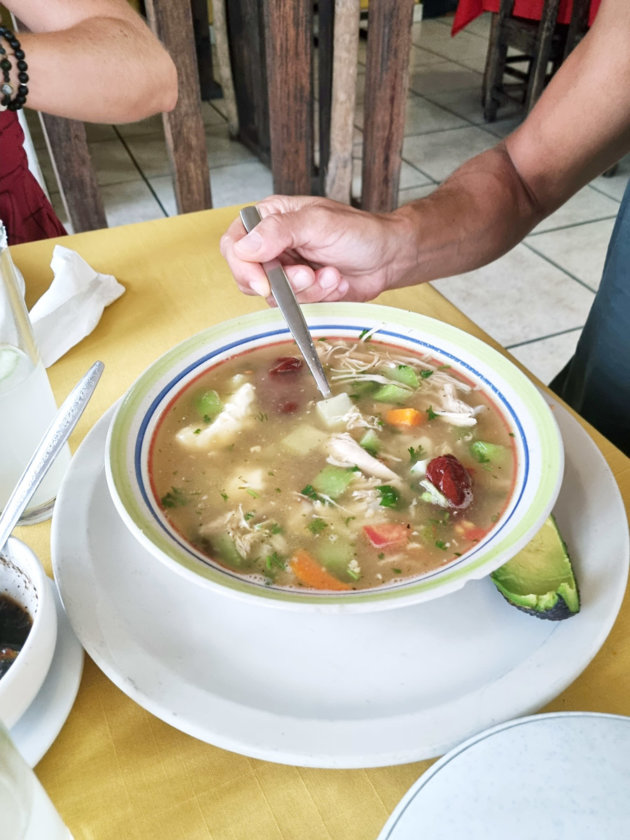
- Café de Yara : el lugar perfecto para probar el café orgánico de Chiapas, con un pequeño postre. ¡Y el servicio es muy amable!
PD: También me recomendaron el Café Fuga y el Café Jade como cafés para visitar en Palenque , pero no tuve tiempo de ir.
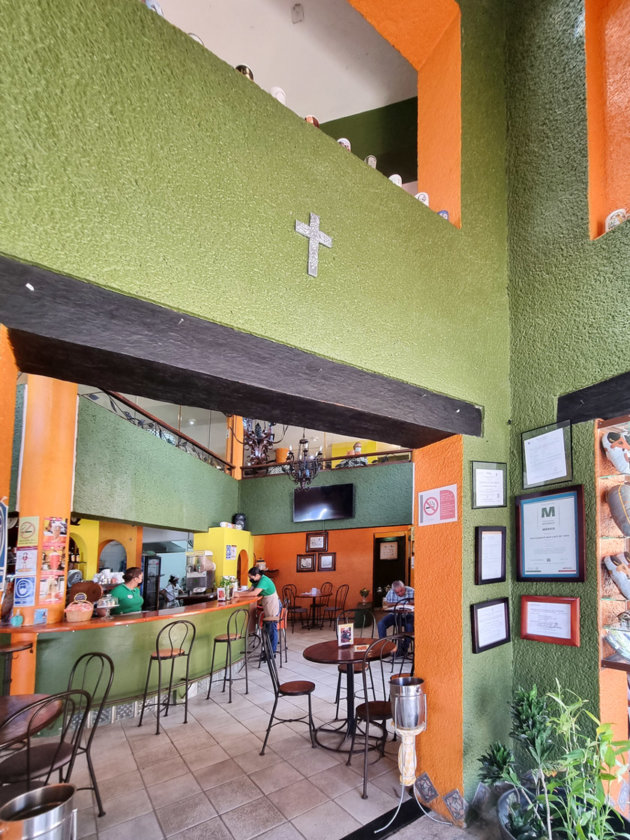
Independientemente de la temporada, en Palenque siempre hace bastante calor y humedad, aunque, por supuesto, ¡es aún más fuerte en la época de lluvias!
Esto es lo que hay que llevar para visitar Palenque:
- Una gorra o sombrero y bloqueador solar
- Un buen calzado cómodo para caminar y evitar resbalar en las escaleras del templo o en los senderos
- Repelente de mosquitos porque hay muchos en la selva
- Mucha agua , ya que hace calor, y después de subir y bajar los numerosos escalones de las diferentes estructuras, la necesitarás
- Un impermeable porque cuando llueve, ¡LLUEVE!
- Dinero en efectivo para la entrada a las ruinas, recuerdos, etc.
- Un buen seguro de viaje
¿Cuándo ir a Palenque?
La mejor época para visitar Palenque es de diciembre a febrero, porque el clima es más seco y no hace tanto calor.
Personalmente, estuve allí a principios de agosto, en plena temporada de lluvias , y efectivamente había mucha humedad.
La lluvia fue bastante abundante durante nuestros dos días en Palenque . A veces era un diluvio, a veces sólo había gotas, pero no nos impidió visitar las ruinas y caminar por los senderos.
Descubre mis artículos sobre México : Todas mis guias para ayudarte a planificar tu viaje a México
Qué Ver y Hacer en México: Los 35 mejores atractivos turísticos
- Chiapas : las 15 mejores cosas que ver y hacer
- Ca ñ ón del Sumidero : mi guía definitiva
- El Chiflón : c ó mo visitar las cascadas
- Lagunas de Montebello : la guía para visitar el parque
- San Cristóbal de las Casas : las 15 mejores cosas que ver y visitar
- San Juan Chamula : la guía para ir al pueblo místico de Chiapas
- Zinacant á n: c ó mo visitar este pueblo tradicional de Chiapas
- Itinerario : 1 semana en Yucatán – para planificar una estancia corta por la península
- Itinerario : 10 días en Yucatán – cómo ver lo más posible en poco tiempo
- Itinerario : 15 días en Yucatán + Dónde dormir
- Itinerario: 3 semanas en la Península de Yucatán – ¡para no perderte nada!
- Itinerario : 1 mes en Yucatán – ¡La ruta más completa!
- Road Trip en Yucatán : los mejores itinerarios para 7, 10, 15, 21 días y 1 mes
- Itinerario: 10 días por México – Ciudad de México, Chiapas y Yucatán
- Itinerario : 2 semanas por México (Yucatán + Chiapas)
- Itinerario : 3 semanas en México – Ciudad de México, Puebla , Oaxaca , Chiapas, Campeche, Yucatán y Quintana Roo
- Itinerario : 1 mes en México – Ruta recomendada de Ciudad de México hasta Cancún
- Road Trip en México : los mejores itinerarios para 10, 15, 21 días y 1 mes
¿ Usas Pinterest? ¡Pinea esta imagen!
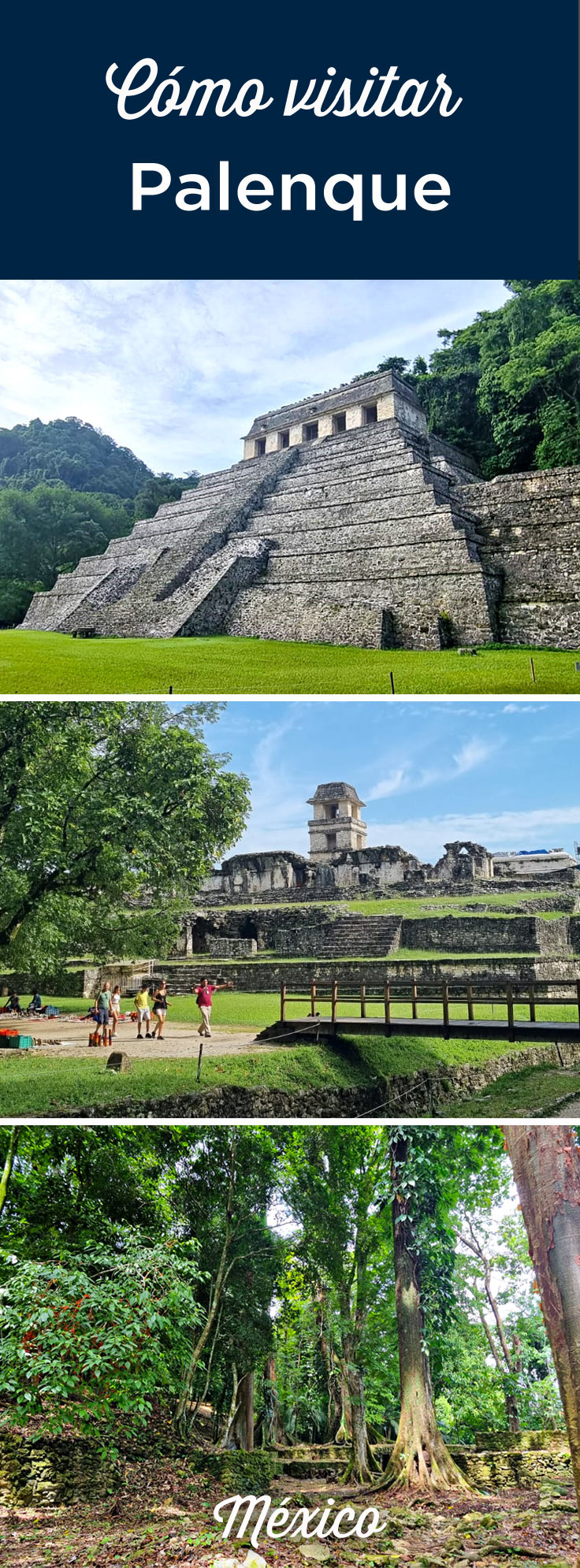
He creado este blog para darte toda la información que necesitas para planificar tu próximo viaje a México, sin importar tu presupuesto. Comparto itinerarios prácticos, mis consejos, así como recomendaciones hoteles y restaurantes. Y espero presentarte también algunos destinos estupendos de los que nunca se habla.
Related Stories
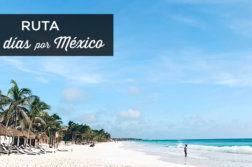
10 días en México: ¡el mejor itinerario!

Los 15 cenotes más bonitos que ver en México
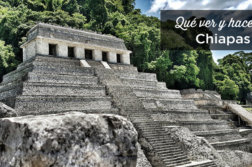
Qué Hacer en Chiapas (México)
Discussion 3 comentarios.
hola!Gracias por toda la info, sabes si es gratuito el domingo ?
Hola Sofia! Recuerdo haber visto que es gratuito para los nacionales y extranjeros con residencia, pero solo el 2do boleto, no recuerdo haber visto la info para el 1ro!
Gracias por toda la informacion,👌👏👏👏
Leave A Reply Cancel Reply
Your Name (required)
Your Email (required)
Your Website (optional)
Guarda mi nombre, correo electrónico y web en este navegador para la próxima vez que comente.
- Viaje a México
- todas nuestras guías

5 Best Archaeological Sites in Mexico
M exico is home to 179 different designated Archaeological Zones showcasing and preserving Mexican history and culture, especially Mesoamerican history. While a trip to any of these sites is worth taking during a vacation to Mexico, there are five that are known as some of the best in all of Mexico.
Chichén ltzá, Yucatán
Chichén ltzá is one of the most recognizable names of archaeological sites in Mexico. Located in the Yucatán, the zone offers a great example of Mayan history and culture. It was once a regional capital between 750 AD to 1200 AD and offers a great site where visitors can learn more about Mayan culture.The site includes El Castillo, a religious temple structure; the Great Ball Court, where the Maya would play a game not too different from modern soccer; the Cenote, where the religious leaders of the city would make sacrifices; the Market; the Temple of the Warriors and many other structures.
Monte Albán, Oaxaca
The Monte Albán Archaeological Zone is the most important in Oaxaca, showcasing the Zapotec people and history as their capital for about a thousand years. Today, it along with the city of Oaxaca, is a joint UNESCO World Heritage Site. The entire complex spans about four square miles, offering a great day trip opportunity for travelers visiting Oaxaca.The site offers plenty of structures to visit and learn about, from the Ball Court to the Great Plaza, the Palace and the mysterious square carvings called The Dancers, featuring a different art style reminiscent of the Olmec art style. The site also offers an indoor museum preserving artifacts, including those showcasing the Zapotec writing system.
Teotihuacán, State of Mexico
Teotihuacán is probably the most easily recognizable archaeological zone for Americans, since it’s long been recognized as a must-visit destination when traveling in or near Mexico City, the capital city of Mexico.It was one of the most important religious and cultural centers of the Mesoamerican world, though was abandoned following a fire during the seventh century AD. It became a place of legend for the Aztec following its abandonment.
Today, travelers visit the city to learn about the time before the Aztecs arrived in central Mexico. The UNESCO-designated archaeological site’s towering pyramids, like the often-photographed Pyramid of the Sun, are some of the largest in Mexico.
Palenque, Chiapas
The UNESCO-designated archaeological site of Palenque in Chiapas, the southernmost state in Mexico, is a definite must-visit for any true archaeology and history lover. The city is thought to have been built around the AD 300s.The Mayan site boasts a stunning 1,400 buildings, only ten percent of which have been explored, giving it a mysterious atmosphere.
Palenque is known for its incredible artwork and decoration. Notable buildings include the Temple of the Inscriptions, the Temples of the Cross, the Palace and the Aqueduct. The site also has its own museum housing more sensitive artifacts from the site.
El Tajín, Veracruz
Located along the eastern state of Veracruz is our last notable archaeological site and UNESCO World Heritage site: El Tajín . Famous as an important center following the fall of Teotihuacán, its most photographed structure is the decorative Pyramid of the Niches.The site offers a strong wealth of structures and archaeological remnants. It boasts 17 ball courts, 168 public buildings, 27 temples and 58 residences, along with 46 domestic houses.
The city has been largely undisturbed for five centuries, leaving it in a great state of preservation, making it a perfect choice for travelers heading out on a day trip in Veracruz.
For the latest travel news, updates and deals, be sure to subscribe to the daily TravelPulse newsletter.
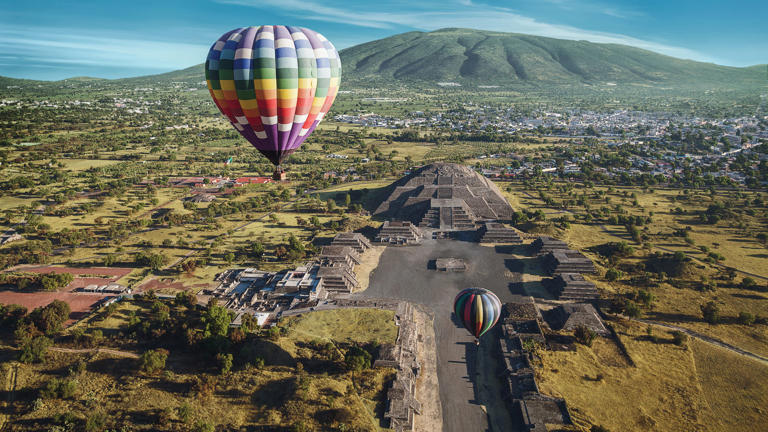

IMAGES
COMMENTS
Palenque has a tropical, hot, humid and rainy climate. The annual average temperature is 26.6°C; which rises to almost 30°C in May, the hottest month, and subsides a little in winter, when the thermometer reads 23°C in January. The heat can rage up to 36°C at times, while during cool highs, the temperature never drops below 17°C on the ...
Palenque: The Ultimate Guide to the Maya Ruins. Palenque, a national park and a UNESCO world heritage site, is one of the highlights of Chiapas.. I visited this region a few years ago, but I missed Palenque then. The truth is: Mexico is huge and you need time to enjoy a road trip through Chiapas. So this time, after leaving Bacalar, we decided to stop at Palenque before heading to San ...
2. Timing Your Visit. One of the best tips for visiting Palenque is to arrive early in the morning. The archaeological site opens at 8 am, so try to be one of the first people inside. You'll beat the crowds and the heat, but best of all, this is when the mist still covers the ruins.
Carretera a Palenque- Zona Archaeologica Km. 8, 29960 Palenque, Chiapas, Mexico. Phone +52 916 345 2721. Web Visit website. Unlike other archeological sites in Mexico, Palenque has a unique magic that resides in its natural location. Hidden in the deep Lacandon Jungle, these ruins, which date from 226 BC, remained a mystery for centuries ...
Palenque. Swathed in morning jungle mists and echoing to a dawn chorus of howler monkeys and parrots, the mighty Maya temples of Palenque are deservedly one of the top destinations of Chiapas and one of the best examples of Maya architecture in all of Mexico. By contrast, modern Palenque town, a few kilometers to the east, is a sweaty, humdrum ...
Palenque's climate. Palenque has a tropical, warm, humid, and rainy climate. The annual average temperature is 27 °C, which rises to almost 30 °C in May, the hottest month, and drops during the winter as low as 19 °C in January. During the summer, the heat can rise to 36 °C, while during the cooler lows, the temperature never drops below ...
Palenque (pronounced pah-LEN-keh) is a town in the Lacandon Jungle in Mexico's southeastern state of Chiapas. Although many travelers choose to visit as a day trip from San Cristobal de las Casas , Palenque makes for the perfect base for exploring the surrounding jungle and its treasures and it's worth staying a few days or more.
3. Yaxchilan and Bonampak Ruins . If you love the Palenque Ruins and want to see more ancient Mayan cities close to Palenque, Chiapas, then consider heading to Yaxchilan and Bonampak Ruins.Located around three hours south of Palenque, Mexico, visiting these ruins involves a boat trip down the Usumacinta River, which separates Mexico from Guatemala.
The archeological ruins of Palenque are actually located about 9km (5.6 miles) outside of the town. Along the road to the ruins are some scattered eco-lodges and resort villages, ranging from 2-star to 4-star luxury offerings — most of them having swimming pools and straw-roof-style cabañas. Some good options are:
Palenque. Palenque is one of the most notable cities of the Classic Maya period, seat of a powerful dynasty that dominated the mountains of northern Chiapas and the plains of Tabasco; territory that some researchers have now recognized as the kingdom of Lakamhá. The pre-Hispanic site is one of the most impressive archeological cities in the world.
Statue in Palenque, Mexico. Palenque is located in the state of Chiapas in Mexico.The small city of Palenque is a gem in the Maya Low Lands. The arcological sites and waterfalls in Palenque have made this an increasingly popular destination for travelers, but it's still off any mainstream map!. Palenque city often acts as a base for travelers to explore this lesser-known area of Mexico.
A Guide to the Palenque Ruins Why Visit the Palenque Ruins?. Visiting Palenque is one of the top things to do in Chiapas, for good reason. Palenque stands out from other Mayan ruins in Mexico because of its incredibly preserved structure in the middle of the jungle. The hieroglyphics found in the Palenque ruins also gave important insights for historians to understand what life was like during ...
Set in the heart of Chiapas, Mexico is the incredible Palenque Ruins. This outstanding example of an ancient Mayan city quite rightly holds UNESCO World Heritage Site status and is undoubtedly worth a visit as you travel through Mexico. ... So, combined, the total cost of a visit to Palenque Ruins in Mexico is $195MXN ($11USD). Visiting ...
Palenque Ruins, Chiapas are easily among my favorite Mayan sites in Mexico - so much so that I have visited three times!. Completely surrounded by the jungle, in the lesser visited state of Chiapas, what's special about these Mayan ruins isn't just the incredible state in which you'll find the pyramids and temples, but also the nature around it, that a variety of wildlife species ...
The ruins and surrounding forests form a national park, the Parque Nacional Palenque, for which you must pay a separate M$35 admission fee at Km 4.5 on the road to the ruins. Palenque sees more than 1000 visitors on an average day, and visitation spikes in the summer holiday season. Opening time is a good time to visit, when it's cooler and ...
Jungle-covered Ruins of Palenque in the Chiapas state are not on the usual backpacker's trail but are worth visiting. Read our guide on how to enjoy Palenque Ruins the best. ... 8 Best Ruins You Must Visit in Mexico. mexico Lucie January 22, 2024 what to see and do, travel guide, central america, history, mayan ruins, top attraction .
Palenque in Mexico is a Maya city in the state of Chiapas. Here is our complete guide for you to visit some unmissable attractions here! Chapultepec Castle tour just 35 USD/person - Confirmed departure on 05/08/23 +52-55-8526-6910 +1-201-500-1310 +44-7440-963840 [email protected]
Brief synthesis. The archaeological site of Palenque in the state of Chiapas is one of the most outstanding Classic period sites of the Maya area, known for its exceptional and well conserved architectural and sculptural remains. The elegance and craftsmanship of the construction, as well as the lightness of the sculpted reliefs illustrating ...
Maximilian / Adobe Stock. Located in the southern Mexican state of Chiapas, Palenque town and its nearby ruins are fantastic remains of the past that bring energy and life to the present. It is believed to have been constructed between 500 and 700 AD and holds so much history, ready for us to explore.
Chiapas is one of the most incredibly beautiful and historic states in all of Mexico. While San Cristobal de las Casas may be the cultural and touristic hub of the state, Palenque is the explorer's paradise. For travelers seeking adventure, few places in Mexico compare to Palenque. From hidden waterfalls to ruins buried deep in… Read More How To Visit Palenque Without A Tour | Chiapas, Mexico
Location: Chiapas, Mexico ( exact location here) Nearest town/city: Palenque. Best way to get there: Fly into Villahermosa, Tabasco, and take a 2-hour bus ride to Palenque. Hours: 8:30 AM - 5:00 PM every day except major holidays. Entrance Cost: $200 MXP (roughly USD 12) as of 2024.
Qué ver y hacer en Palenque. Palenque, parque nacional y patrimonio mundial de la UNESCO, es una visita obligada en Chiapas.. Aunque ya había visitado la zona hace unos años, todavía no había tenido la oportunidad de ver Palenque.Porque seamos sinceros: las distancias son grandes en México y hay que tener tiempo para emprender un road trip por Chiapas.
The ancient city of Palenque in the state of Chiapas, Mexico, ... Planning your visit Palenque is open seven days a week from 8 a.m. until 5 p.m. ... Primera Avenida Nte. Pte. 10, La Cañada ...
The UNESCO-designated archaeological site of Palenque in Chiapas, the southernmost state in Mexico, is a definite must-visit for any true archaeology and history lover. The city is thought to have ...